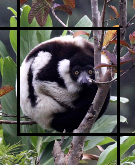What a way to end a phenomenal expedition - a wild Sri Lankan Leopard in Yala!
Expedition to Wild Sri Lanka
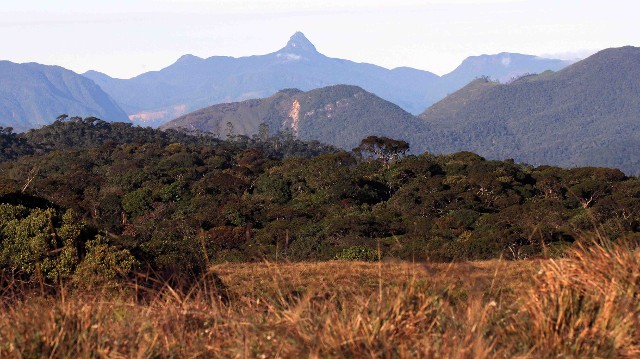
Horton Plains National Park, literally one of the "high points" for our expedition in Sri Lanka.
Take a look at our Pbase Galleries for more images of Sri Lanka!
Wildlife Expedition to Sri Lanka

http://www.srilankaecotourism.com/images/wild_life_map.gif
Sri Lanka has been on my radar for some time as a potential destination for a Smith Family expedition but never really came to be for various reasons, but after reading Fiona Reid’s impressive trip report in 2012 (linked here) about her trip that netted some 62 species of mammals, I was convinced that it was time for a trip to the island nation! So early in 2013, I started communicating with the Bird and Wildlife Team (website here) staff about a potential trip in the coming year. I read glowing reports about the company and one of their guides, Uditha, so I wanted to make sure to lock him in as soon as possible to ensure a productive trip. With a reputation like Uditha’s, he is in very high demand and scheduling his services was a bit of a logistical challenge, especially considering that I wanted to combine our time in Sri Lanka with a safari in the Western Ghats (trip report here). But with a bit of back and forth with their main spokesperson, Deepal, I was able to lock in an expedition with Uditha for about 12 days during the new year period of 2014.
So now we are on our second day of our Sri Lanka wildlife expedition and we’ve already netted 24 species of mammals! Hard to imagine a more productive trip in such a short time. Back in 2010 my buddy Jon Hall did a three-day trip with Uditha and netted some 32 mammals! (See Jon’s trip report here) There are few places on earth where such a species list can be amassed in such a short period of time. But it is important to give credit where credit is due – Uditha is a masterful mammal guide. He knows locations for dozens of species (all of which remain secret of course!) and he knows how to find them better than virtually anyone I have traveled with. On top of being very knowledgeable Uditha is excellent company and has lots of war stories to share to fill the quiet times during the expedition.
Nigambu Forest & Colombo New Year’s Eve
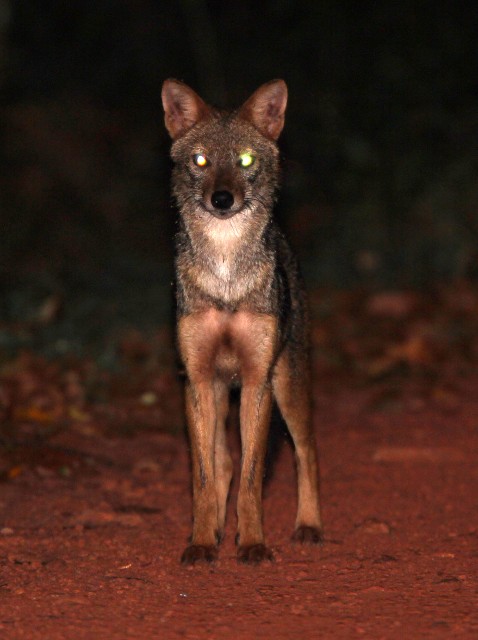
A curious Asian Golden Jackal stopping to take a look at us during our first evening's jungle trek.
After a very relaxing first day in Colombo, our first stop before enjoying a great New Year’s Eve party at the Gateway Hotel (5 stars all the way!), we made a quick trip to a patch of forest next to Nigambu about 1.5 hours outside of Colombo to attempt for the wet-zone subspecies of the Purple-faced Leaf Monkey and the Sri Lanka Giant Squirrel. The latter was found rather easily but we dipped on the leaf monkeys. We also searched in vein in for the elusive Red Slender Loris but the forest was quiet this evening. We caught a good look at a Golden Jackal and some Three-striped Palm Squirrels but not much else. Still though, it was nice to get out for our first trek in Sri Lanka. And the New Year’s Eve bash was great fun!
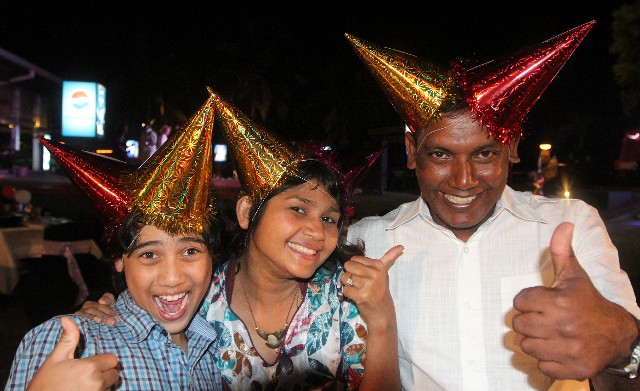
"Team Sri Lanka!" Cokie, Som and our amazing guide, Uditha are bringing in 2014 at an awesome bash in Colombo! A great start to our Sri Lanka wildlife adventure.
Sirigiya
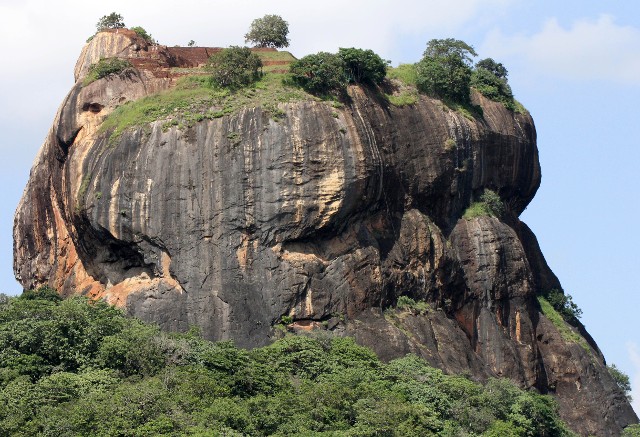
Stunning Sirigiya Rock Fortress
Brown (or is it Golden?) Palm Civet (Paradoxurus montanus)

One of our great civets seen while at Sirigiya. Initially we thought this was a Dry Zone Golden Palm Civet, but upon closer inspection, we believe it might be a young Brown Palm Civet (Paradoxurus montanus). Feel free to opinionate!
Our next day we were off for Sirigiya for three full days. Uditha assured us that the region was worth three days and now we are finishing our second day (less the upcoming night drive) with at least 24 species! Some good sightings as well! There are several locations known by Uditha that will net several species of bats including such highlights as the Rufous and Woolly Horseshoe Bats as well as Long-armed and Black-bearded Tomb bats. We had easy luck finding the dry-zone subspecies of the Purple-faced Leaf Monkeys and Sri Lanka Giant Squirrel. Dry Zone Toque Macaques and Tufted Langurs were both very easy to spot during virtually all times of our stay at the very nice Sirigiya Village Lodge. The garden of the lodge is a great place for spotting wildlife of all sorts.
The standard routine while in Sirigiya was relaxing during the morning. We’re not traditional mammal watchers in the sense that we often don’t get out very early in the AM…over the years we’ve found the cost/benefit ratio is low, so why not relax….and our species lists are always as good or better than those who work much harder….Hey! We’re on vacation after all!!! After a relaxing morning, lunch, followed by a late afternoon trek or road stroll looking for wildlife, followed by an early evening spotlighting at a site known by Uditha to be rich in mammals, followed by dinner and then a late-night (all night!) safari cruising the surrounding countryside searching for what ever we could find.

Uditha enjoying some late afternoon light in one of the batholiths in Sirigiya.

We are so lucky that Cokie is so flexible. He loves sleeping on our night safaris and is easily woken up with we find something interesting! And then back to sleep....
Our first early evening activity was at a small patch of secondary forest outside of Sirigiya where we had outstanding luck spotting three Grey Slender Lorises and several Yellow-spotted Chevrotain in the small, densely wooded grounds. At least two of the lorises gave us good views but outstanding photo-ops were a bit hard to find. What ever you think about lorises, they are much faster than one would expect. Our late evening safari netted us at least three more Grey Slender Lorises as well as a nice Jungle Cat and a few jungle cat/domestic hybrids. We spotted several Indian Gerbils crossing the road as well. Two civet species were seen – the Small Indian and the Asian (Common) Palm were the two that were spotted but too fleeting for a decent image. We also spotted Wild Boar, Golden Jackals, many more Yellow-spottedChevrotains, Spotted Deer and our very first wild Sri Lanka Elephant! Sometime around 2AM we made it back to our lodge for a rest….
Grey Slender Loris (Loris lydekkerianus nordicus)

Our first Grey Slender Loris seen during our trek in one of the forest reserves in the outskirts of Sirigiya. Getting high quality images was a bit of a challenge, though.
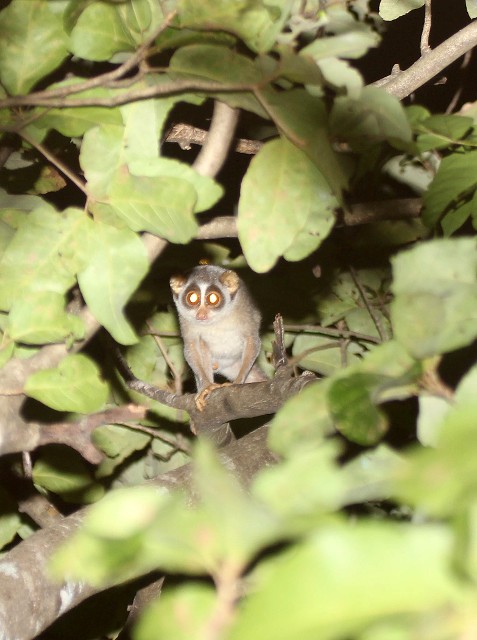
By the end of our trek, we spotted at least three to four individual lorises, as well as a few other critters!
White-spotted Chevrotain (Moschiola meminna)

White-spotted Chevrotains were commonly seen throughout Sri Lanka. We spotted at least 6-8 our first night out in Sirigiya.

Som's capture of a White-spotted Chevrotain in Sirigiya.
So for the next two days and nights, we repeated the above with good success. By the time we left Sirigiya, we had well over 30 mammal species under out belts, with the highlights including Jungle Cat, two color morphs of the Sri Lankan Brown Civet, Indian Crested Porcupine, Sri Lankan Wild Boar, numerous bat species (that were easily identified by flight pattern, sound and form by Uditha, the most impressive mammal guide of all times). But there is little doubt that the low and high point for Sirigiya was the impressive Dry Zone Golden Palm Civet spotted by Som. Unfortunately, due to some awkward driving by our local driver, I missed it completely when he failed to hear our commands to stop multiple times, and when he finally did hear us, he reversed so far as to put me directly in a bush so I was unable to see it. But at least Som and Uditha got amazing views of this elusive and controversial species.
Brown Palm Civet (Paradoxurus montanus)

We had a very cooperative Brown Palm Civet observing us during our last night in Sirigiya.
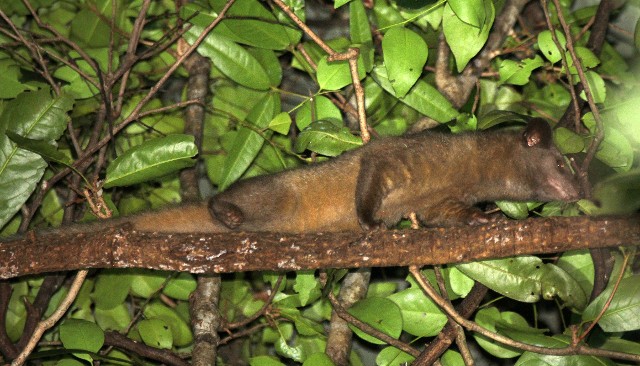
As I stated above, we went with Brown Palm Civet for the list but this one sure strikes me as having a fair amount of "golden" in him....Feel free to give some input!
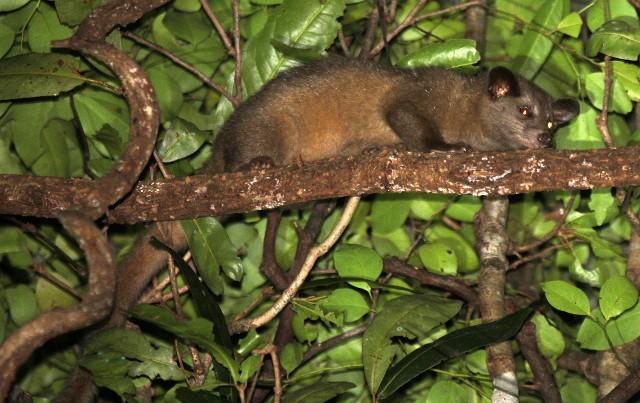
A Golden or Brown Palm Civet in Sirigiya. We spotted an indisputable Dry Zone Golden Palm Civet on our last drive so at least Som and Uditha nailed the species. Somehow I &#$^#% missed it!
Black-naped Hare (Lepus nigricollis)

We spotted this exact individual of Black-naped Hare every night we were in the Sirigiya area. He had is own patch of forest...
Indian Gerbil (Tatera indica)
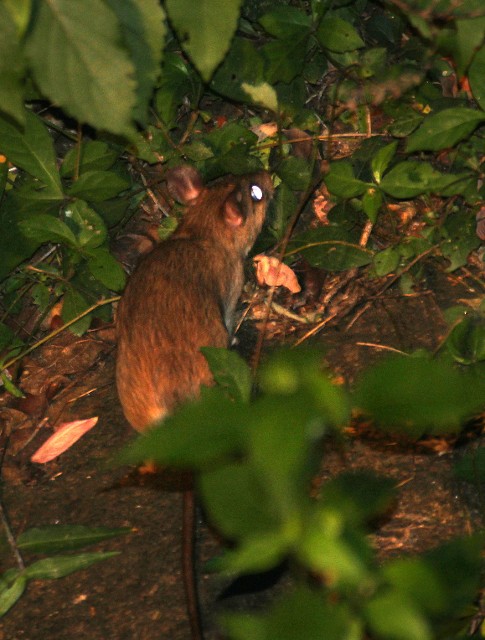
While spotlighting our way through the back woods of Sirigiya, we spotted many Indian Gerbils.
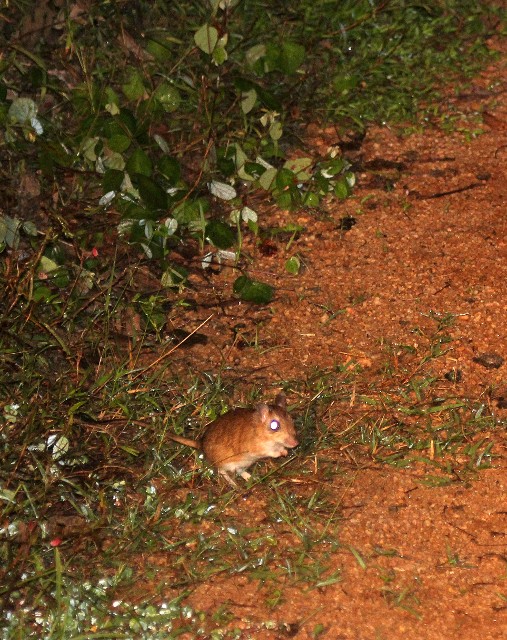
Our favorite gerbil! (The one that stayed still long enough for a picture!)
White-tailed Wood (Blandford’s) Rat (Madromys blanfordi)

What a cutie! This White-tailed or Blanford's Rat was seen in the folds of a giant Ficus deep in the forest interior.
Wild Jungle Cat (Hybrid)

While we did in fact spot at least one pure wild Jungle Cat here, we were mostly seeing feral hybrids throughout the Sirigiya region. It would appear that about 75% or more of the wild felids in Sri Lanka are hybrids. This is a troubling situation for sure.
Tufted Langur (Semnopithecus priam thersites)
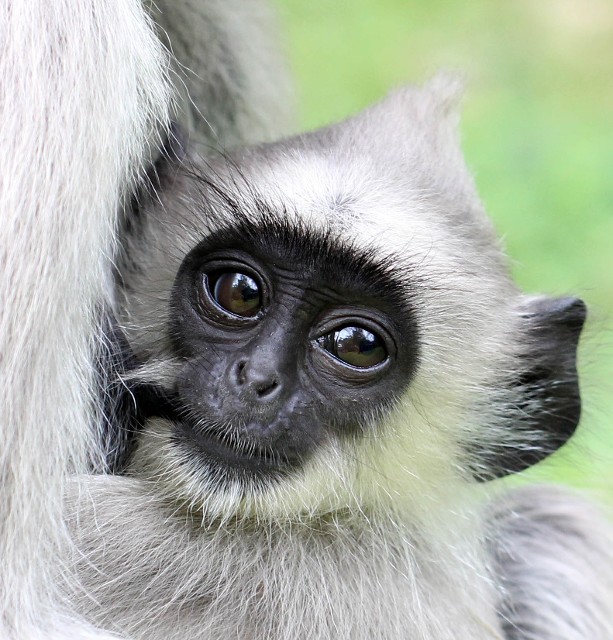
Sirigiya is a great place for mammals. We spotted at least 30 species by the time we left the region after only three days. It was particularly easy to spot good numbers of Tufted Langurs.
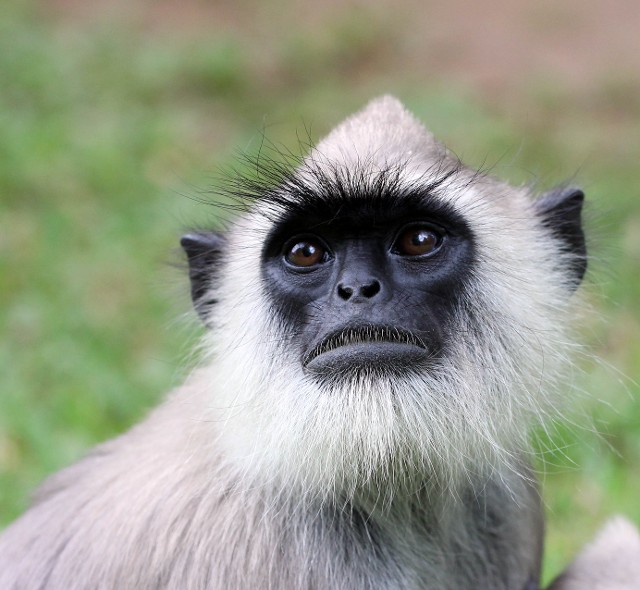
Tufted Langur in Sirigiya...
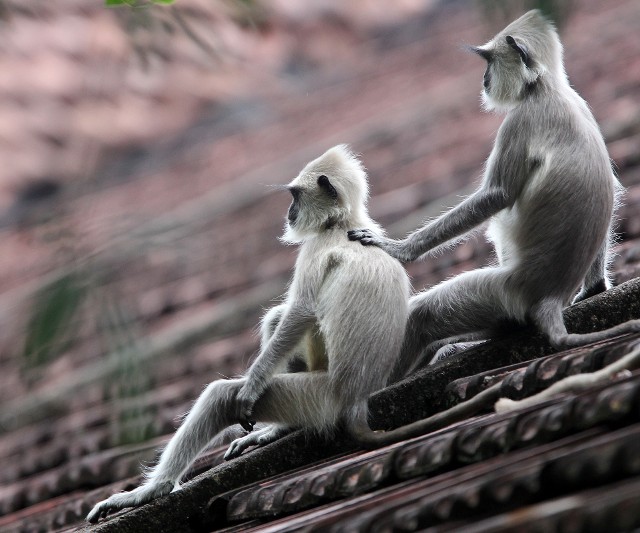
Best buds!
Dry Zone Purple-faced Leaf Monkey (Semnopithecus vetulus philbricki)

Sirigiya is a great place to see the Dry Zone Purple-faced Leaf Monkeys as well.

There are at least four accepted subspecies of Purple-faced Leaf Monkeys in Sri Lanka. Sirigiya is home to the Dry Zone subspecies.
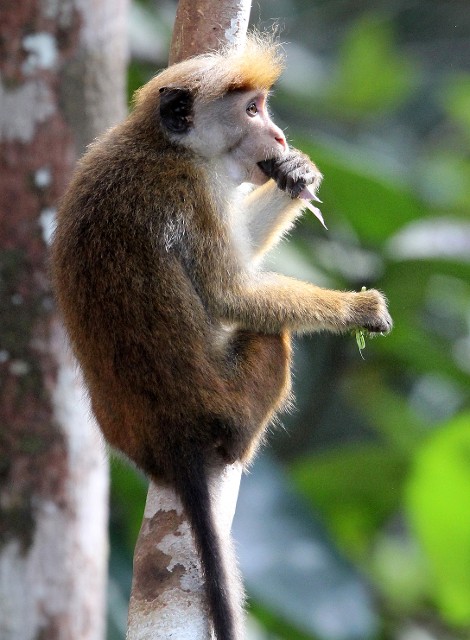
The Dry Zone Toque Macaque was spotted in good numbers in Sirigiya.
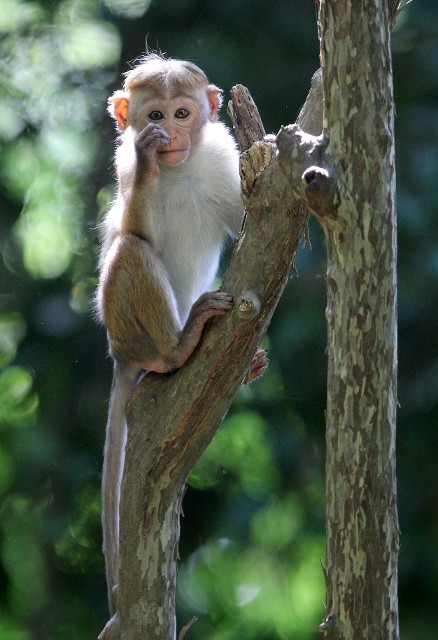
A young Dry Zone Toque Macaque in Sirigiya.

Love that doo!
Dry Zone Sri Lanka (or Grizzled) Giant Squirrel
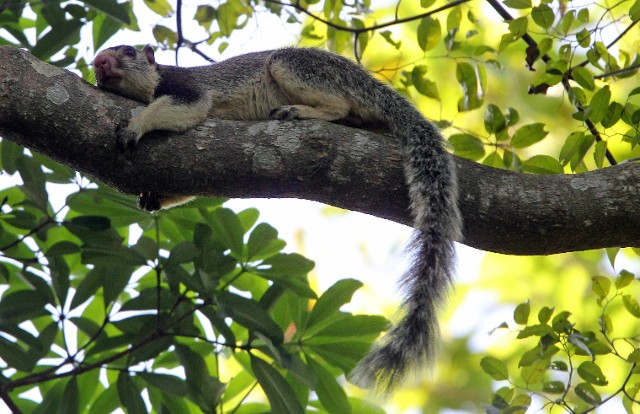
The Dry Zone Sri Lanka (or Grizzled) Giant Squirrel was spotted fairly easily but they were very shy in Sirigiya.

The Common Three-striped Palm Squirrels were everywhere in Sirigiya.
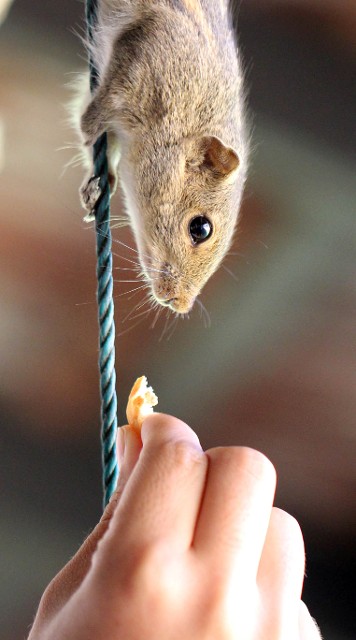
The Common Palm Squirrels at the Sirigiya Lodge were great comic relief.

Great little comedians....Just hangin' around!
Great Leaf-nosed Bat (Hipposideros lankadiva)
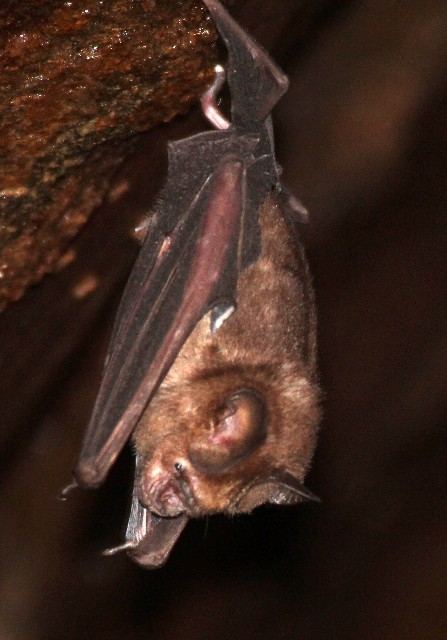
Sirigiya is bat-central. This Great Leaf-nosed Bat was seen under a larger boulder during a late night forest trek.
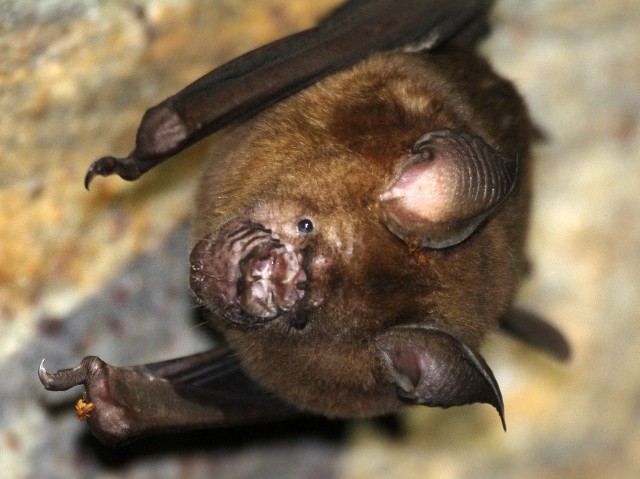
Great Leaf-nosed Bat
Cantor's Leaf-nosed Bat (Hipposideros galeritus)
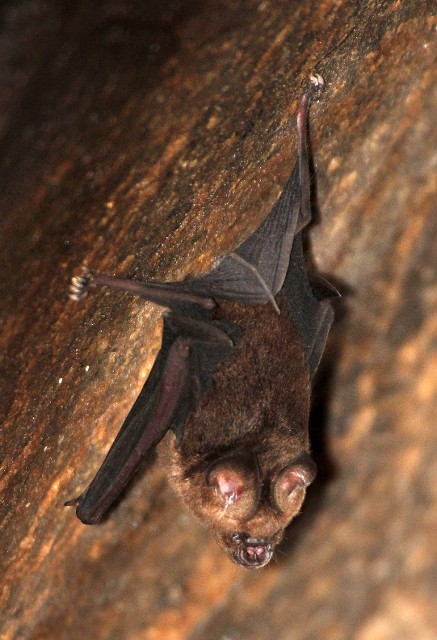
A nice Cantor's Leaf-nosed Bat (Hipposideros galieritus) spotted in a temple in Sirigiya.
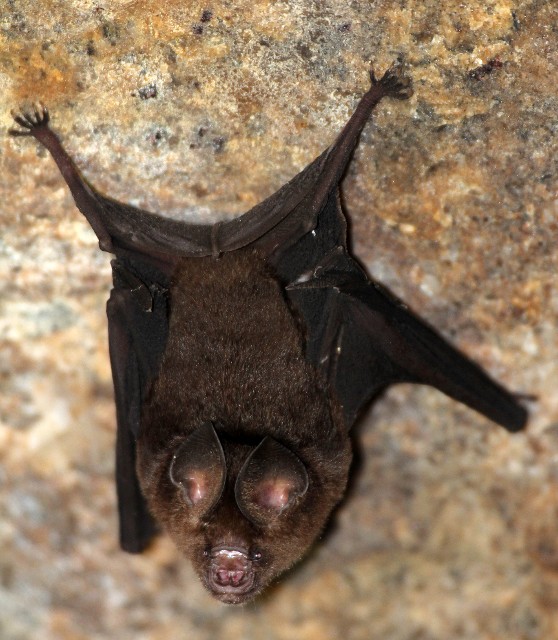
Cantor's Leaf-nosed Bat (Hipposideros galeritus)
Schneider’s Leaf-nosed Bat (Hipposideros speoris)

A Schneider’s Leaf-nosed Bat (Hipposideros speoris) was sitting nearby.

Evidently the way to tell the difference between the Cantor's and the Schneider's Leaf-nosed Bats is the number of frills. Cantor's has two! I am having a hard time counting them on this one...
Long-armed Tomb Bat (Taphozous longimanus)

Long-armed Tomb Bats were spotted very early on our first evening in a meditation cave at an ancient Buddhist temple. They were shy...
Black-bearded Tomb Bat (Taphozous melanopogon)

Black-bearded Tomb Bats in another temple at Sirigiya.
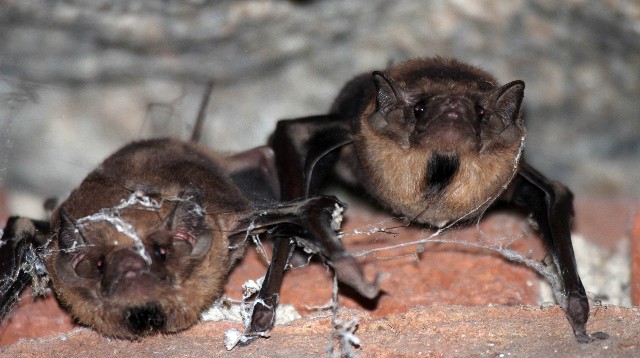
Black-bearded Tomb Bat (Taphozous melanopogon)
Rufous Horseshoe Bat (Rhinolophus rouxii)
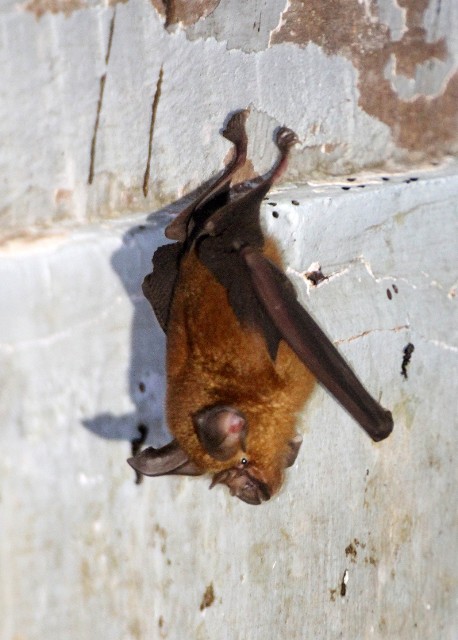
Rufous Horseshoe Bat at Sirigiya.
Woolly Horseshoe Bat (Rhinolophus beddomei)
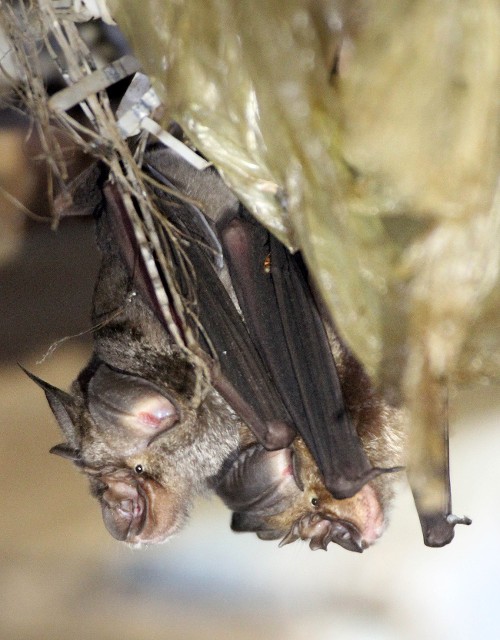
Woolly Horseshoe Bat
Asiatic Long-tailed Climbing Mice (Vandeleuria olearcea)
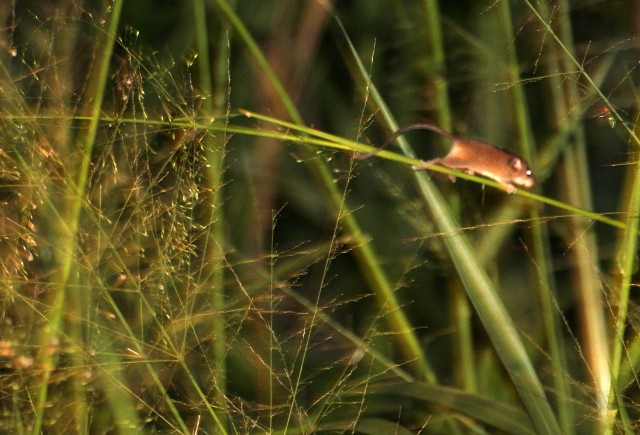
The grasslands in the greater Sirigiya area were crawling with Asiatic Long-tailed Climbing Mice (Vandeleuria olearcea).
On our last day, we treated ourselves to a little tourism with a stroll through the Sirigiya Rock Fortress ruins which were extremely impressive and should not be missed if you are in the area on a wildlife safari. The 1500-year-old fortress is situated on one of the impressive granitic batholiths in the area and surrounded by grounds that would rival one of the major temple complexes in Angkor. We even nailed a couple more bat species and some decent views of the Dry Zone Sri Lankan Giant Squirrel during our stroll of the grounds of the ruins.
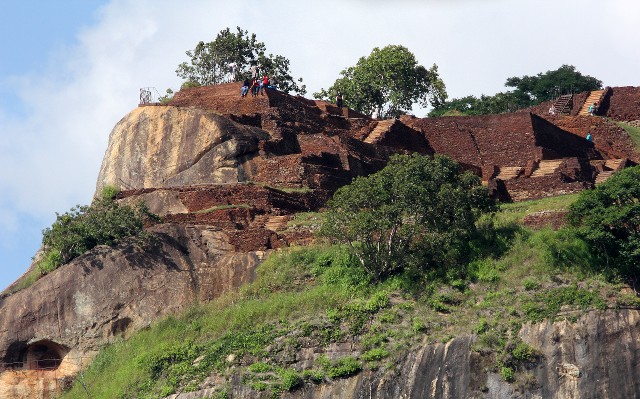
Sirigiya Rock Fortress is a very impressive site and should be visited by all means.
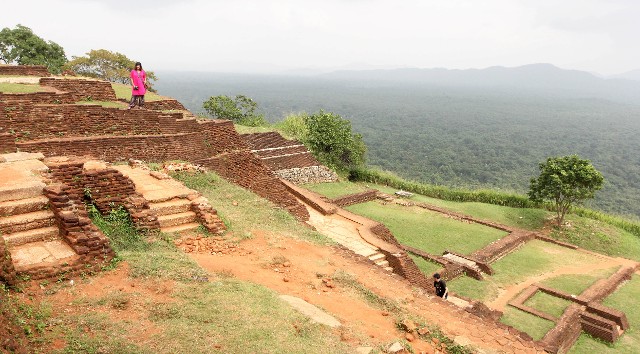
We enjoyed our morning stroll through the ruins.

Sirigiya Rock Fortress
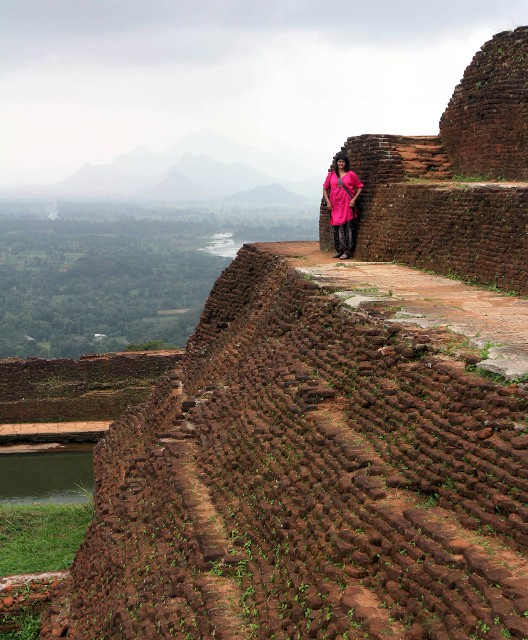
Som in the fortress!
Nuwara Eliya & Horton Plains National Park
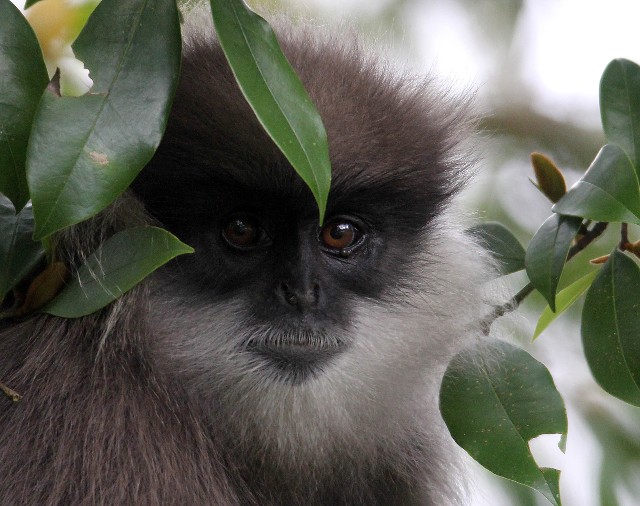
There is little doubt that seeing these "Bear Monkeys" up close at the Nuwara Eliya Botanical Gardens was a highpoint of this stop.
Our next destination was Nuwara Eliya & Horton Plains National Park. Situated high in the tea-producing region of Sri Lanka. The species of interest were the Dusky Striped Squirrel, Brown and Stipe-necked Mongoose as well as some photo-opps for Sambar, birds and an interesting reptile, the Rhinoceros-horned Lizard. For the Sri Lanka Dusky Striped Squirrel, we spent quite a bit of time during our day and a half in the area searching fruitlessly for this damn little rodent. Sadly up to now, we’ve only been treated to calls from the species even though it was one we were “supposed” to see quite easily. That’s often how it works – there seem to always be species that should be relatively easy yet are elusive once you are on the ground.
Bear Monkey (Montane Purple-faced Leaf Monkey) (Semnopithecus vetulus monticola)
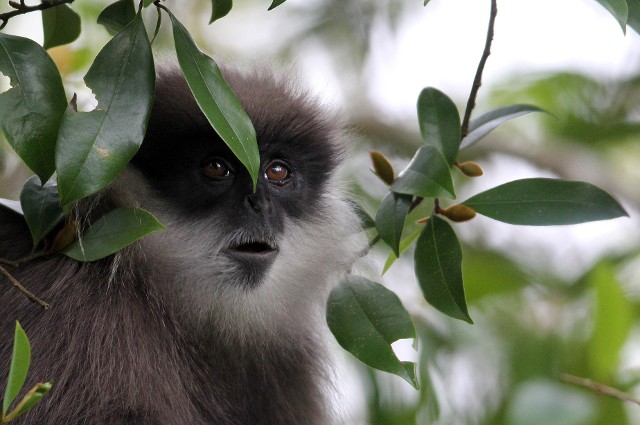
The Botanical Gardens were actually a great place for many species of wildlife and was also home to a sizable troop of Leaf Monkeys.

Bear Monkey (Montane Purple-faced Leaf Monkey) (Semnopithecus vetulus monticola) were much furrier than their dry zone cousins.
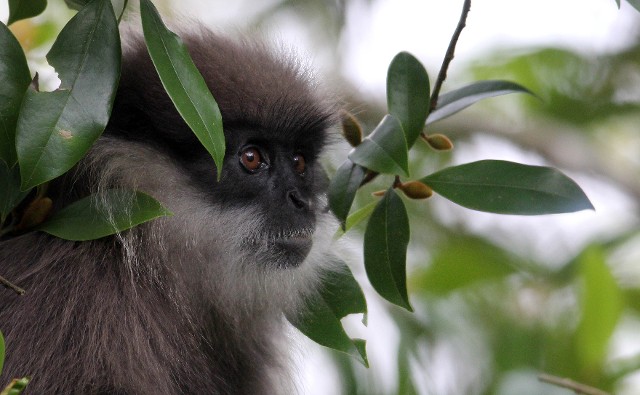
Bear Monkey (Montane Purple-faced Leaf Monkey) (Semnopithecus vetulus monticola)
Highland Toque Macaque (Macaca sinica aurifrons)
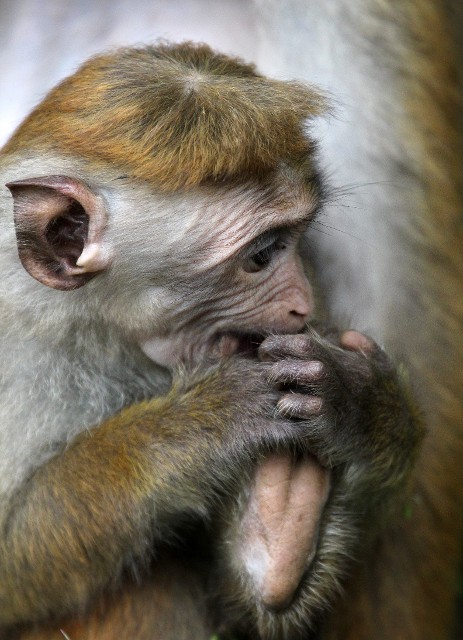
We encountered several of the Highland Toque Macaques while in the region as well. This one is hungry...
Horton Plains National Park
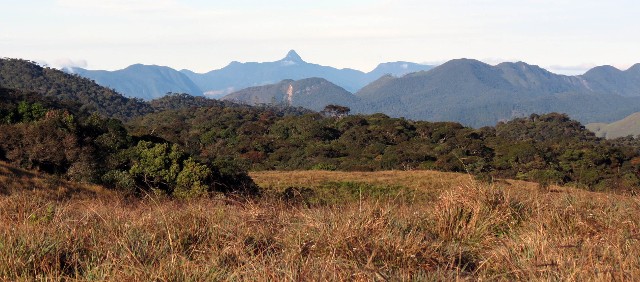
The view of the vast area that is Horton Plains National Park.
Horton Plains National Park is a gem of a place. Situated in some of the highest elevations in Sri Lanka, it is home to a spectacular moss-dripped forest-grassland ecosystem. For some reason the English did not absolutely demolish the forest there for their tea and the Sri Lankans have long-considered sacred, so today it is a vast, relatively unscathed landscape. The views and wildlife are very nice indeed. While we spent hours there searching for our damn little Sri Lankan Dusky Squirrel, we did come across several nice birds, a Brown Mongoose and even some of the best views of Sambar I’ve had in some time. Absolutely wonderful place – definitely worth a couple solid days and nights if you are considering a wildlife expedition to Sri Lanka. Be sure to request to stay in one of the bungalows inside the park. This may allow a chance for some of the nocturnal wildlife such as the Highland Chevrotain and Leopard (ample sign was seen along the trails).
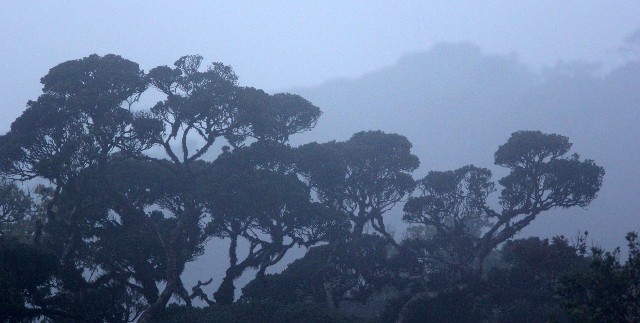
The fog rolls in daily in Horton Plains. The elfin forest no doubt depends to a large extent on fog drip.
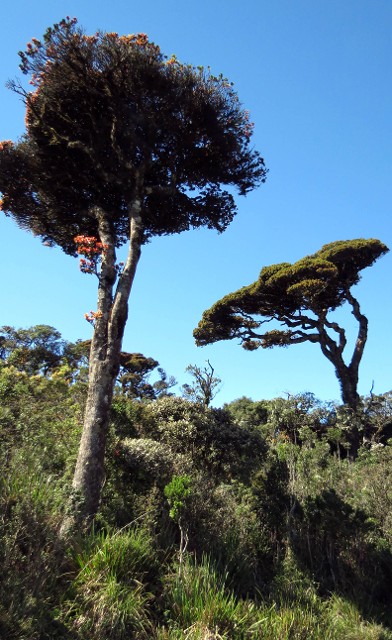
The bonsai-like trees of Horton Plains

The endemic Rhododendron zelanicum were in full bloom in Horton Plains National Park.
Indian Brown Mongoose (Herpestes fuscus)
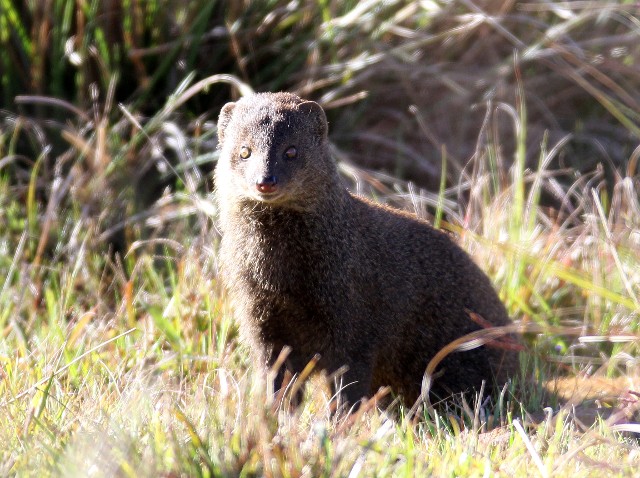
We were pleased to finally see a mongoose! This Brown Mongoose gave us extended views while we traveled the expansive grasslands of Horton Plains.
Sri Lankan Sambar (Rusa unicolor unicolor)
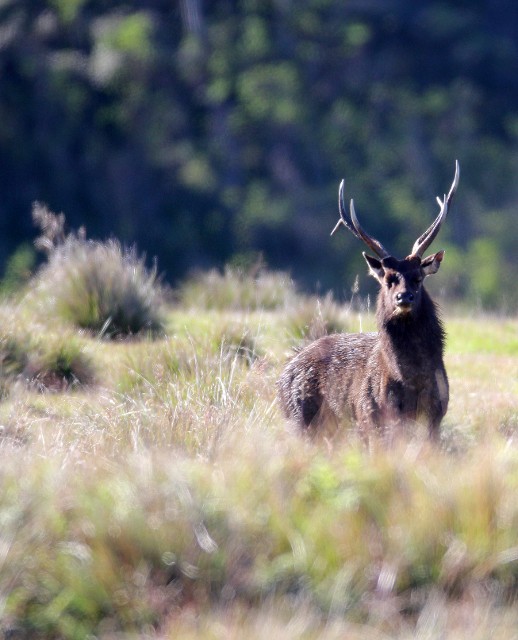
Horton Plains is definitely the place to see Sambar.
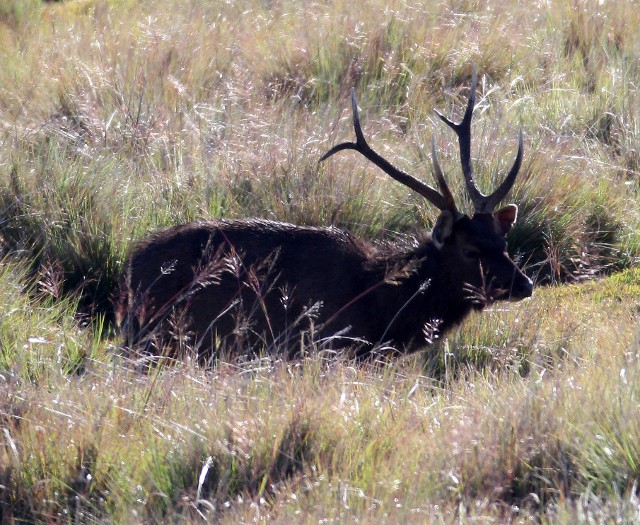
Horton Plains Sambar
Asian Buffalo (Bubalus arnee)
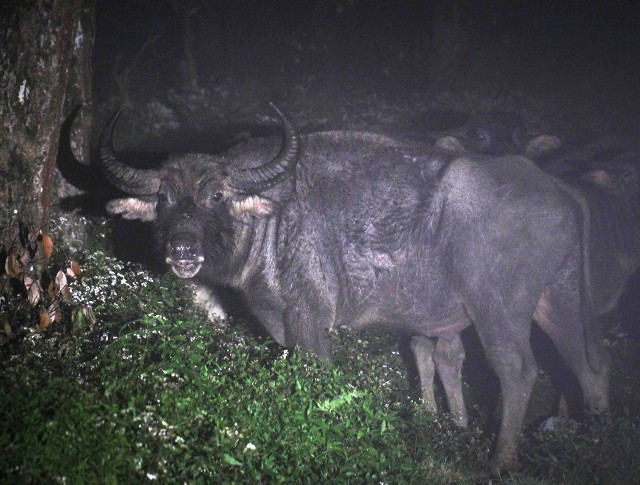
On the way up to the high elevations of Horton Plains NP, we came across this sizable herd of Wild Asian Buffalo grazing in the fog of the lowland forests.
Common Sri Lanka House Rat (Rattus rattus kandianus)
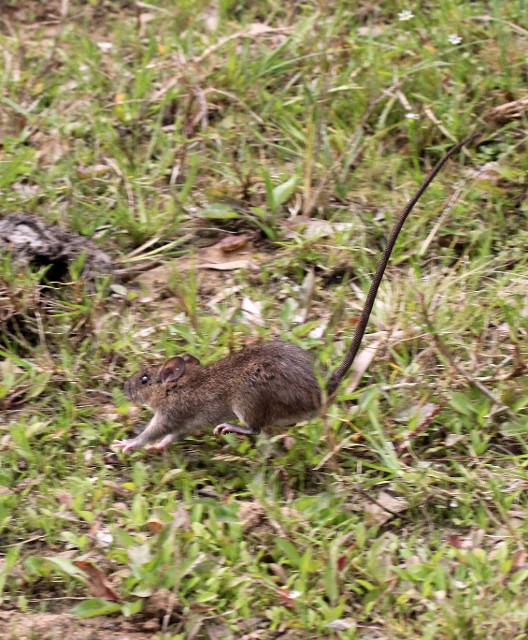
The only mammal we trapped the entire trip - the endemic Common Sri Lanka House Rat (Rattus rattus kandianus)
Kitulgala National Forest Reserve
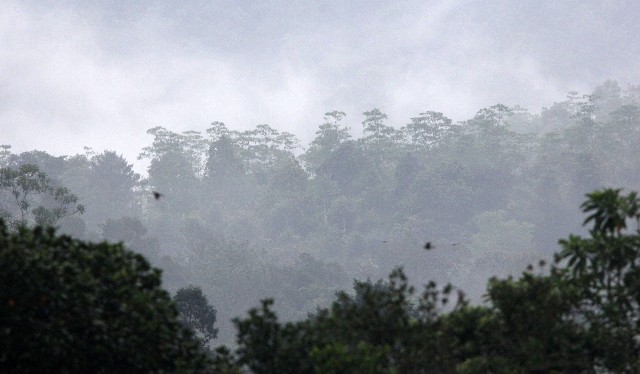
The impressive wet forest of Kitulgala.
Our time at Horton Plains was short and we had to make it to Kitulgala, situated deep inside of Sri Lanka’s “lowland humid zone”. The three or so hour drive took us much lower in elevation (to about 200m) and in to a much more humid and hot climate. Our targets at Kitulgala were the very rare and elusive Red Slender Loris (a Sri Lanka endemic) and the up-to-now impossible-to-see Travancore Giant Flying Squirrel. Interestingly, even with well over forty species on our list by this point, our inability to find the Dusky Squirrel left us feeling a bit unlucky and we were not too optimistic about finding our targets here. But of course this never stopped us from trying!
On our approach to Kitulgala, we learned that we were about to visit the actual site of the filming of one of my favorite childhood movies, “Bridge Over the River Kwai.” Of course I have seen the actual bridge many years ago in Thailand, but I never even knew that Sri Lanka was the actual site of the movie! And not only were we to visit the site of the movie set, we were actually going to stay in the hotel (the Kitulgala Rest House) that housed all of the main movie stars of the movie! It was great fun to walk through the old decomposing hotel, peeking out areas that were featured in the various scenes of the movie. I wonder if we slept in William Holden’s room!? And on our final day in the area, we opted to spend an afternoon river rafting along the Kalani River and we were able to pause for a bit on the actual location of the bridge. Great fun. Usually movie sets and things like that don’t do much for me but I was really excited to be here for this one – Bridge Over the River Kwai was always one of my favorites.
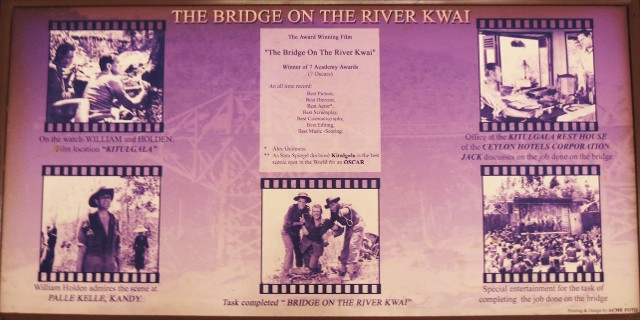
The Bridge Over the River Kwai! What a trip!
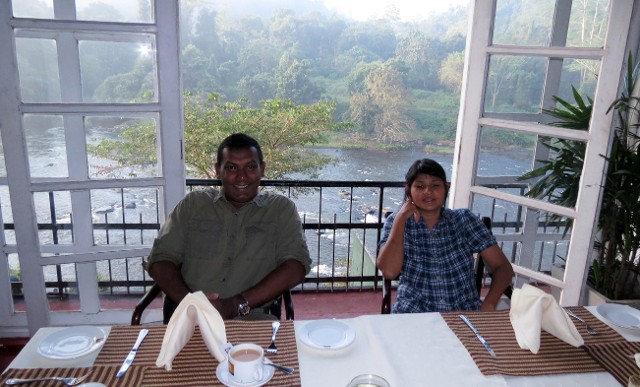
Eating breakfast in one of the spots where the filmed the epic movie, Bridge Over the River Kwai. For me this was very cool!
So our first night walk in Kitulgala Forest Reserve was pretty impressive. To get to the core area of the reserve, you need to take the most awkward dugout canoe I have ever sat in across the Kalani River to the forested area in Kitulgala Forest Reserve. There we trekked through a village trying once again in vein for our Dusky Squirrel but soon enough we found our way in to a lovely secondary forest. Uditha took us to a rocky river bed where we relaxed for about half an hour before we decided to head in to the forest for our night hike. Before leaving, I took a quick detour to take a leak when all of the sudden, a giant (I mean really giant!) Travancore Giant Flying Squirrel soared just in front of me about twenty meters downstream across the stream! It was surreal watching this surprisingly large rodent come from nowhere and fly so low and parallel to the riverbed. We rushed to the landing site but were a bit too late to find it. Dang! But at least we saw it!
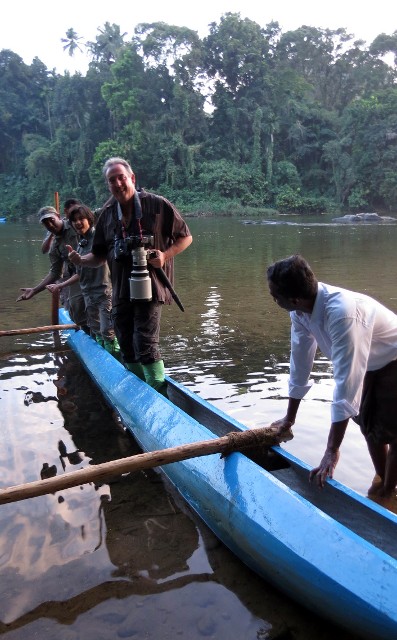
This was by far the most awkward and painful dug-out canoe I have ever been in!

Killin' time in the Kitulgala, waiting for the darkness to come. Seconds after I took this image, a huge Travancore Giant Flying Squirrel flew right in front of me! Awesome.
Our trek through the steamy forest of Kitulgala was initially pretty quiet and uneventful, and if Uditha had not been with us, it would have no doubt continued that way. About two kilometers in to the forest, Uditha stopped us and told us he had heard a Red Slender Loris! Of course none of us heard a thing, but he was sure. We cut all the lights, stood silent for a bit, while Uditha listened intently (this is something he often did on our treks and we were always very careful to let him hear everything clearly – he was about 90% successful with listening to the sounds of the forest and zeroing in to our prey species, seemingly as if my magic or pre-arrangement!). Sure enough, as soon as we turned the torches back on, we all got a good glimpse of the eyeshine and eventually the full body of a spectacular Red Slender Loris! And with a bit of effort, we were finally rewarded with a wonderful set of images of this very rarely photographed-in-the-wild species. Absolutely amazing experience for all of us!
Sri Lanka Red Slender Loris (Loris tardigradus tardigradus)
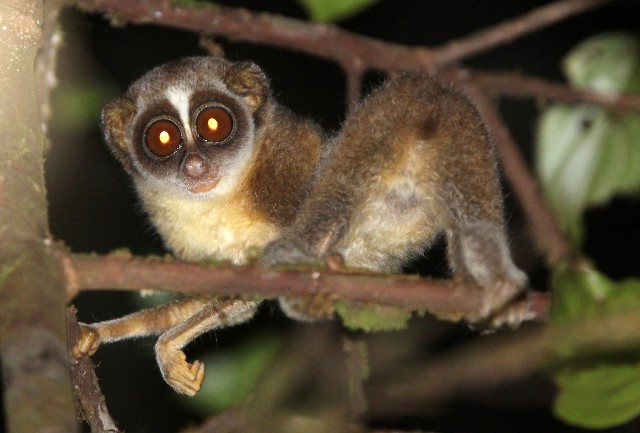
What a spectacular rare treat. The Red Slender Loris is generally considered to be much harder to spot and photograph.

Sri Lanka Red Slender Loris (Loris tardigradus tardigradus). This little guy gave us great views for several minutes.
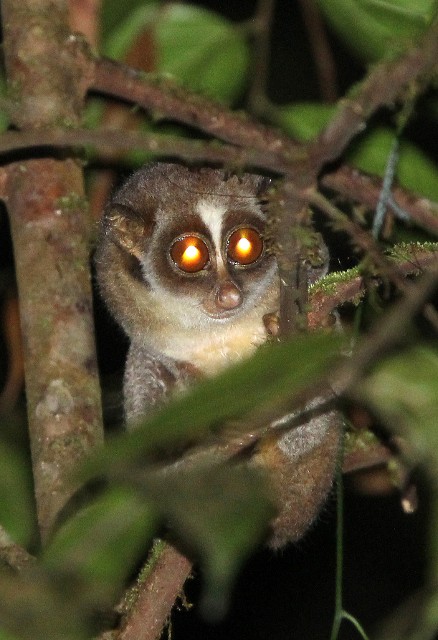
As a pond scum biologist, I got a kick out of the scientific name of the Red Slender Loris (Loris tardigradus tardigradus) - named no doubt after the rolly-polly tardigrade "Water Bear".
Lowland Purple-faced Leaf Monkey (Semnopithecus vetulus nestor)
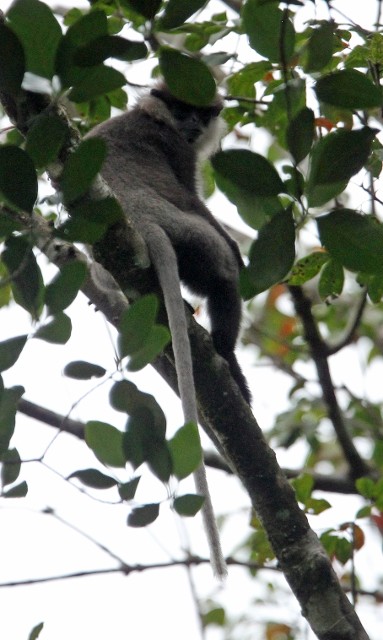
On our last afternoon in the area, we were fortunate to see the Lowland Subspecies of the Purple-faced Leaf Monkeys. Now we were only a couple species/subspecies away from seeing every primate in Sri Lanka! This species has a much more silvery pelt.
Sri Lanka Flameback Squirrel (Funambulus layardi layardi)
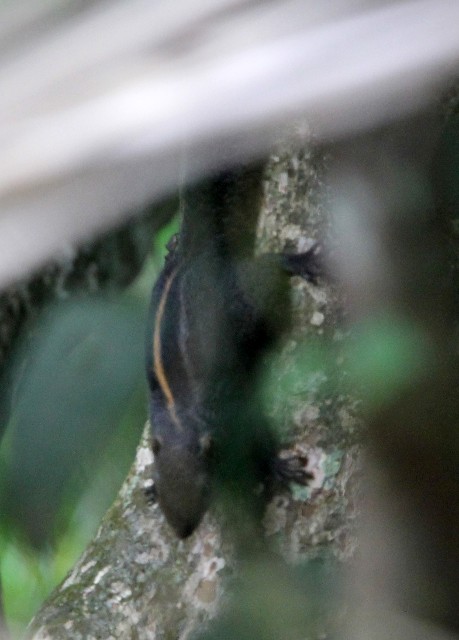
We spotted many of the Sri Lanka Flameback Squirrels throughout our trip but getting good images was a serious issue!
Now I am sitting on the spectacular veranda of our lodge overlooking the Kalani River below. We just had a very nice rain pass through and are wondering if that might kill a good night hike this evening….Surely the leeches will be out for a meal. Oh well, however the evening goes, we are very pleased with the successes over the last few days. With five more full field days left, we are hoping to top 50 species (we’re at 46 now) or more. We shall see, maybe a Yellow-spotted Chevrotain or a Wet Zone Golden Palm Civet? Those would be sweet. Well on our final walk in to the Kitulgala Forest Reserve, I finally spotted a Striped Squirrel! We also nailed the Sri Lanka Flameback Squirrel realizing our goal of seeing every squirrel species in the country! Nice job! Aside from a nice Indian Crested Porcupine and a few more calls from the Red Slender Loris, the night was relatively quiet, maybe due to a good rain that drenched the area.

Definitely the cutest mammal seen at Kitulgala! This little girl and her family farmed tea in the core area of Kitulgala.

Cokie noted her GPS coordinates for future reference....
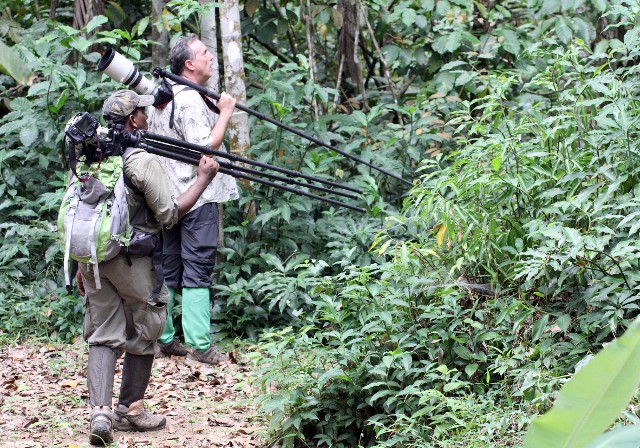
Searching for Purple-faced Leaf Monkeys at Kitulgala.
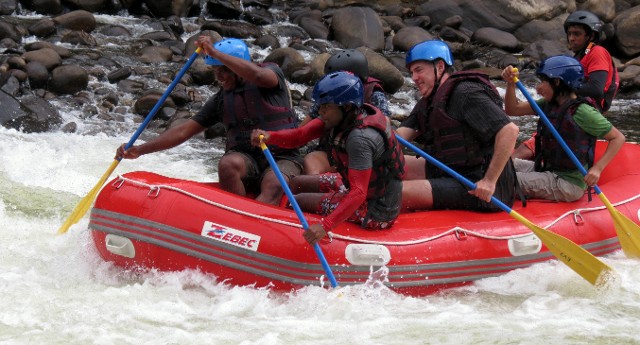
We were so successful in hitting our targets, we had a half day to fill with river rafting.

I think Class III were the max on this day but the river can rage at Class IV during the rainy season.
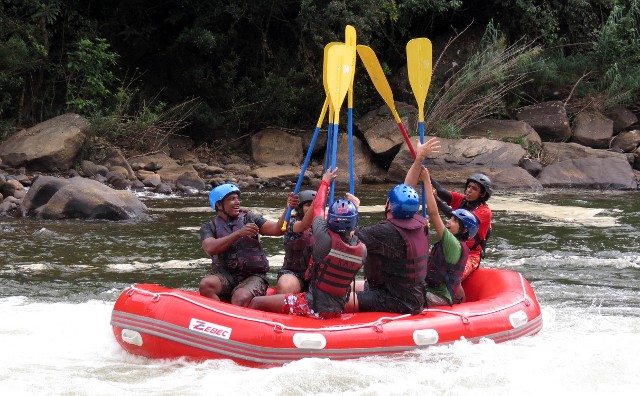
Nailed it!
Singharaja National Park
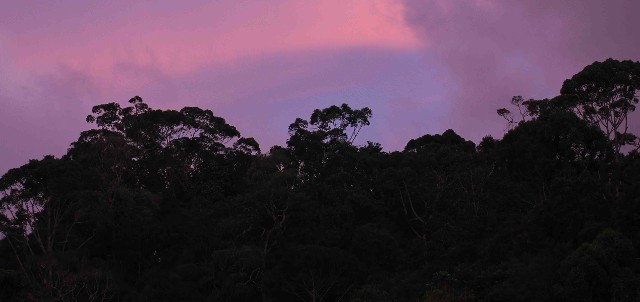
A spectacular purple sunset in Singharaja National Park.
After a nice drive through the heart of Sri Lanka, we are now in the Wet Zone area of the country. Singharaja is our fourth location for wildlife watching on the trip. The national park is situated in Sri Lanka’s south central region and is considered to be a wet forest of mid elevation. Our targets for the Singharaja were mainly species we’d seen already but with hopes of improving our photos and sightings. A couple nice additions to the species list were the Wet Zone Purple-faced Leaf Monkey and the Wet Zone Toque Macaque, which basically completed our collection of all of the subspecies of the monkeys of Sri Lanka!
Wet Zone Purple-faced Leaf Monkey (Semnopithecus vetulus vetulus)

Our final subspecies of Purple-faced Leaf Monkey - the Wet Zone race! We were feeling pretty complete right about now....
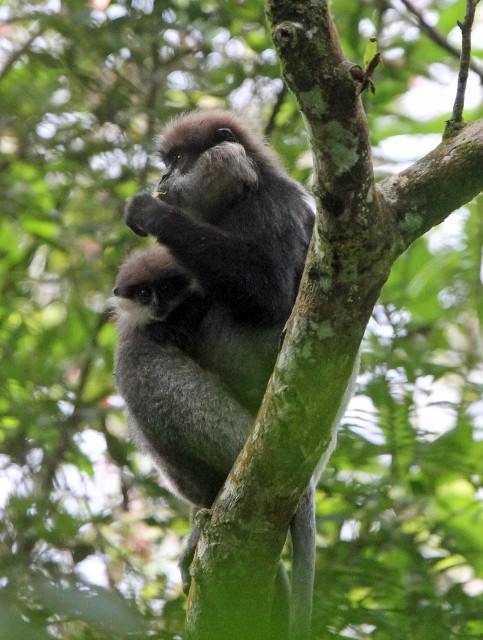
Curious little fellow....

Wet Zone Purple-faced Leaf Monkey
Wet Zone Toque Macaque (Macaca sinica opishomelas)
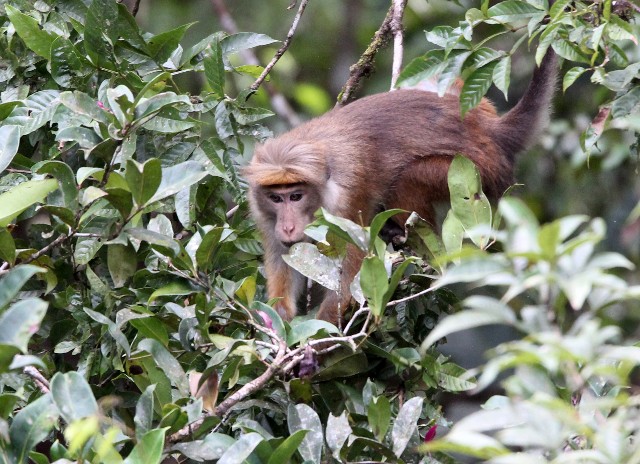
Wet Zone Toque Macaque. Now with this, we had conquered ALL of the species and subspecies of primates in Sri Lanka! Nice job.
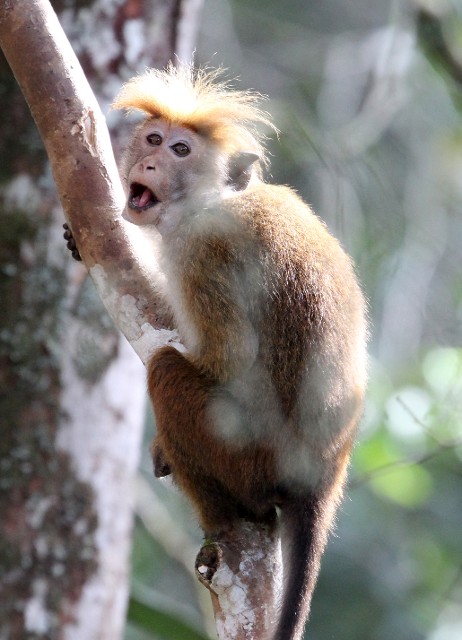
Serious doo on this little Wet Zone Toque Macaque...
Intermediate Zone Sri Lanka Giant Squirrel (Ratufa macroura melanochra)

Although we had seen the species often elsewhere on the trip, Singharaja gave us the best views and photo-ops for the spectacular Intermediate Sri Lanka (Grizzled) Giang Squirrel.
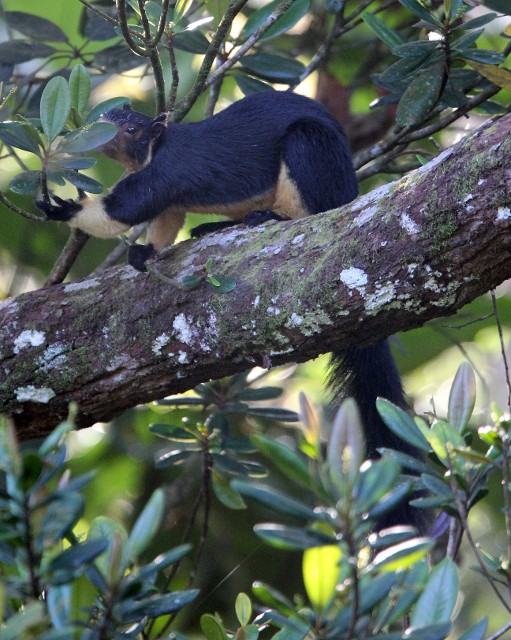
This giant was enjoying breakfast just next to our deck at Martin's Forest Lodge.
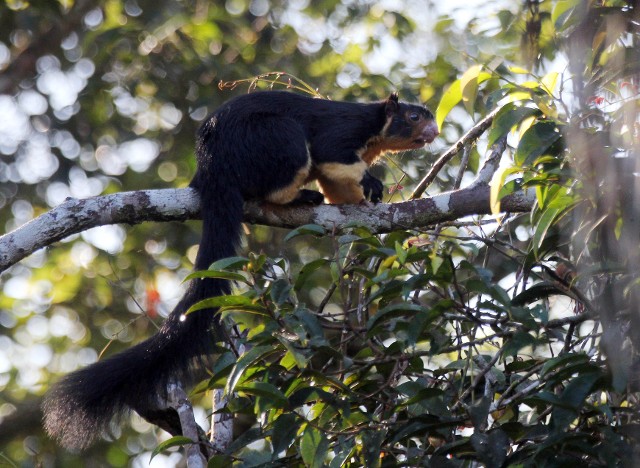
Intermediate Zone Sri Lanka Giant Squirrel

We spent some quality time with this brave squirrel.
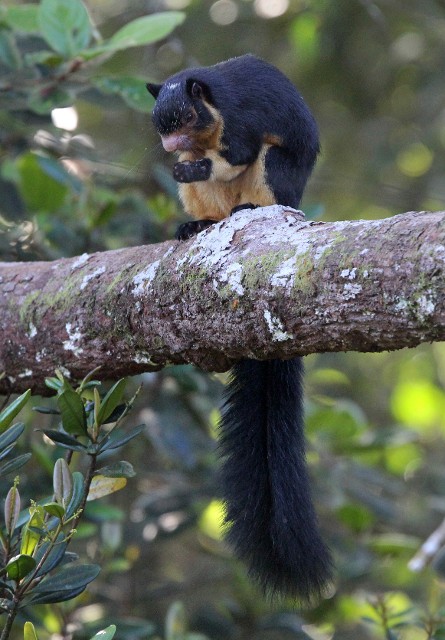
Intermediate Zone Sri Lanka Giant Squirrel
Our evening was spent at the Martin’s Forest View Lodge. We trekked for a bit in to the interior of Shinharaja with the hopes of a surreptitious night walk but the rules are pretty tight here regarding spotlighting, so we decided not to attempt a night trek. Consequently we were denied any further images or sightings of some of the critters we’d missed in the previous days. Oh well, our list being now 49 species and 55 species/subspecies, we cannot complain! Tomorrow we’re off to Udawalawa and then Yala to complete our Sri Lanka safari. Can we set a record!? (The record is 62….hmmm) And as we were leaving, we finally got some close-up looks at the Sri Lanka Flameback and Sri Lanka Intermediate Giant Squirrel, which looks absolutely nothing like its dry zone cousin seen in Sirigiya.
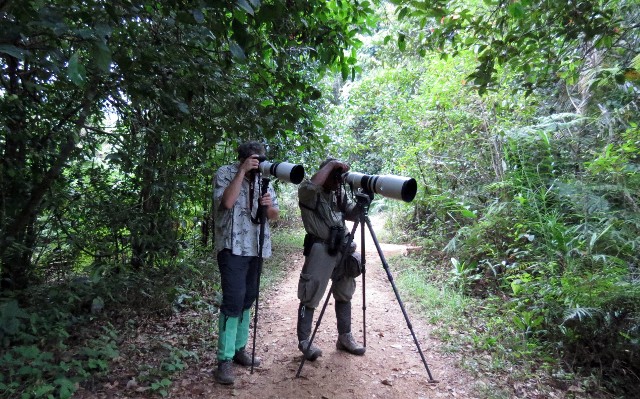
Nailing some critter in Singharaja!

Nepenthes distilloria were spotted in Singharaja.
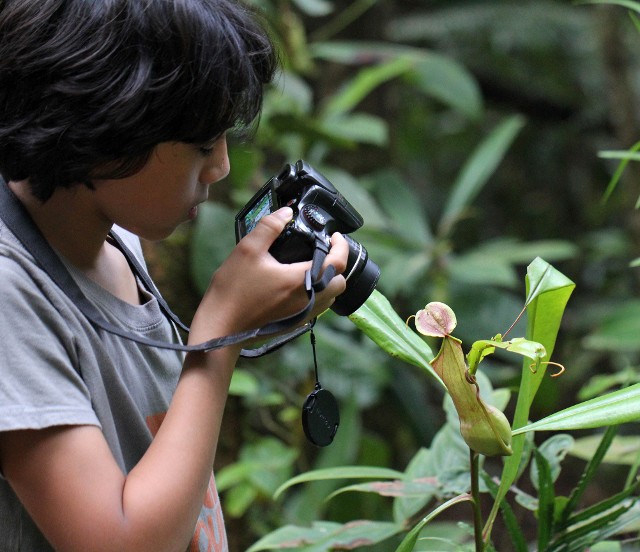
This trip really brought out the photographer in Cokie. He seems to be in to the odd and curious and not in to the wildlife shots as I am. But anything that gets a camera in his hand is all good!
Udawalawa National Park

Udawalawa was clearly a new habitat for us. More of a forested savannah similar to central and nothern India.
A few hour drive from Singharaja, we are now in the forested savannah-like ecosystem of Udawalawa National Park - definitely a drier climate with a very flat topography. We were greeted by an old patriarch elephant upon entering the reserve area, which was nice. Although he was way past his prime, it was nice to see such a massive (Sri Lanka Elephants are second only to the African species in size) specimen so close.
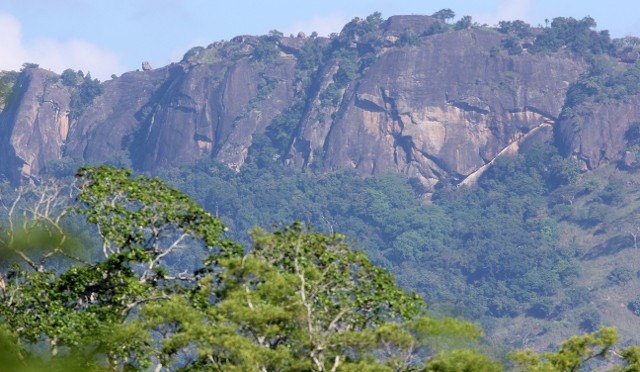
The hilly back-country surrounding Udawalawa.
Sri Lankan Elephant (Elaphus maximus maximus)
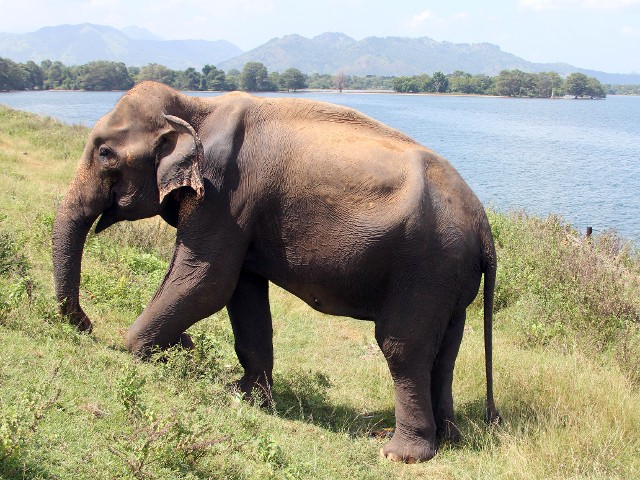
Finally our first photo-op of a Sri Lanka Elephant. This old chap spent all of his time on the dam at the entrance of Udawalawa NP waiting for handouts from the passers by.
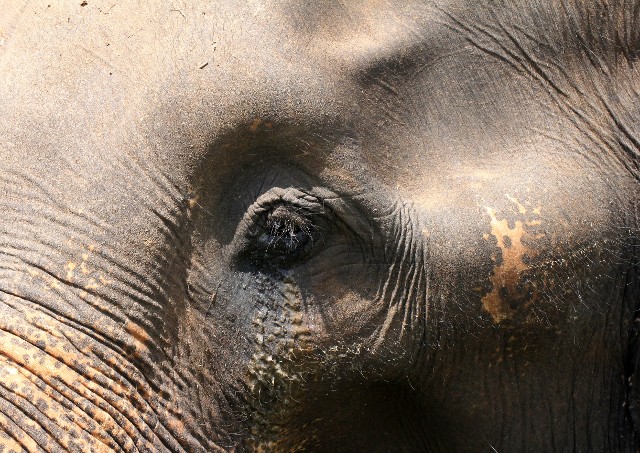
Sri Lankan Elephant

We caught this young ele catching some zzzz's resting on a tree along the main track of Udawalawa.
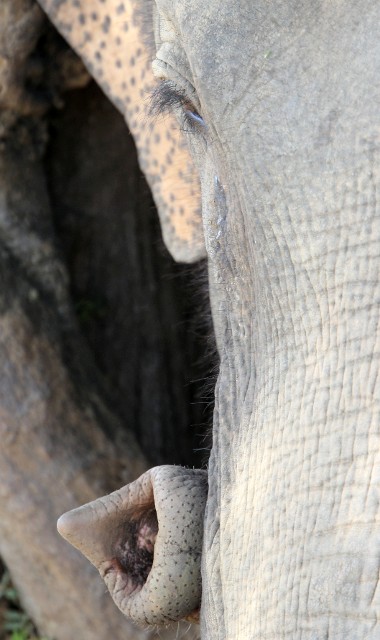
Sri Lankan Elephant (Elaphus maximus maximus)
Our night in Udawalawa was spent actually about and hour-and-a-half away in the hills to the south for a spectacular show of Lesser Dog-faced and Greater Short-nosed Bats emerging from a cave by the hundreds of thousands. After a fairly adventurous drive in one of Sri Lanka’s famous tuk-tuks down in to a steep valley, and a 1.5 km trek through a misty rainforest rocky track, we were treated with a natural spectacle. Watching (and smelling!) the thousands upon thousands of fruit bats emerging from the deep cavern was spectacular. We enjoyed the spectacle until the rain forced us back up the trail to our dry tuk-tuks. Awesome sight indeed!

Getting ready for the tuk-tuk ride from hell!
Lesser Dog-nosed Fruit Bats (Cynopterus brachyotis) & Greater Short-nosed Fruit Bats (Cynopterus sphinx)

This was a surprising wildlife highlight of the trip - watching hundreds of thousands of Lesser Dog-nosed Fruit Bats (Cynopterus brachyotis) & Greater Short-nosed Fruit Bats (Cynopterus sphinx) emerge from this distant cave about an hour and a half from Udawalawa.
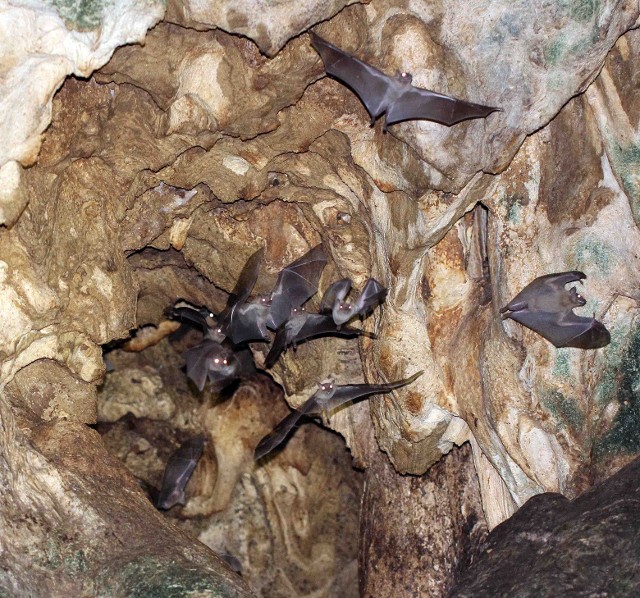
Lesser Dog-nosed Fruit Bats (Cynopterus brachyotis) & Greater Short-nosed Fruit Bats (Cynopterus sphinx)
Our very early morning game drive in to the heart of Udawalawa was fairly productive. A classic Sri Lankan dry zone forest, Udawalawa offered us nice sightings of Sri Lankan Elephants, Sri Lankan Spotted Deer, Tufted Langurs, Dry Zone Giant Squirrels (and strangely an Intermediate Giant Squirrel that may have been released in to the park according to our driver/guide), Feral Water Buffalo, Long-eared False Vampire Bats, and some very recent sign of the rare and elusive Indian Pangolin. It was a nice drive even with a small sightings list.
Feral Water Buffalo (Bubalus bubalus)
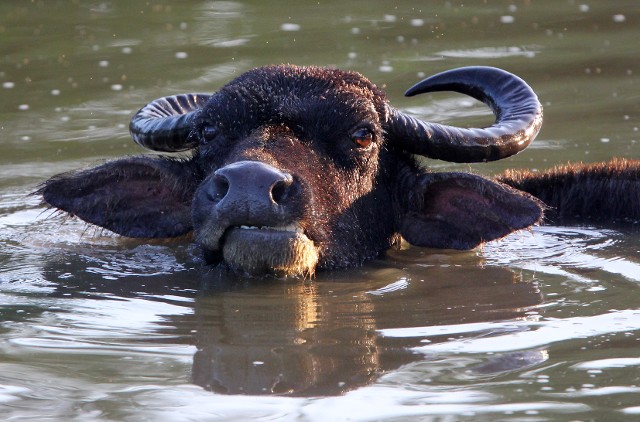
Udawalawa is literally overrun with Feral Buffalo such as this one.
Sri Lankan Spotted Deer (Axis axis ceylonensis)
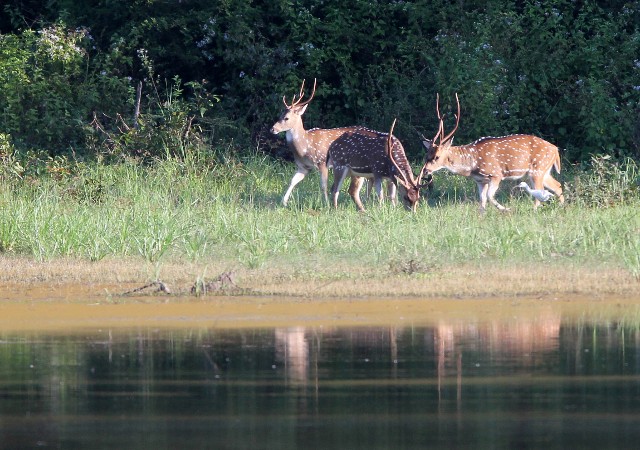
Udawalawa gave us our first good views of Sri Lanka Spotted Deer, the only accepted subspecies of the Chital outside of India.
Long-eared False Vampire Bat (Megaderma spasma)

Instead of flocking to the grasslands of Udawalawa to see the herds of elephants with the other tourists, we opted to drive deep in to the core area of the park to see these Large-eared False Vampire Bats. Good choice!
Dry Zone Sri Lanka (Indian Grizzled) Giant Squirrel (Ratufa macroura dandolena)
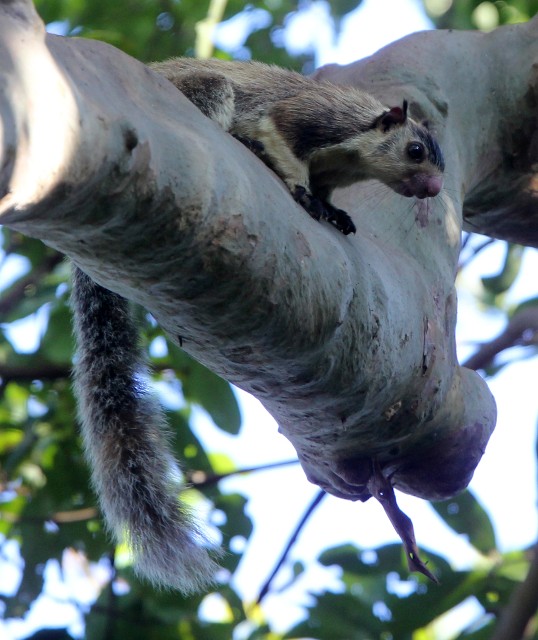
Classic example of a Dry Zone Sri Lanka Giant Squirrel.
Golden Jackal (Canis aureus)
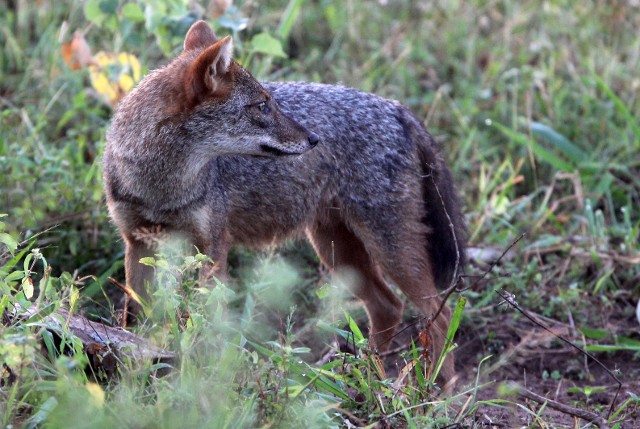
Udawalawa was also home to many Asian Golden Jackals.
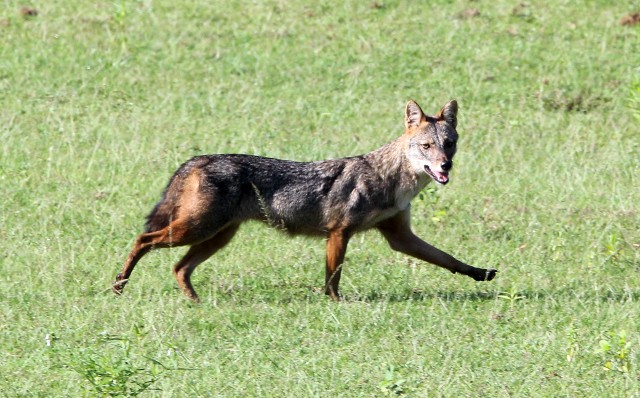
Taking a jog...

Although it looks like nothing more than scratches in the dirt, we were very excited to see the only sign of a Thick-tailed Pangolin for the entire trip!
Yala National Park

The top predator of our species list - A Sri Lankan Leopard!
Uditha left Sri Lanka’s most famous national park for the end of the trip. A short drive from Udawalawa, Yala is Sri Lanka’s premier wildlife destination, famous mainly for its impressive density of Sri Lankan Leopard, which allegedly have a density of about one per square kilometer. Of course we would be very happy to add such a magnificent feline to our list, but I long ago stopped targeting cats – they’re just too unpredictable. Yala is classified as one of Sri Lanka’s dry zone forest habitats and is comprised of a mixed forest of various species of medium profile shrubs and trees wih rocky outcroppings (many batholithic in scale) and many “tanks” (wetlands) and grassy areas. Yala is a mosaic of habitats and with this feature comes a varied fauna. Needless to say however, virtually everyone who visits Yala is interested in one species – the leopard. So, we proceeded to search for one ourselves!

Yala is a spectacular landscape. Filled with large rock outcroppings and wetlands, Yala is a very interesting place to spend a few days.
But first, we opted for an afternoon and evening just outside the park searching for spotlighting opportunities. The wind was up and the moon was very bright so I wasn’t holding out much hope for a productive evening. I wasn’t disappointed – it was pretty quiet. Aside from a decent look at a Small Indian Civet, some Black-naped Hare and about a million nightjars, there wasn’t too much happening. We had been hoping for some cats, namely the Fishing Cat and the Rusty Spotted Cat, as Uditha had seen them on this track on numerous occasions. No luck this evening.
Since we had been out so late the previous night in search of very little, we opted for a leisurely morning at our lodge. We finally entered Yala sometime around 1PM for our first official game drive inside of “Block 1”. It didn’t take us long to start seeing the usual players such as Sri Lankan Elephants (including one rare tusker) and Spotted Deer, as well as Sambar, Wild Boar, Tufted Langurs and finally a new tick, Ruddy Mongoose. This put us at 57, one shy of the land mammal record count set by Fiona Reid!
Sri Lankan Elephant (Elephas maximus maximus)
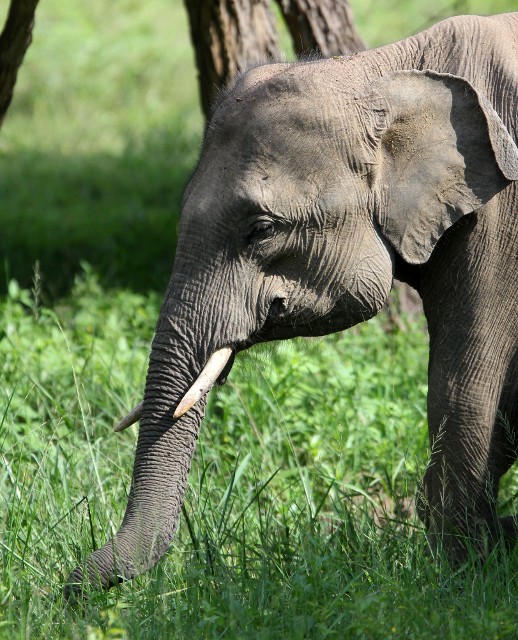
A rare tusker Sri Lankan Elephant. Not sure if this phenomenon is due to hunting pressure or a normal island-based genetic bottleneck, but tuskers are very rare in this subspecies.
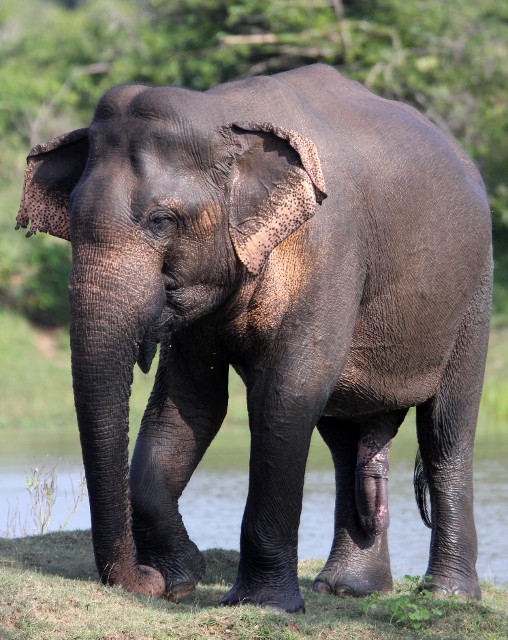
The normal tuskless variety of the Sri Lankan Elephant...
Wild Asian Buffalo (Bubalus arnee)
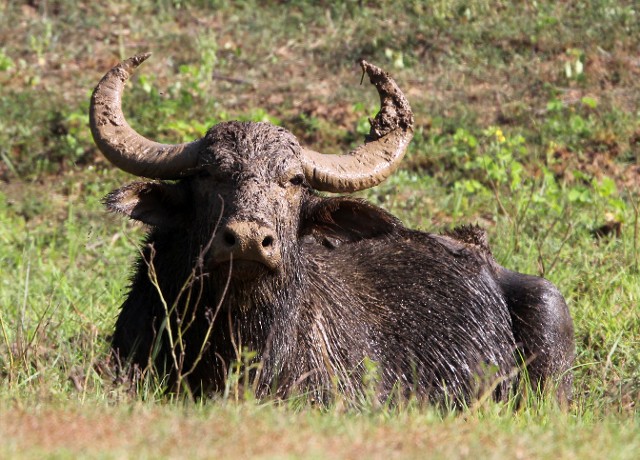
Wild Buffalo were common as well in Yala.
Golden Jackal (Canis aureus)
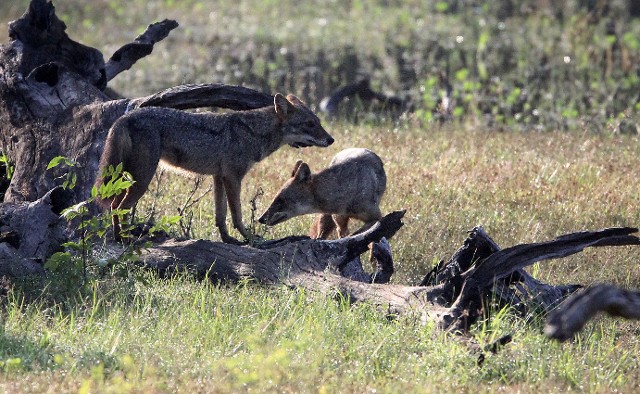
More nice photo-ops for Golden Jackals...
Sri Lankan Spotted Deer (Axis axis ceylonensis)
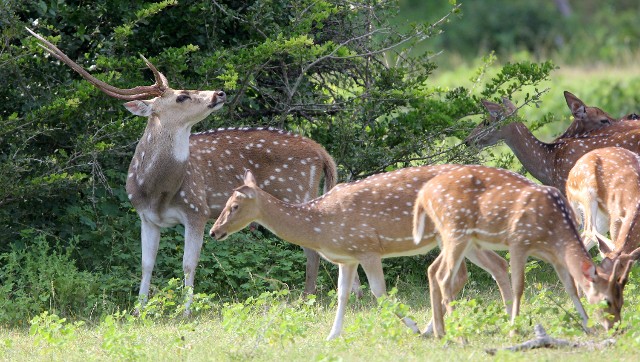
And Sri Lankan Spotted Deer

Sri Lankan Spotted Deer (Axis axis ceylonensis)
Sri Lankan Sambar (Rusa unicolor unicolor)
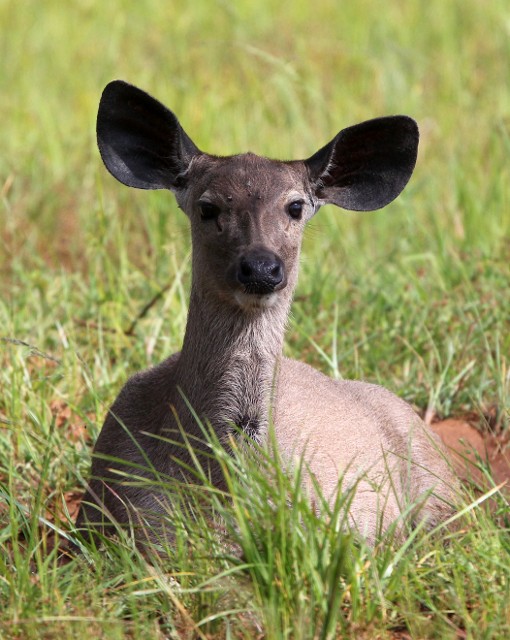
Sambar were relatively common at Yala as well.
Fulvous Fruit Bat (Leschenault’s Rousette) (Rousettus leschenaultia)
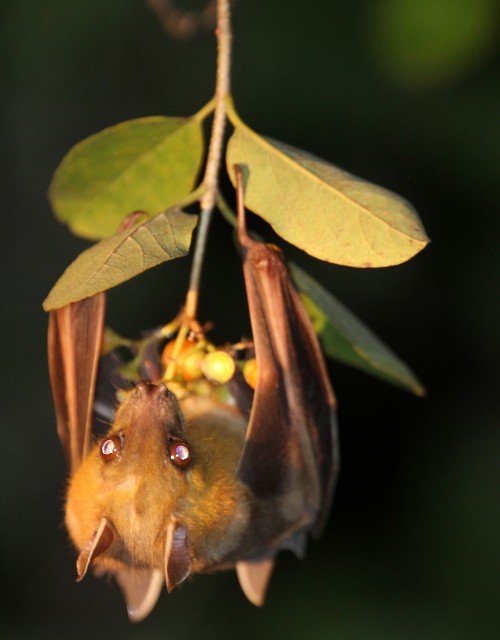
On our first night drive, we came across this feeding Fulvous Fruit Bat along the main track outside the park.
Indian Flying Fox (Pteropus giganteus)

Just outside of Yala, we spent time at the largest Flying Fox roost I have ever seen. Many acres of large "rain" trees were covered with tens of thousands of these giant chiropterans.

Indian Flying Fox

Indian Flying Fox
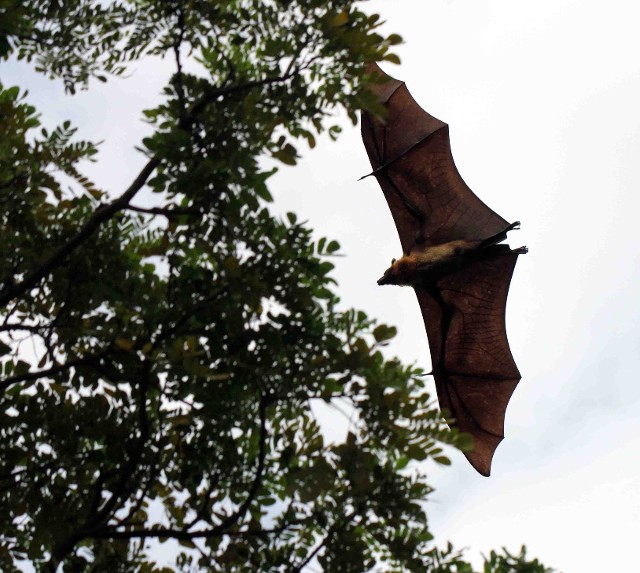
We killed some time before this evening's night safari watching the Indian Flying Foxes sail around the trees of Yala.
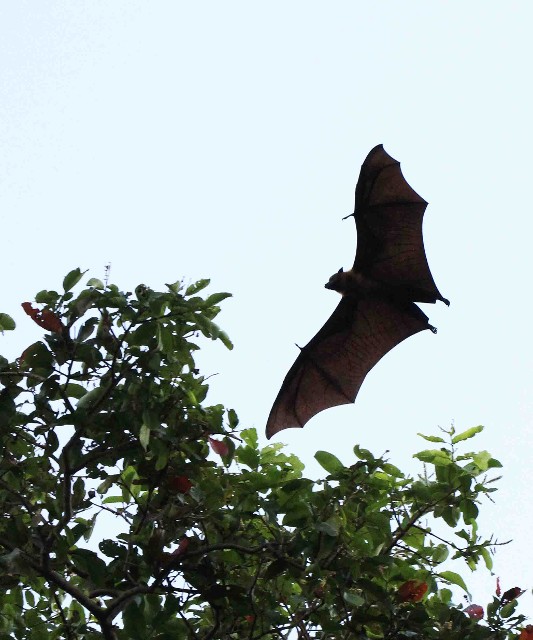
Indian Flying Fox
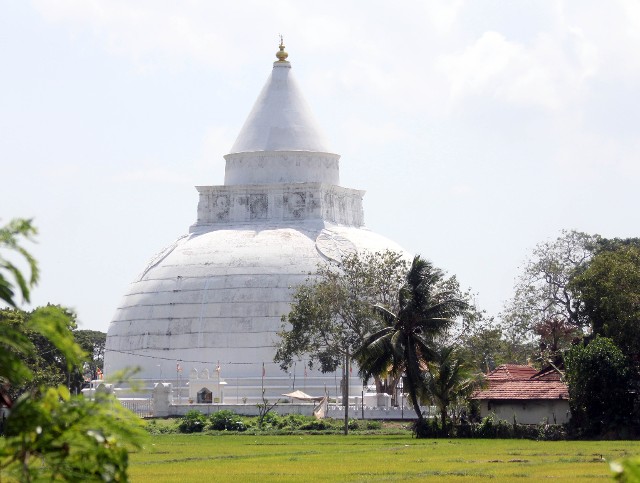
Our flying fox roost was situated very near by several ancient Sri Lankan Stupas like this one near Kirinda.
After a couple hours inside, our wildlife department guide started getting phone call after phone call with sightings and locations of Sri Lankan Leopards. So we B-lined it straight to one of the locations to find about 3000 jeeps lined up on the road in true Africa fashion! I held very little hope that we’d spot the alledged leopard reported to be sleeping in a distant tree, but we approached the traffic jam nonetheless. As we pulled to the far side of the jam, we noticed the sleeping male on a large horizontal limb some 100 meters away. Strangely no one near us actually noticed the critter – they were all waiting for a view from the center of the pileup. In any event, we had species number 58 and were officially tied with the record! Normally we could not care less about setting in records, but this was just plain fun…. So after a few minutes of taking crappy images of the leopard (who had his head buried deep in the thicket, so we never really got a look at it…), we continued on our way with hopes of better photo-opps! Well, we came close a couple times as we were in at least two areas which had spotted leopard literally seconds before our arrival (and in one case, our approaching jeep scared the critter off!), but no more pics this day.
Sri Lankan Leopard (Panthera pardus kotiya)

Our first view of the Sri Lankan Leopard, snoozing his heart out in a distant tree....Not the greatest view but we got it!
Uditha planned our night drive in a different location this evening, but the wind was blowing even harder and the moon was even brighter. Again, I was not hopeful. And again it was pretty much a very quiet evening initially filled with nothing but nightjars upon nightjars. There was one point that we came up on a very small dirt dyke that appeared at first glance to be a runway of sorts, with the dozens of nightjars’ shining eyes looking like approach lights…. But shortly after this spot, Uditha mentioned in a slightly disappointed tone, that the place we were in was normally a good place for Fishing Cats….And then out of nowhere, the tell-tale eye shine of a largish cat was noticed, and after a bit of bino-inspection, sure enough, we had our one and only Fishing Cat! The sighting was frustratingly distant and brief, but I got a good look at the entire body, head and size to know it was a confirmed sighting. We finished our final night drive very satisfied indeed.
Not much else happed during our final drive with one notable exception – our visit to the Yala Dump. Wildlife watchers often find ourselves in dumps around the world, and I have recorded many very interesting species in many myself, but never have I seen an elephant wandering the refuse piles in the middle of the evening. There was something very sad and perhaps even a bit foreboding about seeing this magnificent animal searching the human trash piles for a morsel to eat.
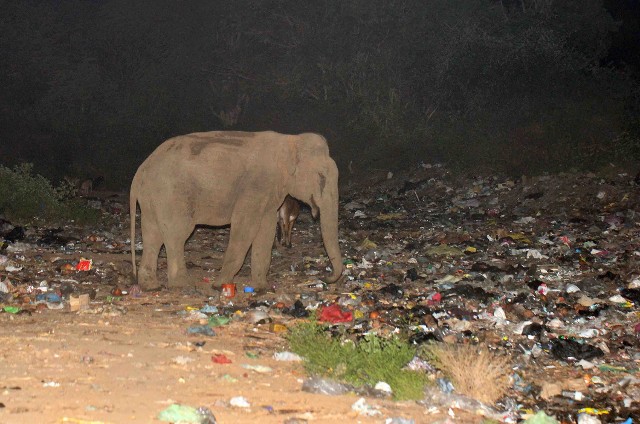
There was something very wrong with this depressing scene...
With about three hours of sleep under our belts, we started today, our final day in Sri Lanka, with our final game drive in to Yala. We were all hoping to add a couple new ticks to our list, perhaps a Grey or Stripe-necked Mongoose or two? Of course some better images of a leopard would be nice too….The morning started very uneventful, and I would go so far as to say even a bit dull…. But then out of nowhere came this gorgeous black ball of fur bolting across the track just in front of our jeep, and we had species number 59! A Sri Lanka Sloth Bear! No pics, just a nice mental image will have to keep us happy with this sighting. We were all pretty jazzed.
Sri Lankan Sloth Bear (Melursus ursinis inornatus)

All we could get of our Sri Lanka Sloth Bear was this shot of its tracks! Still a great spotting anyway.
Ruddy Mongoose (Herpestes smithii)

Species number 57! The Ruddy Mongoose was a welcome addition to our list.

Another curious Ruddy Mongoose.
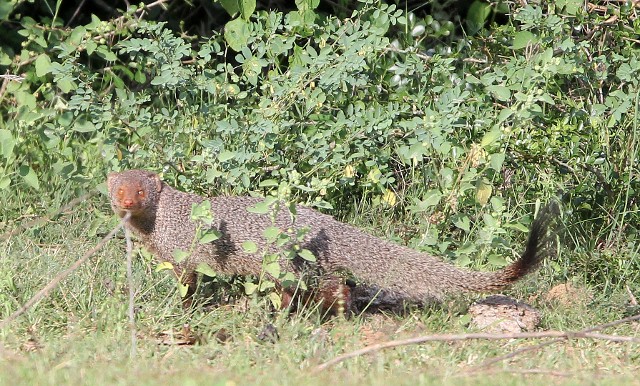
Ruddy Mongoose
Wild Boar (Sus scrofa affinis)

Indian Wild Boar were very common throughout the dry zone habitats of Yala and Udawalawa NP's.
Small Indian Civet (Viverricula indica)
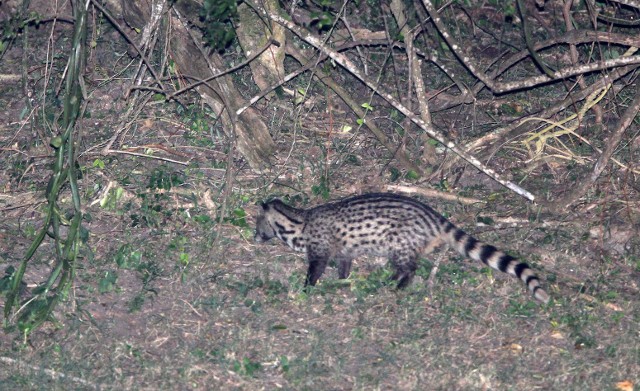
After seeing literally dozens of these over the days in Sri Lanka, we finally had one pause enough for this mediocre image.
Black-naped Hare (Lepus nigricollis)
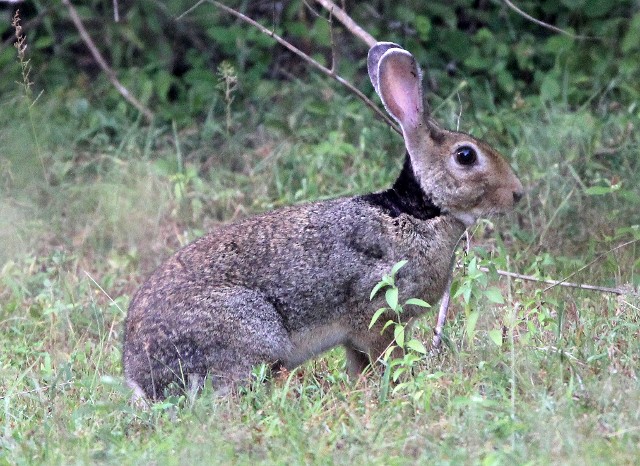
Finally a shot of the Black-naped Hare in the daytime!
Just as we were reveling in our new record, the phone started ringing again….”OK, there is one in a tree!” “Is it close?”, asked Som…. “No”….So we began our dusty journey across Yala in hopes of another encounter with a leopard. Well, the traffic jam for this one was even worse…and we nearly rolled our truck trying to squeeze in to get a look but the traffic was so jammed that there was really no point of even being there. So we resigned ourselves to the fact that we were stuck there for the time being, so we entertained ourselves by watching the chaos that is leopard-watching in Yala. I recalled our trip to India a couple years back (Trip Report Here) and how I felt so irritated with how the rangers there limited each vehicle to a couple minutes max in front of the big cats when traffic jams happened….Now it all made sense…
Evidently, the cat was up in a tree with a kill but the kill fell to the ground and now the leopard was deep in the ground cover feeding leisurely. We could see from our vantage point all sorts of tourists trying in vein to see the cat on the ground, but very few were successful. I could see how one group of tourists after another left with the people probably assuming that the entire event was staged and there never was any leopard! We were slowly inching our way toward the vantage point wondering if we’d be similarly frustrated…And then Udittha snapped his fingers (always a very good sign) and said, “There!” And no sooner had he finished this, I spotted the cat as well and began getting some pretty decent images of the face of one of the three recognized subspecies of Panthera pardus! Great fun! And although there were many vehicles directly next to us with equally good vantage points, we were the only ones to get this show this morning. By the time we were able to tell some other folks where to look, some drivers started to yell at one another and the cat ambled away. And as we finally broke through the jeep impass, we came to the main vantage point to see TWO leopards through the foliage.
Sri Lankan Leopard (Panthera pardus kotiya)
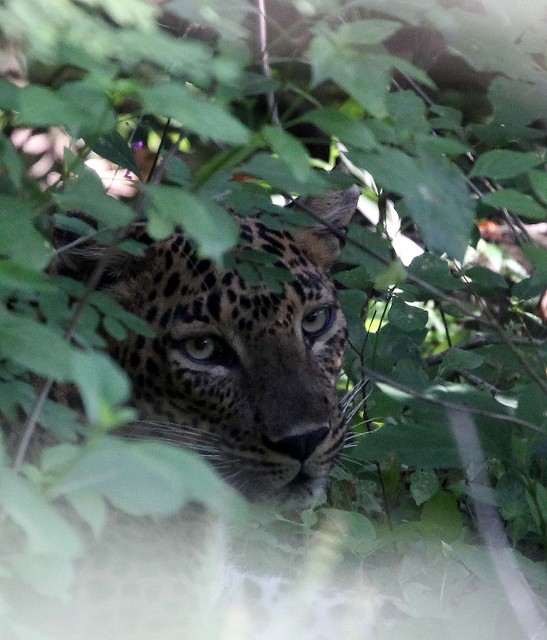
Finally after much waiting, some quality, albeit brief, views of the Sri Lankan Leopard in Yala.
What a perfect way to end our wildlife adventure in Sri Lanka – a quality viewing of Sri Lanka’s most emblematic animal, the leopard. We half-heartedly tried for more wildlife spotting for the rest of the morning, but we were all pretty high on our success…or perhaps we were all simply exhausted due to the sleep deprivation we’d been experiencing….
After perhaps one of the most productive and intense expeditions we've had in a long time, we agree that the most powerful part of our expedition in Sri Lanka, however, was not a wildlife sighting, stunning scenery or even a quaint cultural exchange with the lovely people with whom we spent time, it was Uditha’s story of surviving the 2004 tsunami that hit Sri Lanka. As we arrived in Yala, Uditha mentioned that he was in Yala when the tsunami hit and he mentioned very briefly some of the places he was then when we passed by. He told us about the old lodge where he and his group were staying at the time and the location were he finally washed up to safety. Of course our interest was piqued and during our late breakfast, I asked Uditha to share with us his experience. Out of respect for the Uditha’s privacy, I won’t share any of his story in my blog, but if you are lucky enough to travel with him in the future, make sure to ask him if he can share his experience – it is very powerful. Be sure to set aside some uninterrupted time for his tale of survival – absolutely amazing and gut-wrenching.
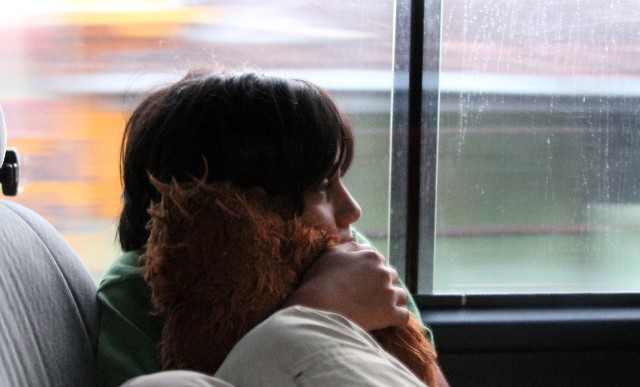
Our long ride back to Colombo on our final day of the expedition. Cokie contemplating life with his pal "Toby" who he has had at his side on every expedition we've taken since he was five years old.
Sri Lanka Mammal List
S=Sirigiya, FN=Forest next to Nigambu, Kitulgala=K, Singharaja=Sh, Nuwara Eliya=NE, Horton Plains=HP, U=Udawalawa, Y=Yala
- Dry Zone Purple-faced Leaf Monkey (Semnopithecus vetulus philbricki) S
- Lowland Purple-faced Leaf Monkey (Semnopithecus vetulus nestor) K
- Bear Monkey (Montane Purple-faced Leaf Monkey) (Semnopithecus vetulus monticola) NE
- Wet Zone Purple-faced Leaf Monkey (Semnopithecus vetulus vetulus) Sh
- Dry Zone Toque Macaque (Macaca sinica sinica) S
- Highland Toque Macaque (Macaca sinica aurifrons) NE
- Wet Zone Toque Macaque (Macaca sinica opishomelas) Sh
- Tufted Langur (Semnopithecus priam thersites) S, U
- Grey Slender Loris (Loris lydekkerianus nordicus) S
- Sri Lanka Red Slender Loris (Loris tardigradus tardigradus) K
- Wild Boar (Sus scrofa affinis) S, U, Y
- Sri Lankan Spotted Deer (Axis axis ceylonensis) S, U, Y
- Indian Muntjac (Muntiacus muntjak) NE
- Sri Lankan Sambar (Rusa unicolor unicolor) HP, S, U, Y
- White-spotted Chevrotain (Moschiola meminna) S, Y
- Asian Buffalo (Bubalus arnee) HP, U, Y
- Feral Water Buffalo (Bubalus bubalus) U, Y
- Asian (Common) Palm Civet (Paradoxurus hermaphroditus) S
- Small Indian Civet (Viverricula indica) S, Y
- Brown Palm Civet (Paradoxurus montanus) S
- Golden Wet Zone Palm Civet (Paradoxurus aureus) S
- Indian Brown Mongoose (Herpestes fuscus) HP
- Ruddy Mongoose (Herpestes smithii) Y
- Golden Jackal (Canis aureus) S, FN, U, Y
- Jungle Cat (Felis chaus) S
- Fishing Cat (Prionailurus viverrinus) Y
- Sri Lankan Leopard (Panthera pardus kotiya) Y
- Sloth Bear (Melursus ursinis inornatus) Y
- Sri Lankan Elephant (Elaphus maximus maximus) S
- Asiatic Lesser Yellow House Bat (Scotophilus kuhlii) S
- Rufous Horseshoe Bat (Rhinolophus rouxii) S
- Woolly Horseshoe Bat (Rhinolophus beddomei) FN
- Long-armed Tomb Bat (Taphozous longimanus) S
- Black-bearded Tomb Bat (Taphozous melanopogon) S
- Long-eared False Vampire Bat (Megaderma spasma) U
- Fulvous Fruit Bat (Leschenault’s Rousette) (Rousettus leschenaultia) FN, S
- Brown Bat (Myotis hasseltii) K
- Indian Flying Fox (Pteropus giganteus) S, FN, K, U, Y
- Pygmy Pipestrelle (Pipistrellus tenuis) S, FN
- Indian Pipestrelle (Pipistrellus coromandra) S
- Lesser Dog-nosed Fruit Bat U (Cynopterus brachyotis) U
- Greater Short-nosed Fruit Bat (Cynopterus sphinx) U
- Fulvous Leaf-nosed Bat (Hipposideros fulvus) S, Y
- Bi-coloured Leaf-nosed Bat (Hipposideros ater) S
- Cantor’s Leaf-nosed Bat (Hipposideros galeritus) S (2-frilled)
- Schneider’s Leaf-nosed Bat (Hipposideros speoris) S (3-frilled)
- Great Leaf-nosed Bat (Hipposideros lankadiva) S
- Painted Bat (Kerivoula picta) S
- Black-naped Hare (Lepus nigricollis) S, U, Y
- White-tailed Wood (Blandford’s) Rat (Madromys blanfordi) S
- Indian Field Mouse (Mus booduga) S
- Nillu Rat (Rattus montanus) HP Seen only by Uditha
- Common Sri Lanka House Rat (Rattus rattus kandianus) NE
- Norway Rat (Rattus norvegicus) Y
- Asiatic Long-tailed Climbing Mouse (Vandeleuria olearcea) S
- Indian Gerbil (Tatera indica) S
- Greater Bandicoot Rat (Bandicota indica) Y
- Indian Porcupine (Hystrix indica) S, K
- Dry Zone Sri Lanka (Indian Grizzled) Giant Squirrel (Ratufa macroura dandolena) S, U
- Intermediate Zone Sri Lanka Giant Squirrel (Ratufa macroura melanochra) Sh
- Highland Sri Lanka Giant Squirrel (Ratufa macroura macroura) HP
- Common (Three-striped) Palm Squirrel (Funambulus palmarum) S, NE, K, FN, U, Y
- Sri Lanka Flameback Squirrel (Funambulus layardi layardi) K, Sh
- Sri Lanka Dusky Striped Squirrel (Funambulus obscurus) K
- Grey Giant Flying Squirrel (Petaurista philippensis) S
- Travencore Giant Flying Squirrel (Petinomys fascocapillus) K
Birds of Sri Lanka
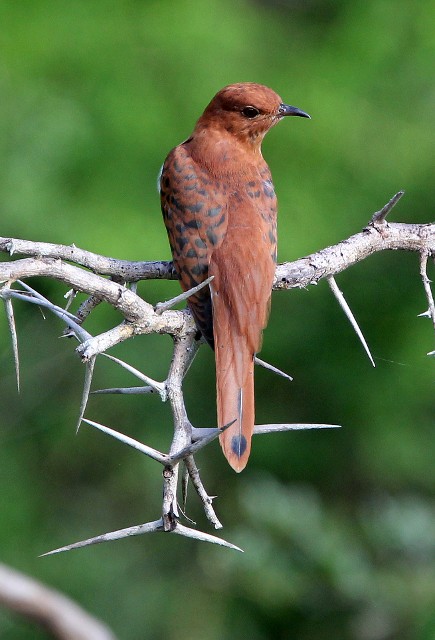
Grey-bellied Cuckoo seen in Yala. This is the rufous morph of this species.

Asian darter in Yala.
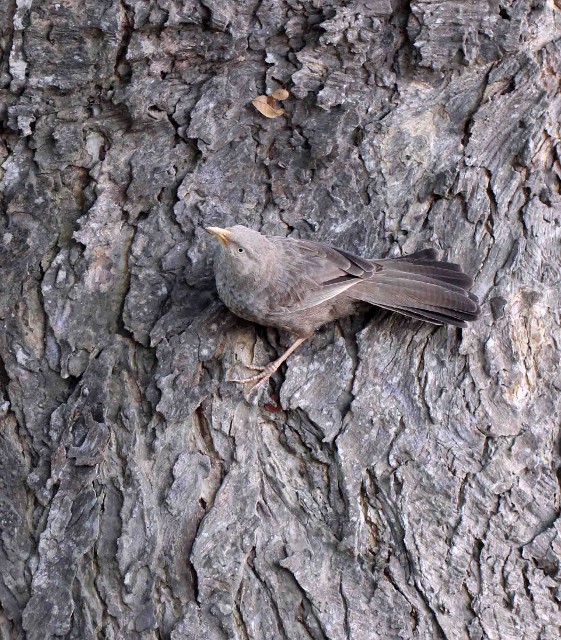
Som's picture of a Yellow-billed Babbler in Yala.
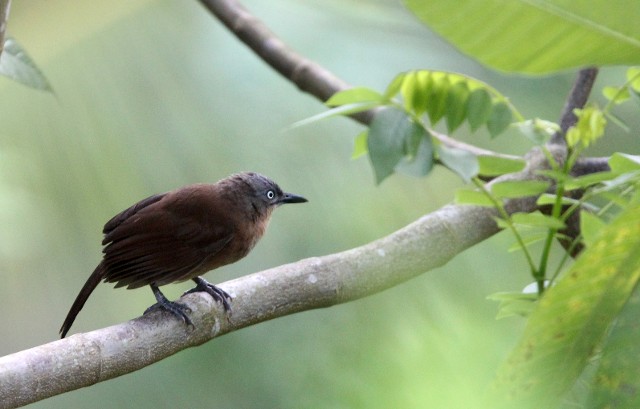
Yellow-eyed Babbler in Singharaja National Park
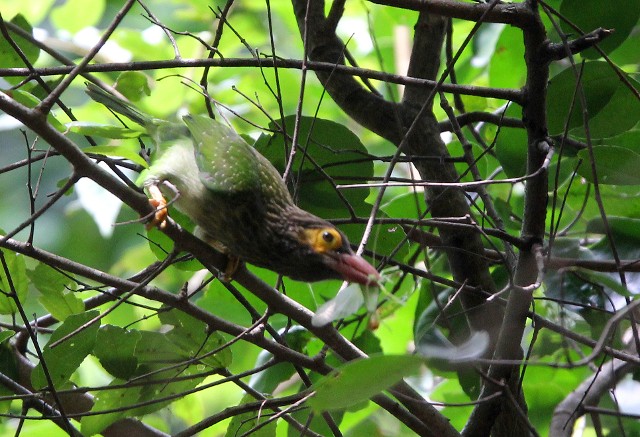
Brown-headed Barbets were very common throughout. This one was spotted in Sirigiya.
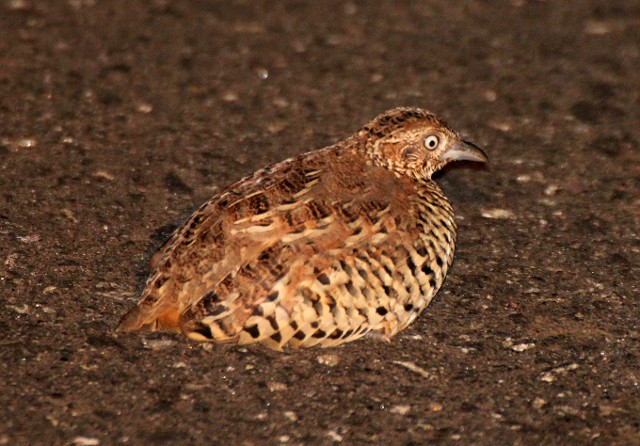
Barred Buttonquail spotted on the road in Sirigiya.

Blue-tailed Bee-eater in Udawalawa

Little Green Bee-eater in Udawalawa.

Black Bittern in the wetlands outside of Yala.

Red-vented Bulbul in Kitulgala
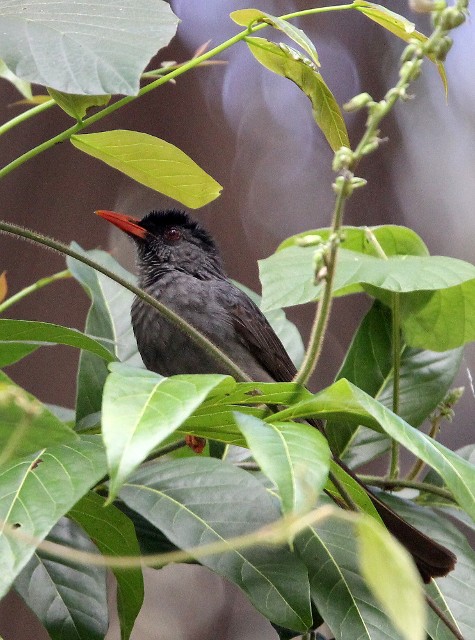
Square-tailed Black Bulbul in Kitulgala.

Yellow-browed Bulbul in Kitulgala.
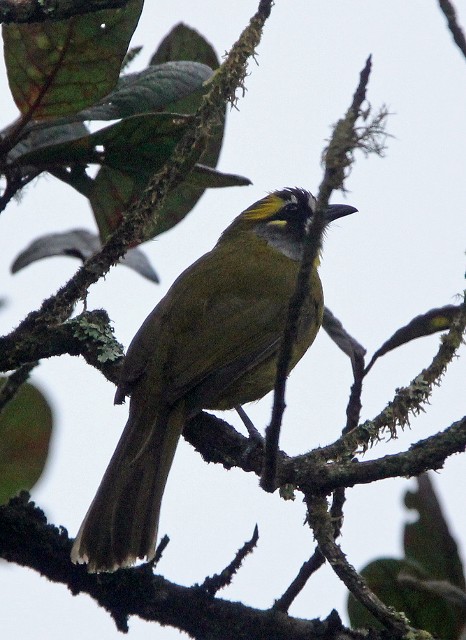
Yellow-eared Bulbul in Horton Plains
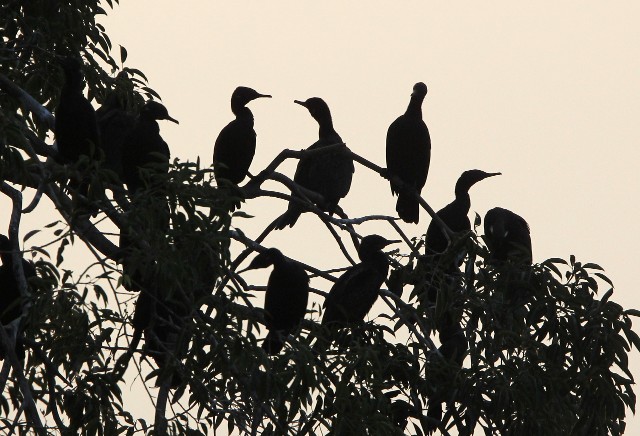
Indian Shags in Yala
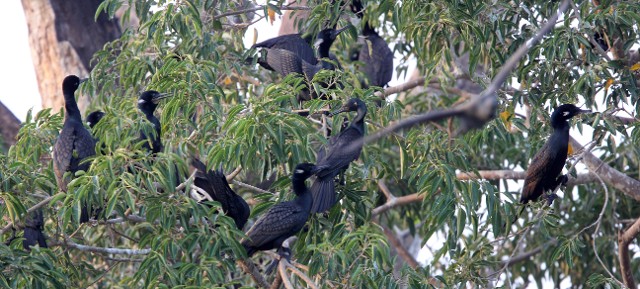
Indian Shags in Yala

Little Cormorant in Sirigiya
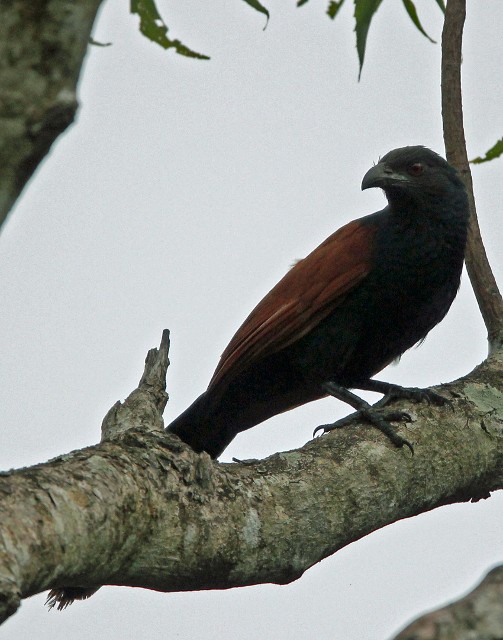
Southern Coucal in Sirigiya
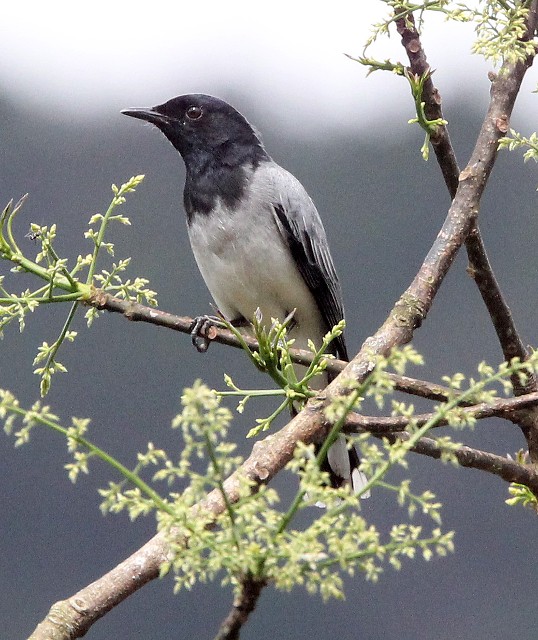
Black-headed Cuckooshrike in Kitulgala.

White-bellied Drongo in Kitulgala

Lesser Whistling Ducks in Nigambu Forest area.
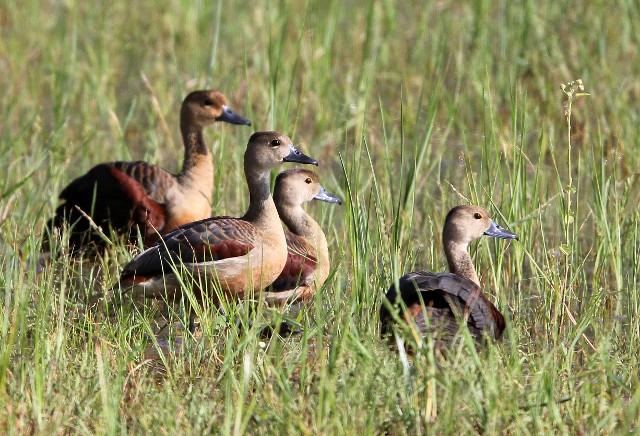
Lesser Whistling Ducks in Yala.
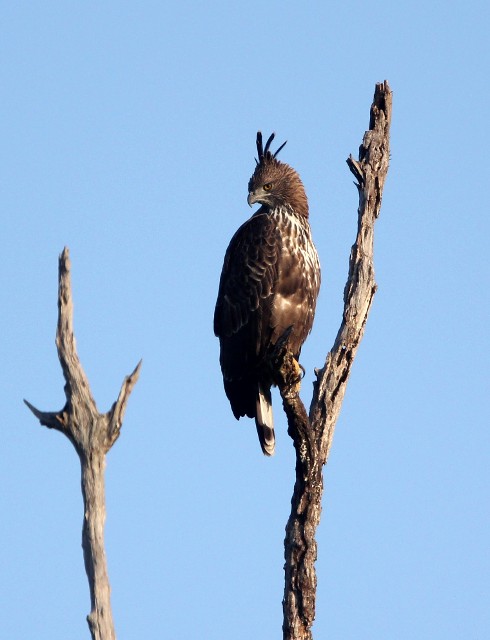
Changeable Hawk Eagle in Udawalawa.
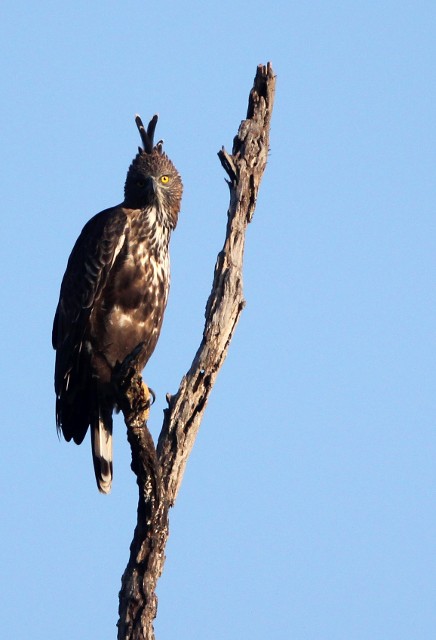
Changeable Hawk Eagle in Udawalawa.
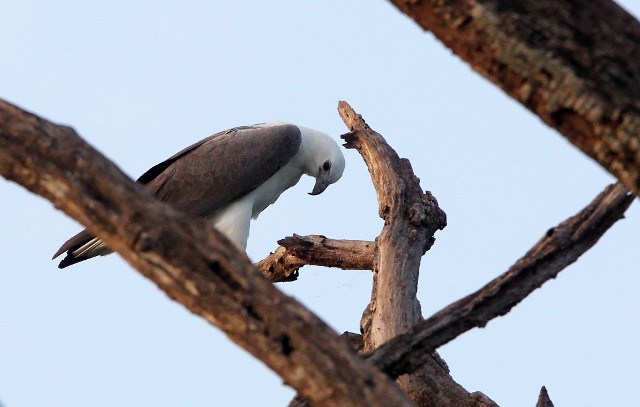
White-bellied Sea Eagle in Udawalawa.
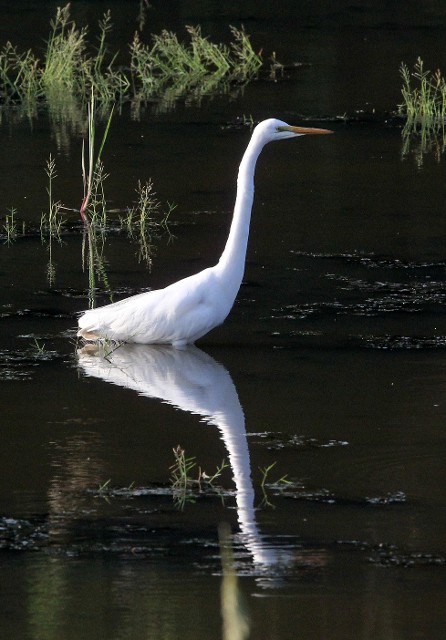
Great Egret in Yala.
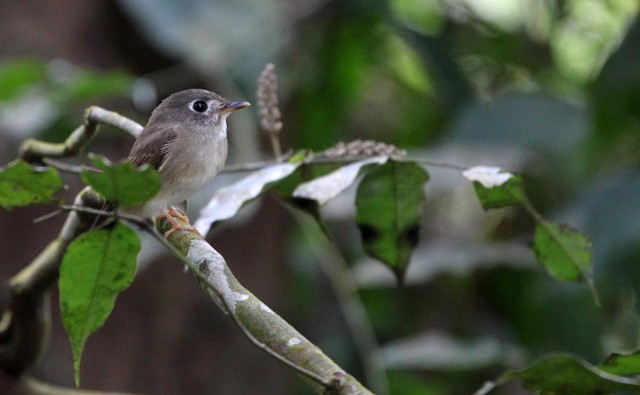
Asian Brown Flycatcher in Singharaja.
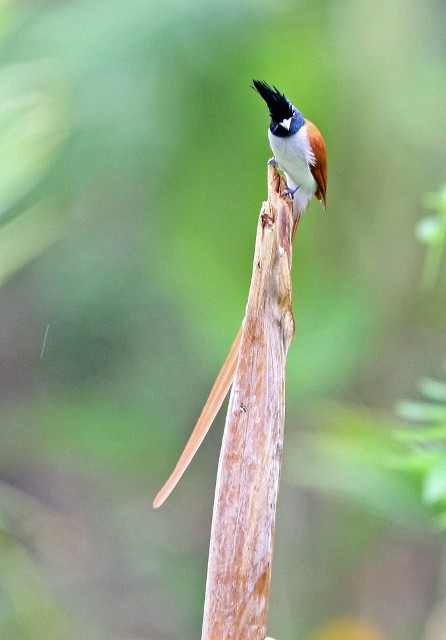
Asian Paradise Flycatcher in Sirigiya.
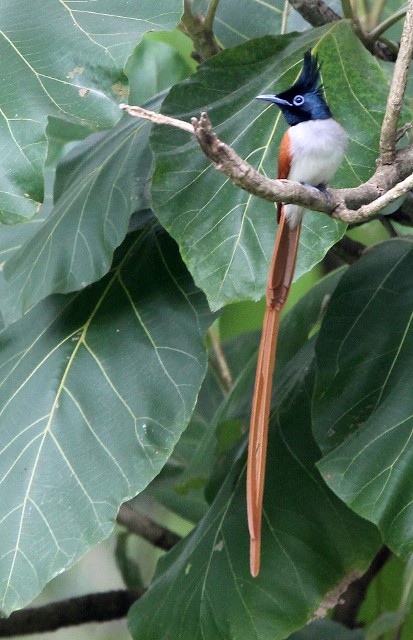
Asian Paradise Flycatcher.

Dusky Blue Flycatcher in Horton Plains.
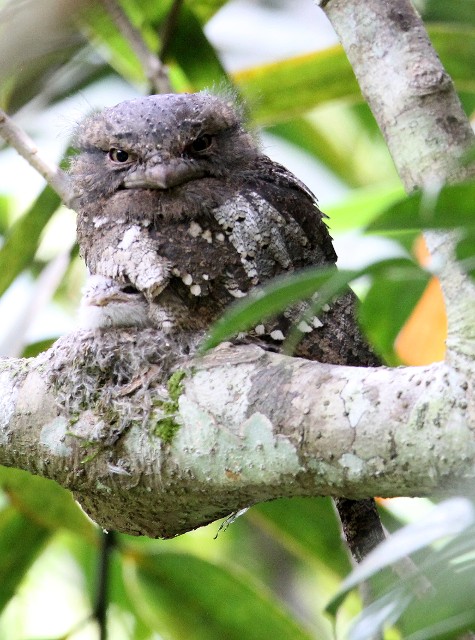
Ceylon Frogmouth and chick in Singharaja.
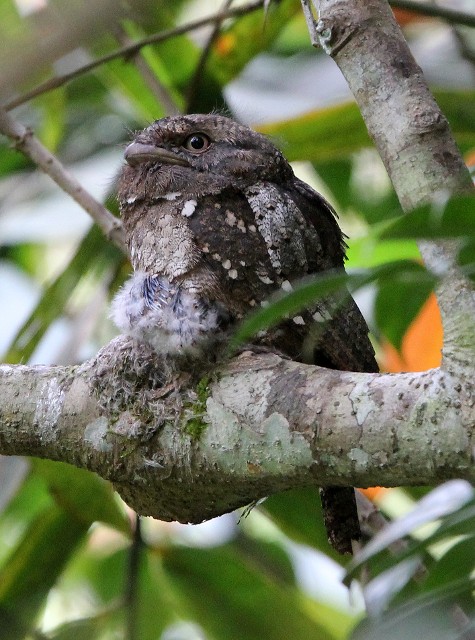
Ceylon Frogmouth in Singharaja.

Black-tailed Godwit in Yala.
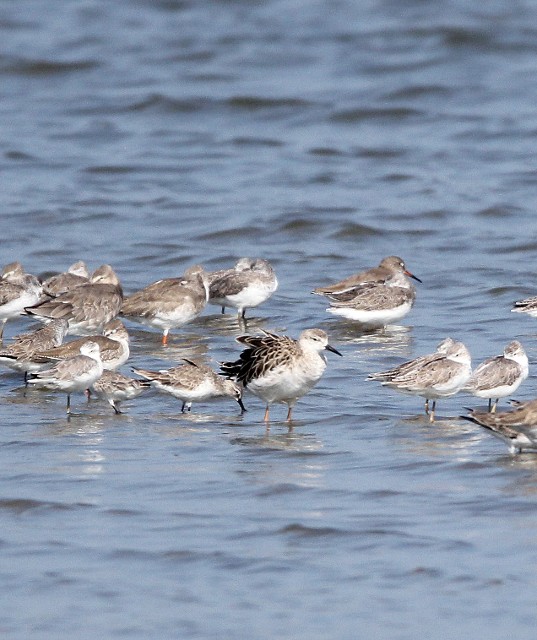
Turnstones and Common Greenshanks in Yala.
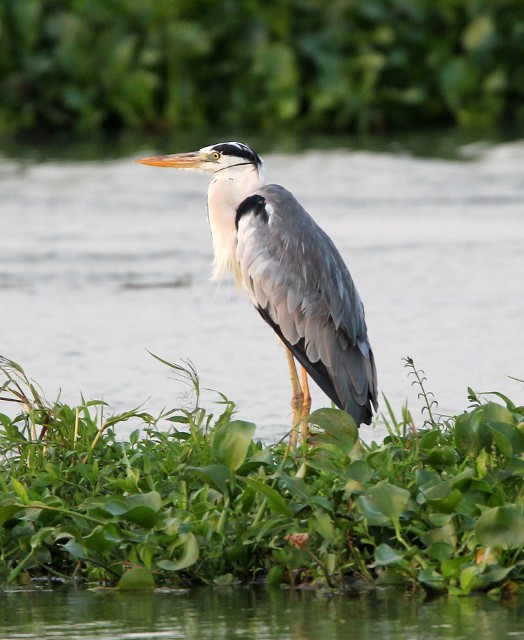
Grey Heron in Yala.
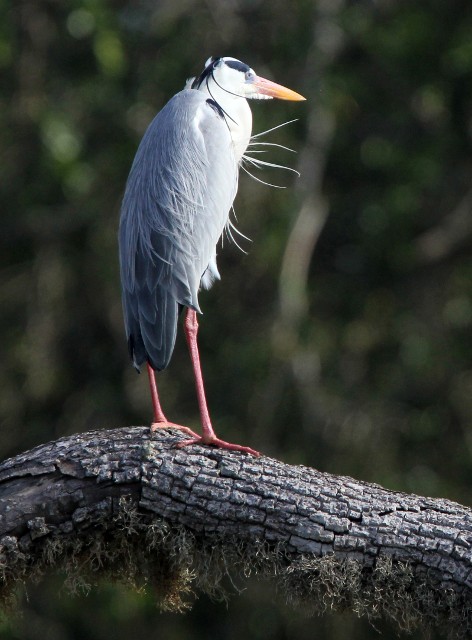
Grey Heron in Yala.
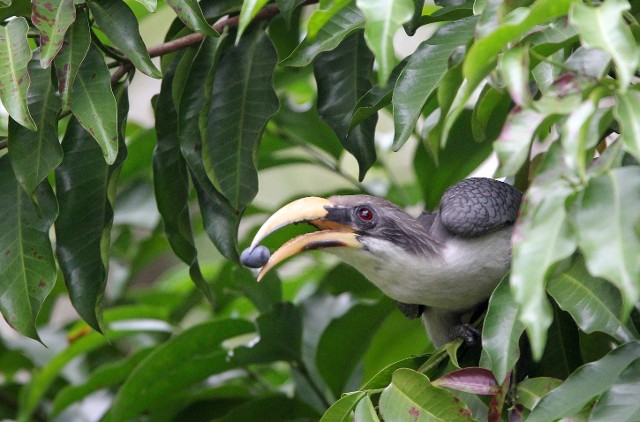
Ceylon Grey Hornbill in Sirigiya.
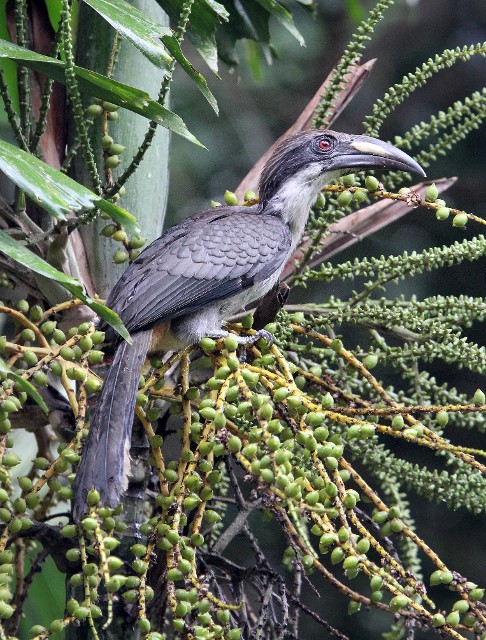
Sri Lanka Grey Hornbill in Kitulgala.

Malabar Pied Hornbill in Yala.
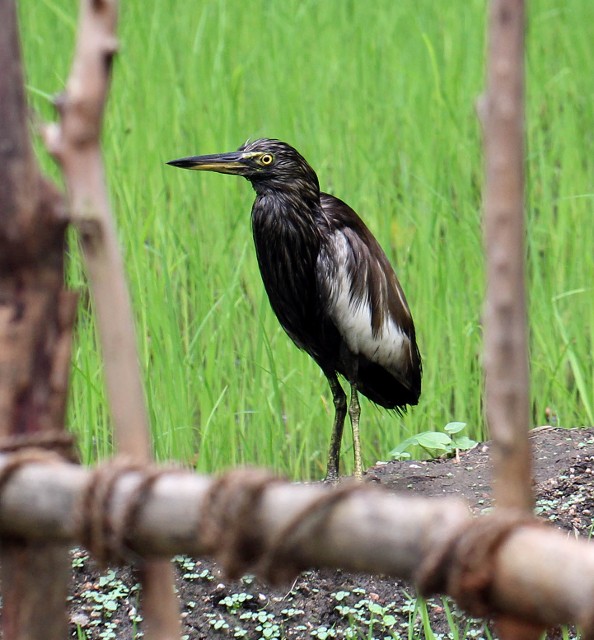
Very dark morph of an Indian Pond Heron in Sirigiya.
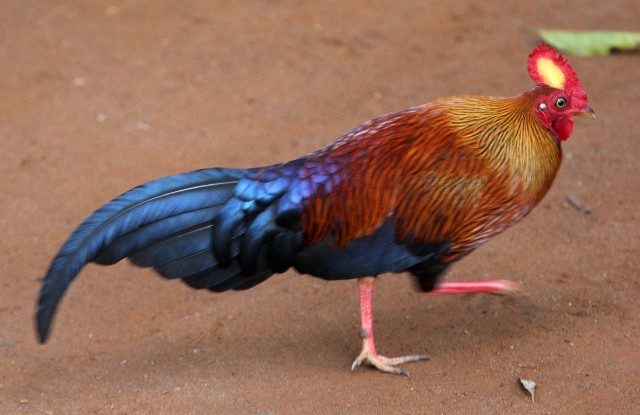
Sri Lankan Junglefowl in Singharaja.
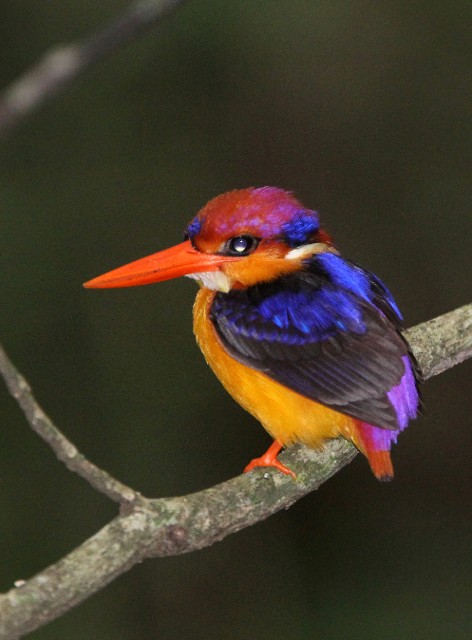
Black-headed Dwarf Kingfisher in Sirigiya.
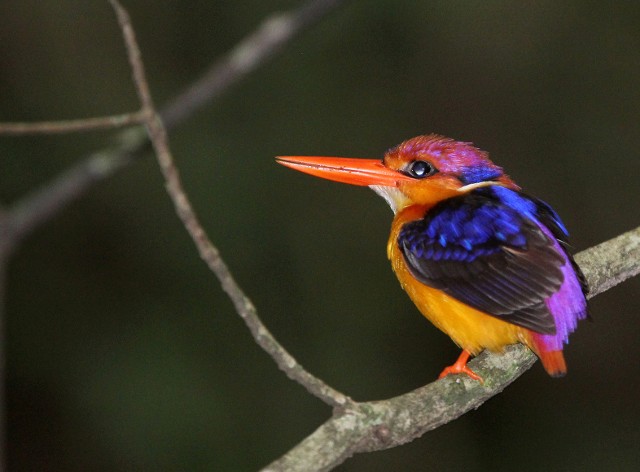
Black-headed Dwarf Kingfisher in Sirigiya.
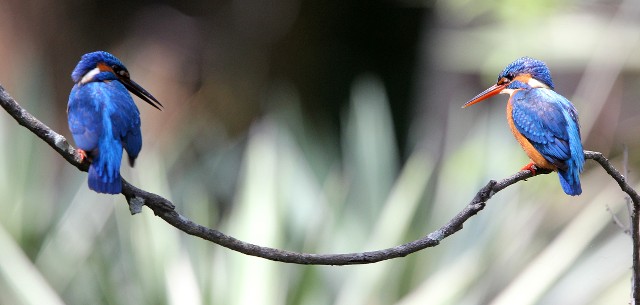
Common Kingfisher in Sirigiya.
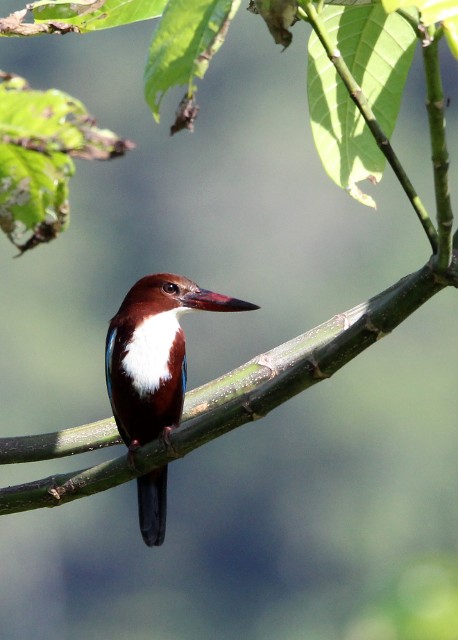
White-throated Kingfisher in Singharaja.
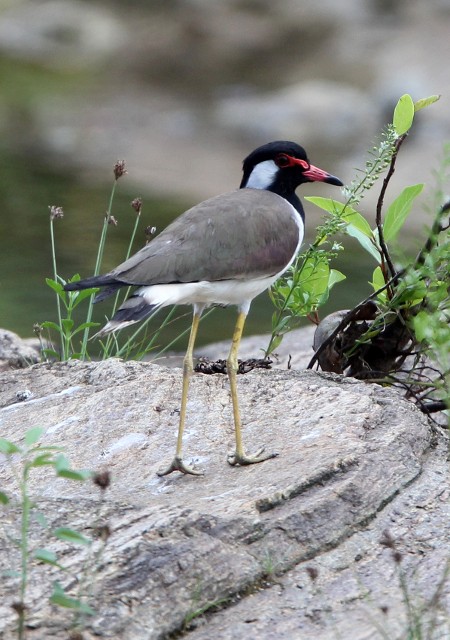
Red-wattled Lapwing in Udawalawa.

Jerdon's Leafbird in Sirigiya.

Ceylon Blue Magpie in Singharaja.
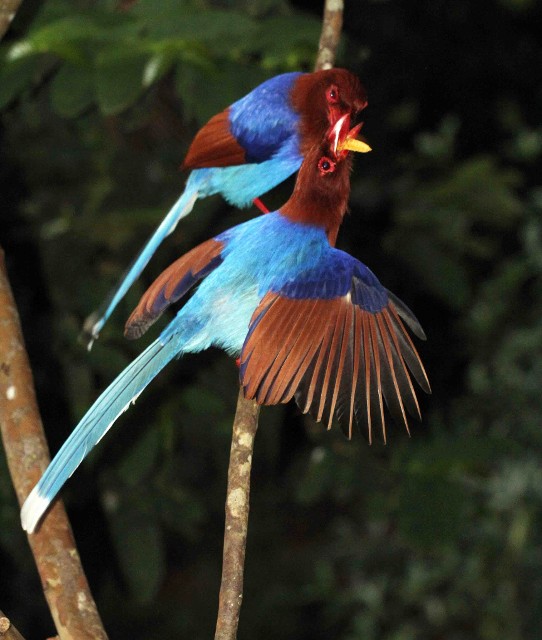
Ceylon Blue Magpie in Singharaja.

Male Orange Minivet in Kitulgala.
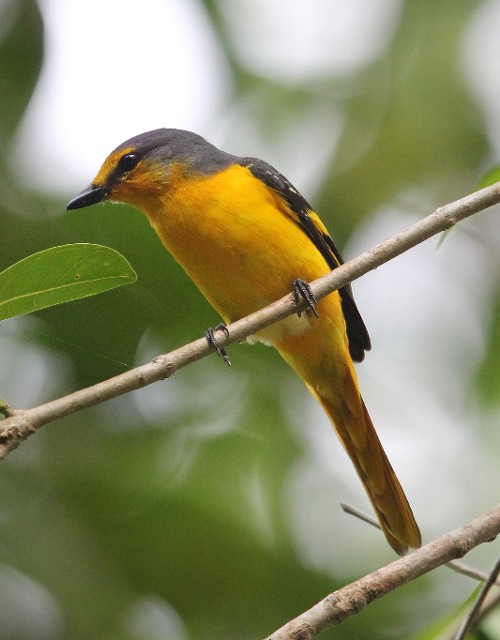
Female Orange Minivet in Kitulgala.
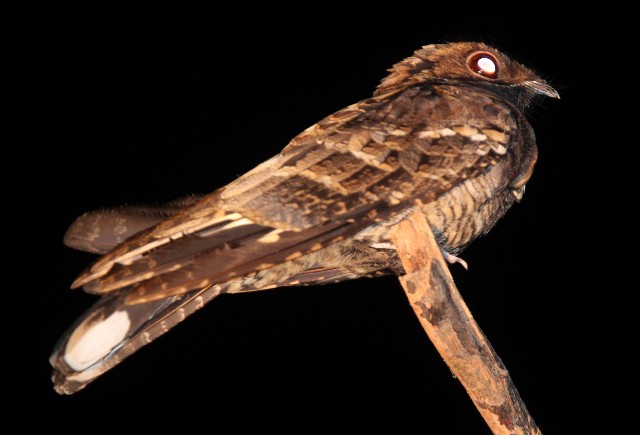
Indian Small Nightjar in Yala.
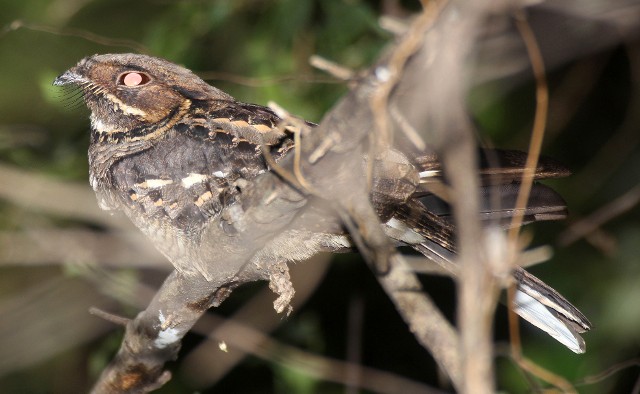
Jerdon's Nightjar in Sirigiya.
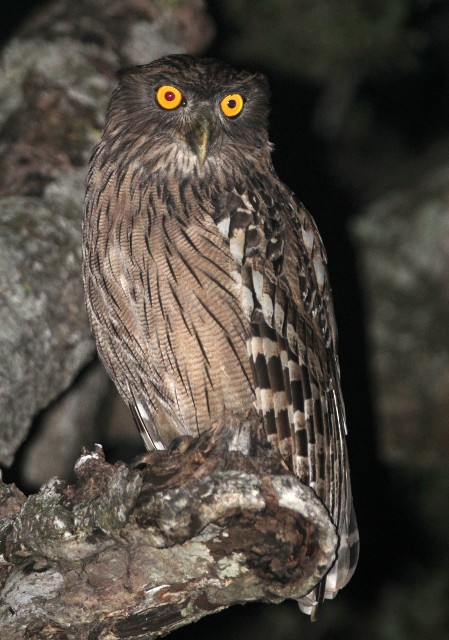
Brown Fish Owl in Yala.
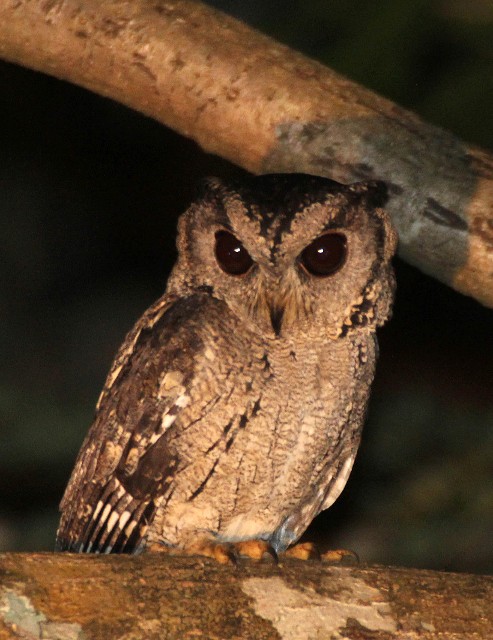
Oriental Scops Owl in Sirigiya.
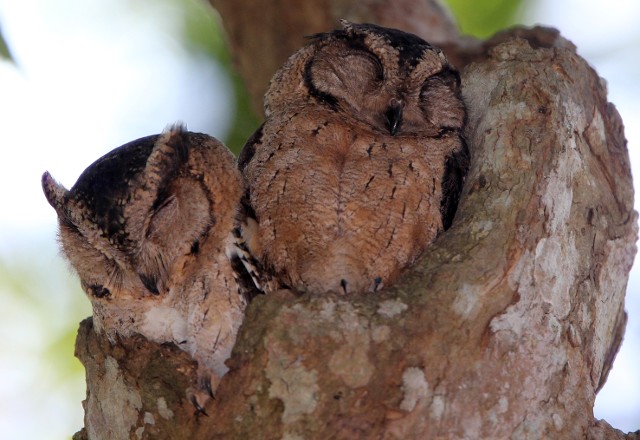
Oriental Scops Owl in Udawalawa.
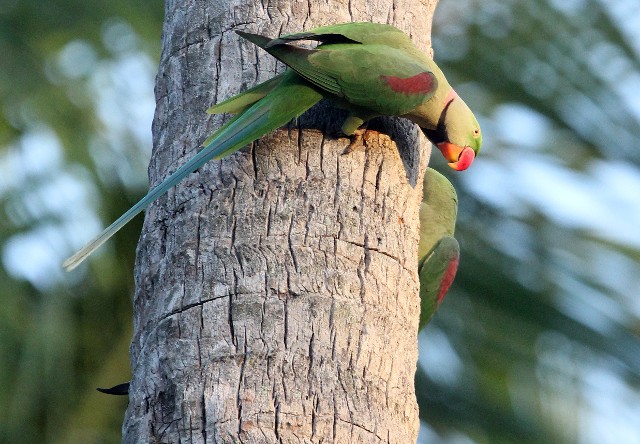
Alexandrine Parakeet in Nigambu.
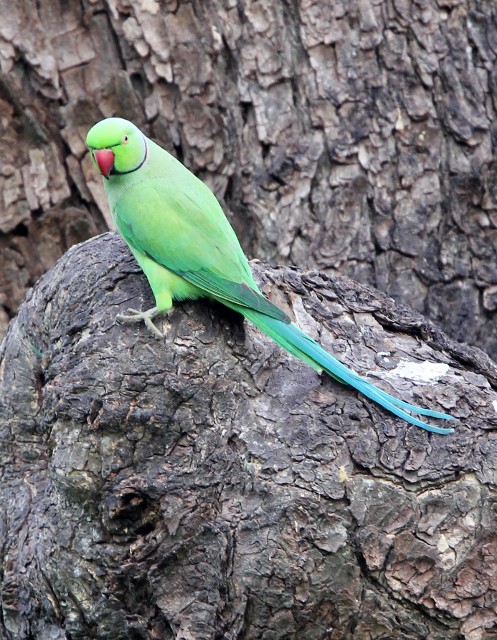
Alexandrine Parakeet in Yala.
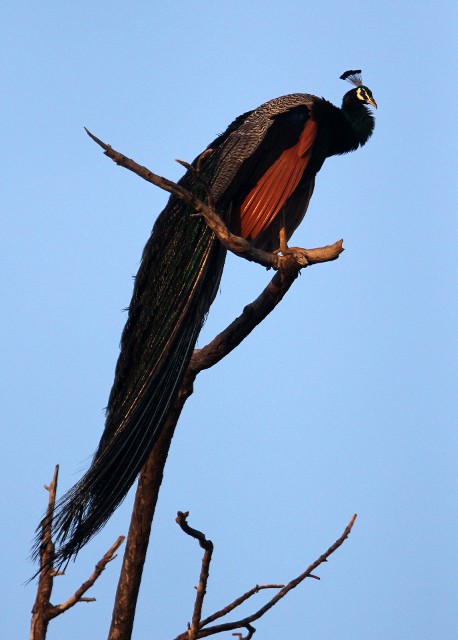
Peafowl in Udawalawa.

Pied Bushchat in Horton Plains.

Ceylon Green Pigeon in Sirigiya.
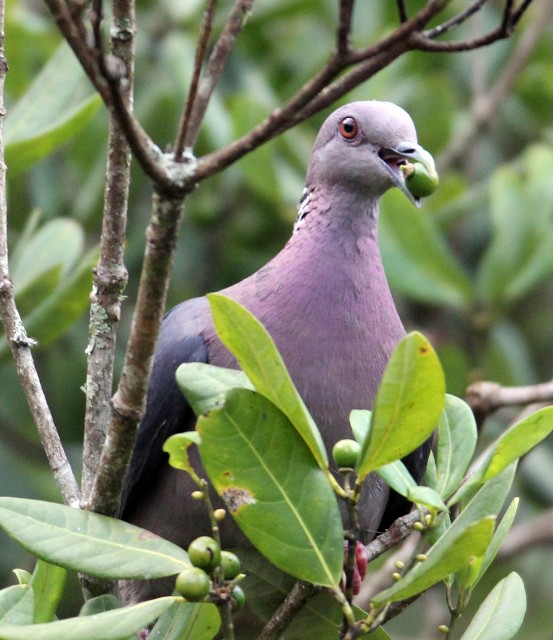
Ceylon Woodpigeon in Horton Plains.
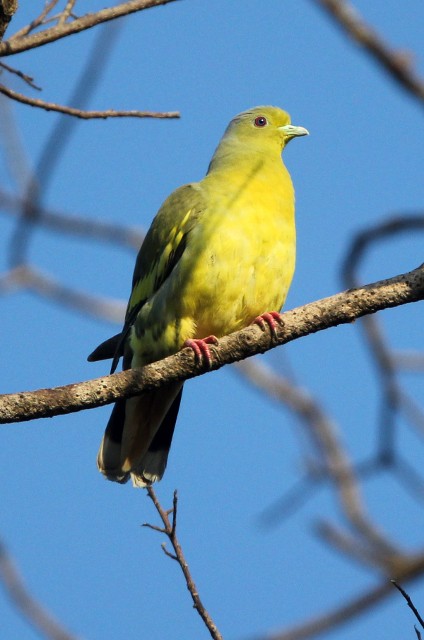
Orange-breasted Green Pigeon in Udawalawa.

Indian Pitta in Sirigiya.
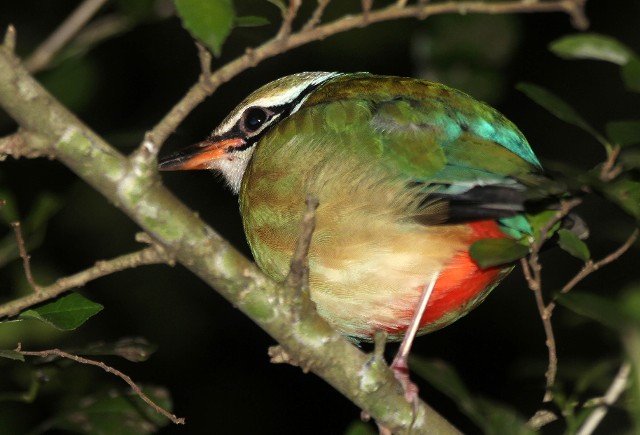
Indian Pitta in Sirigiya.


Plain Prinia in Yala.
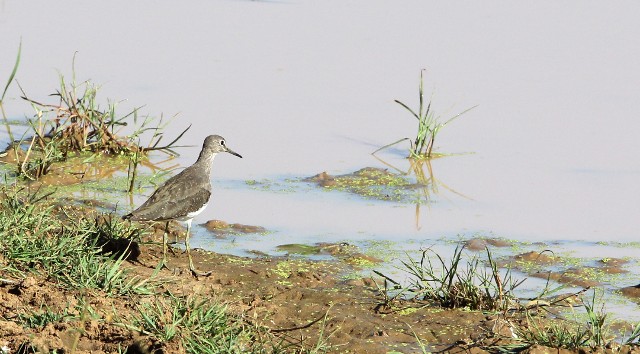
Green Sandpiper in Udawalawa.

Curlew Sandpiper in Yala.
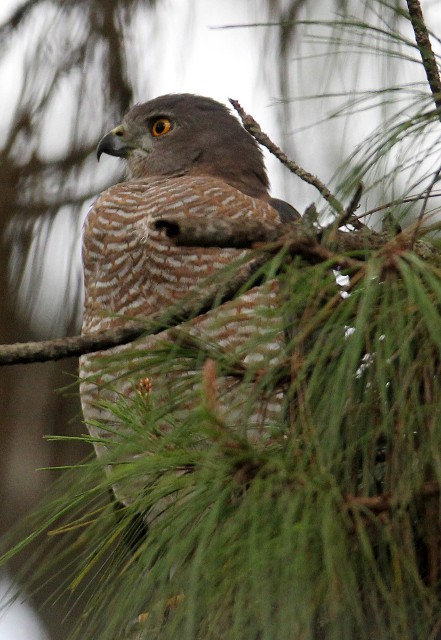
Shikra in Horton Plains.
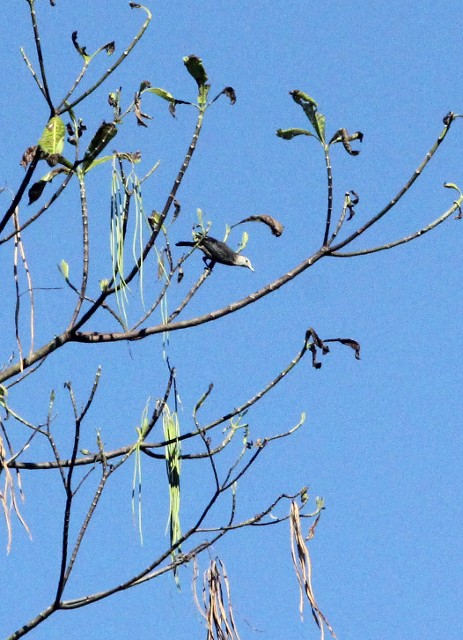
White-faced Starling in Singharaja.
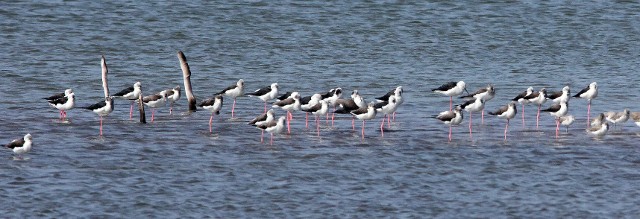
Black-winged Stilt in Yala.

Brown Shrike in Yala.
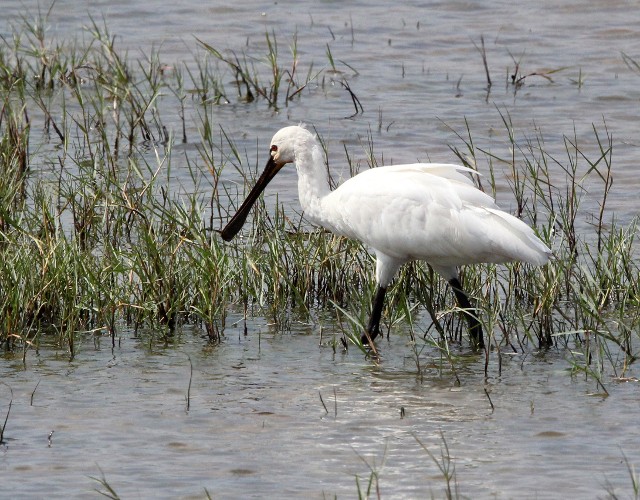
Eurasian Spoonbill in Yala.

Asian Openbill in Yala.
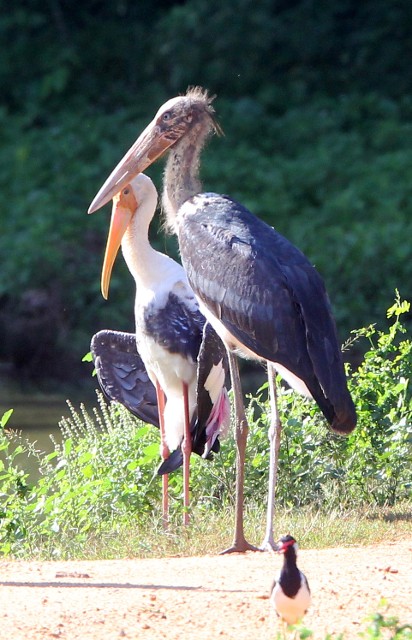
Lesser Adjutant Stork in Udawalawa.
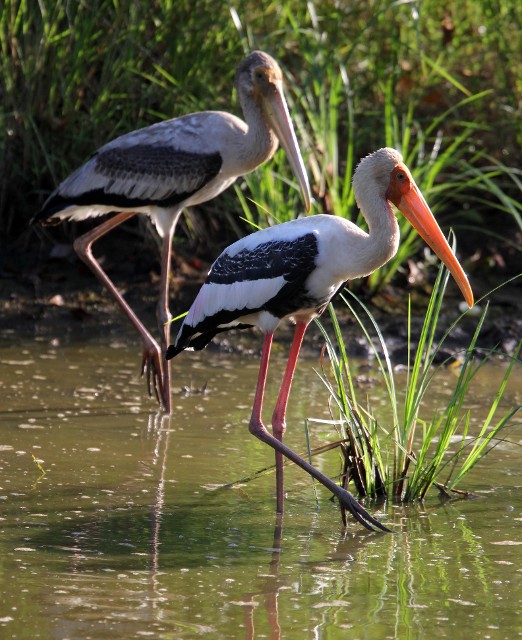
Painted Stork in Udawalawa.
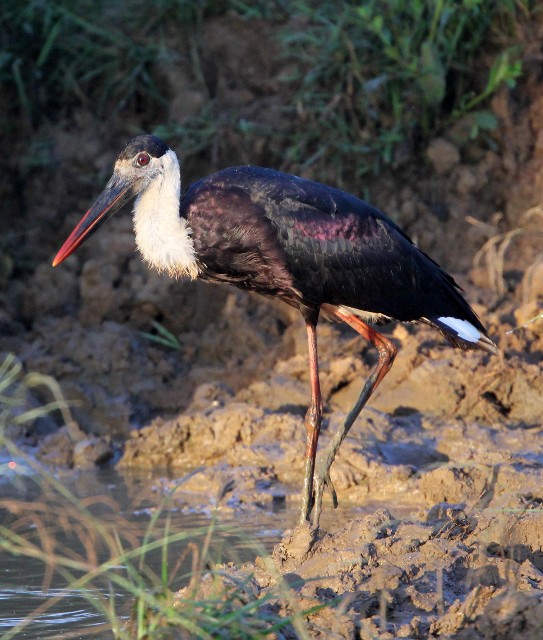
Woolly-necked Stork in Udawalawa.

Great Thick-knee in Yala.
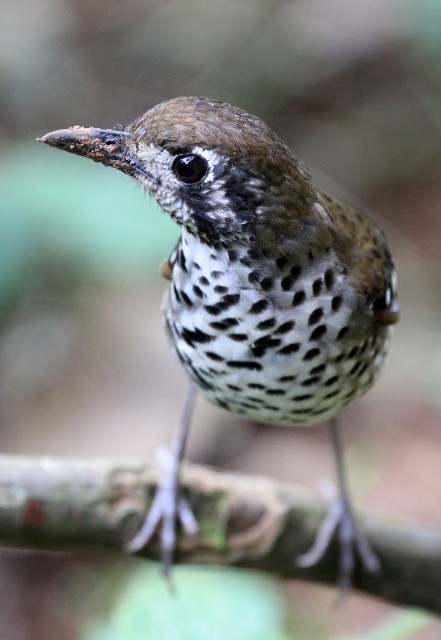
Spot-winged Ground Thrush in Singharaja.
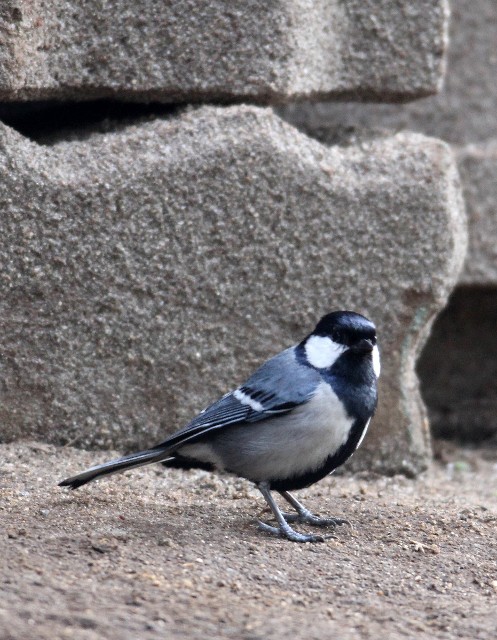
Southern Great Tit in Kitulgala.

Baya Weaver in Yala National Park

Streaked Weaver in Yala.

Oriental White-eye in Horton Plains.

White-naped Flameback in Sirigiya
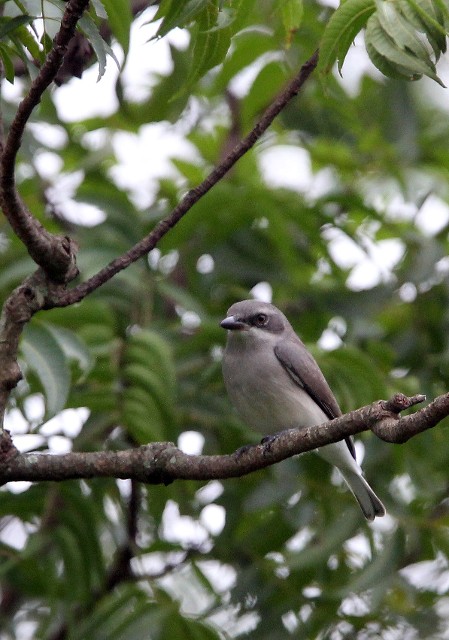
Ceylon Woodshrike in Sirigiya.
Sri Lanka Bird List
- Little Grebe
- Little Cormorant
- Indian Shag
- Great Cormorant
- Oriental Darter
- Little Egret
- Great Egret
- Intermediate Egret
- Grey Heron
- Purple Heron
- Eastern Cattle Egret (Bubulcus coromandus)
- Indian Pond Heron
- Black-crowned Night Heron
- Black-headed Ibis
- Yellow Bittern
- Chestnut Bittern (Ixobrychus cinnamomeus)
- Black Bittern (Dupetor flavicollus)
- Painted Stork
- Asian Openbill
- Woolly-necked Stork
- Eurasian Spoonbill
- Lesser Whistling Duck
- Cotton Teal (nettapus coromandelianus)
- Garganey
- Oriental Honey Buzzard
- Black-winged Kite
- Brahminy Kite
- White-bellied Sea Eagle
- Grey-headed Fish Eagle
- Crested Serpent Eagle
- Crested Goshawk (Accipiter trivirgatus)
- Shikra
- Besra Sparrowhawk (Accipiter virgatus)
- Himalayan Buzzard (Buteo burmanicus)
- Black Eagle
- Booted Eagle
- Rufous-bellied Eagle (Hieraetus kienerii)
- Legge’s Hawk Eagle (Nisaetus kilaarti)
- Common Kestrel
- Shahin Falcon (Falco peregrinis)
- Ceylon Junglefowl (Gallus lafayetii)
- Indian Peafowl
- Barred Buttonquail (Turnix suscitator)
- White-breasted Waterhen
- Watercock (Gallicrex cinerea)
- Purple Swamphen
- Common Moorhen
- Pheasant-tailed Jacana
- Pacific Golden Plover
- Little Ringed Plover
- Kentish Plover
- Lesser Sand Plover (Charadrius mongolus)
- Yellow-wattled Lapwing
- Red-wattled Lapwing
- Western Black-tailed Godwit (Limosa limosa)
- Common Redshank
- Common Greenshank
- Marsh Sandpiper
- Green Sandpiper
- Wood Sandpiper
- Common Sandpiper
- Ruddy Turnstone
- Little Stint
- Curlew Sandpiper
- Ruff
- Black-winged Stilt
- Indian Stone Curlew (Burhinus indicus)
- Great Thick-knee (Esacus recurvirostris)
- Brown-headed Gull
- Gull-billed Tern
- Common Tern
- Whiskered Tern
- Little Tern
- Ceylon Woodpigeon (Columba torringtonii)
- Spotted Dove
- Emeral Dove
- Orange-breasted Green Pigeon
- Ceylon Green-pigeon (Treron pompadora)
- Green Imperial Pigeon (Ducula aenea)
- Ceylon Hanging Parrot (Loriculus beryllinus)
- Alexandrine Parakeet
- Rose-winged Parakeet
- Plum-headed Parakeet
- Layard’s Parakeet (Psittacula calthropae)
- Southern Coucal (Centropus (sinensis) parroti)
- Sirkeer Malkoha (Taccocua leschenaultia)
- Blue-faced Malkoha (Phaenicophaeus viridirostris)
- Jacobin Cuckoo (Clamator jacobinus)
- Asian Koel
- Bandy Bay Cuckoo (Cacomantis sonneratii)
- Grey-bellied Cuckoo (Cacomantis passerinus)
- Indian Cuckoo
- Oriental Scops Owl (Otus sunia)
- Brown Fish-owl (Ketupa zeylonensis)
- Chestnut-backed Owlet (Glaucidium castanonotum)
- Ceylon Frogmouth (Batrachostomus moniliger)
- Jerdon’s Nightjar (Caprimulgus atripennis)
- Indian Little Nightjar (Caprimulgus asiaticus)
- Indian Swiftlet (Aerodramus unicolor)
- Asian Palm Swift
- Alpine Swift
- Little Swift
- Crested Treeswift
- Malabar Trogon (Harpactes fasciatus) Seen by Udittha only
- Common Kingfisher
- Black-backed Dwarf Kingfisher (Ceyx erithaca)
- Stork-billed Kingfisher
- White-throated Kingfisher
- Lesser Pied Kingfisher (Ceryle rudis)
- Little Green Bea-eater
- Blue-tailed Bee-eater (Merops philippinus)
- Chestnut-headed Bee-eater (Merops leschenaultia)
- Indian Roller
- Dollarbird
- Common Hoopoe
- Ceylon Grey Hornbill (Ocyceros gingalensis)
- Malabar Pied Hornbill (Anthracoceros coronatus)
- Brown-headed Barbet (Megalaima zeylonica)
- Yellow-fronted Barbet (Megalaima flavifrons)
- Ceylon Small Barbet (Megalaima rubricapillus)
- Coppersmith Barbet
- Indian Pygmy Woodpecker (Dendrocops nanus)
- Yellow-fronted Pied Woodpecker (Dendrocops mahrattensis)
- Lesser Yellownape (Picus chlorolophus)
- Black-rumped Flameback (Dinopium benghalense)
- Crimson-backed Flameback (Chrysocolaptes stricklandi)
- White-naped Flameback (Chrysocolaptes festivus)
- Indian Pitta (Pitta brachyuran)
- Jerdon’s Bushlark (Mirafra affinis)
- Ashy-crowned Finch Lark (Eremopterix griseus)
- Oriental Skylark
- Barn Swallow
- Hill Swallow
- Ceylon Swallow (Hirundo hyperythra)
- Forest Wagtail (Dendronanthes indicus)
- Western Wagtail
- Grey Wagtail
- Richard’s Pipit
- Paddyfield Pipit (Anthus rufulus)
- Blyth’s Pipit (Anthus godlewskii)
- Large Cuckooshrike (Coracina macei)
- Black-headed Cuckooshrike (Coracina melanoptera)
- Small Minivet (Pericrocotus cinnamomeus)
- Orange Minivet (Pericrocotus flammeus)
- Pied Flycatcher-shrike (Hemipus picatus)
- Ceylon Woodshrike (Tephrodornis affinis)
- Asian Paradise Flycatcher
- Black-naped Blue Monarch
- White-browed Fantail (Rhipidura aureola)
- Black-capped Bulbul (Pycnonotus meanicterus)
- Red-vented Bulbul
- Yellow-eared Bulbul (Pycnonotus penicillatus)
- White-browed Bulbul (Pycnonotus luteolus)
- Yellow-browed Bulbul (Iole indica)
- Square-tailed Black Bulbul (Hypsipetes ganeesa)
- Common Iora
- Marshall’s Iora (Aegithina nigrolutea)
- Gold-fronted Leafbird (Chloropsis aurifrons)
- Jerdon’s Leafbird (Chloropsis jerdoni)
- Brown Shrike
- Long-tailed Shrike
- Spot-winged Ground Thrush (Zoothera spiloptera)
- Indian Blackbird (Turdus simillimus)
- Ceylon Whistling Thrush (Myophonus blighi)
- Asian Brown Flycatcher
- Brown-breasted Flycatcher (Muscicapa muttui)
- Dusky Blue Flycatcher (Eumyias sordidus)
- Grey-headed Canary-flycatcher (Culicicapa ceylonensis)
- Indian Blue Robin (Luscinia brunnea)
- Oriental Magpie Robin
- White-rumped Shama
- Indian Black Robin
- Pied Bushchat (Saxicola fulicatus)
- Ashy-headed Laughingthrush (Garrulax cinereifrons)
- Brown-capped Babbler (Pellorneum fuscoicapillus)
- Ceylon Scimitar Babbler (Pomatorhinus melanurus)
- Tawny-bellied Babbler (Dumetia hyperythra)
- Dark-fronted Babbler (Rhopocichla atriceps)
- Yellow-eyed Babbler (Chrysomma sinense)
- Ceylon Rufous Babbler (Turdoides rufescens)
- Yellow-billed Babbler (Turdoides affinis)
- Zitting Cisticola
- Grey-breasted Prinia
- Ashy Prinia
- Jungle Prinia (Prinia sylvatica)
- Plain Prinia
- Common Tailorbird
- Ceylon Bush-warbler (Elaphrornis palliseri)
- Blyth’s Reed-warbler (Acrocephalus dumetorum)
- Indian Reed-warbler (Acrocephalus brunnescens)
- Bright-green Warbler (Phylloscopus nitidus)
- Large-billed Leaf-warbler (Phylloscopus magnirostris)
- Southern Great Tit (Parus cinereus)
- Velvet-fronted Nuthatch (Sitta frontalis)
- Thick-billed Flowerpecker (Dicaeum agile)
- Legge’s Flowerpecker (Dicaeum vincens)
- Pale-billed Flowerpecker (Dicaeum erythrorhynchos)
- Purple-rumped Sunbird (Leptocoma zeylonica)
- Purple Sunbird (Cynnyris asiaticus)
- Loten’s Sunbird (Cynnyris lotenius)
- Ceylon White-eye (Zosterops palpebrosus)
- Oriental White-eye
- Indian Silverbill (Euodice malabarica)
- White-rumped Munia (Lonchura striata)
- Black-throated Munia (Lonchura kelaarti)
- Scaly-breasted Munia
- Tricoloured Munia (Lonchura Malacca)
- House Sparrow (Passer domesticus indica)
- Streaked Weaver (Ploceus manyar)
- Baya Weaver
- White-faced Starling (Sturnia albofrontata)
- Brahminy Starling
- Rosy Starling
- Common Myna
- Ceylon Hill Myna (Gracula ptilogenys)
- Lesser Hill Myna (Gracula indica)
- Black-hooded Oriole
- Ashy Drongo
- White-bellied Drongo (Dicrurus caerulescens)
- Greater Racket-tailed Drongo
- Ceylon Crested Drongo (Dicrurus lophorinus)
- Ashy Woodswallow (Artamus fuscus)
- Ceylon Blue Magpie (Urocissa ornate)
- House Crow
- Indian Jungle Crow (Corvus culminatus)
Other Critters of Sri Lanka
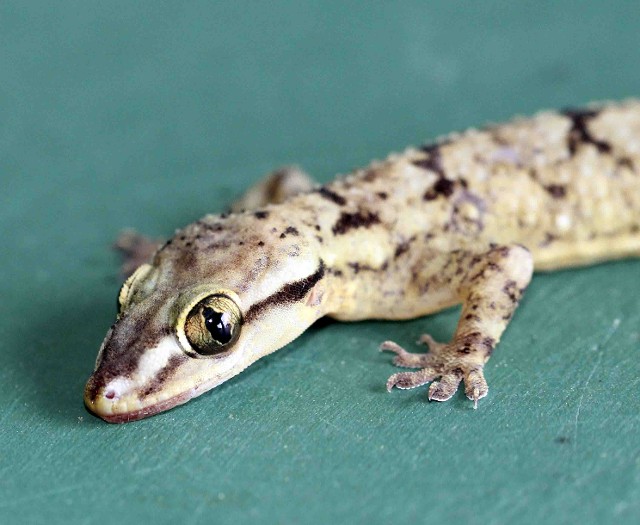
Bark Gecko (Hemidactylus leschenaulti) from Yala.
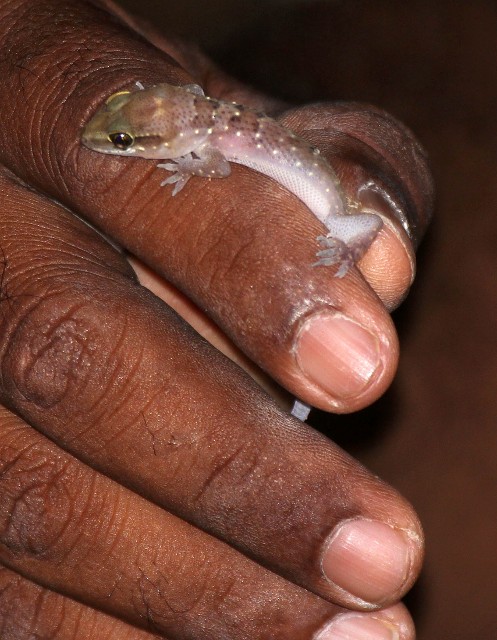
Gecko - Hemidactylus species found in Sirigiya

Rhino-horned Lizard (Ceratophora stoddartii)

Rhino-horned Lizard (Ceratophora stoddartii) from Nuwara Eliya
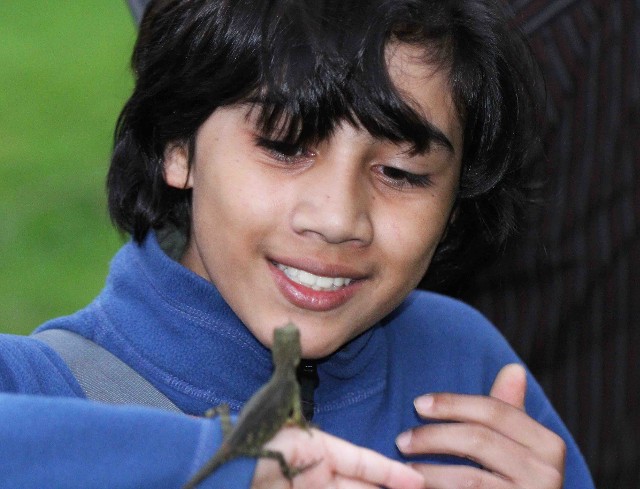
Rhino-horned Lizard (Ceratophora stoddartii)

Green Garden Lizard (Calotes calotes) in Sirigiya.
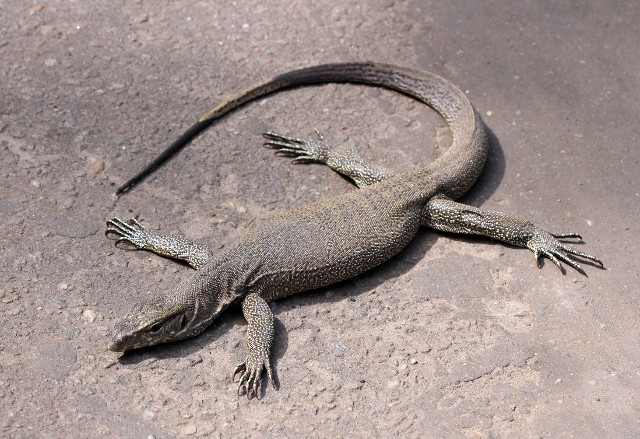
Land Monitor Lizard (Varanus bengalensis) seen in Sirigiya.
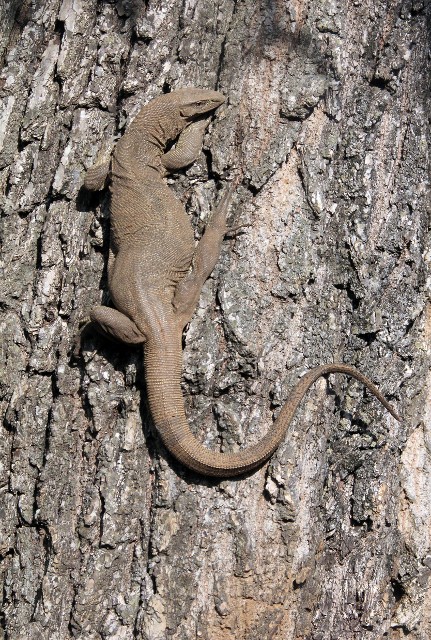
Land Monitor Lizard (Varanus bengalensis) in Yala.
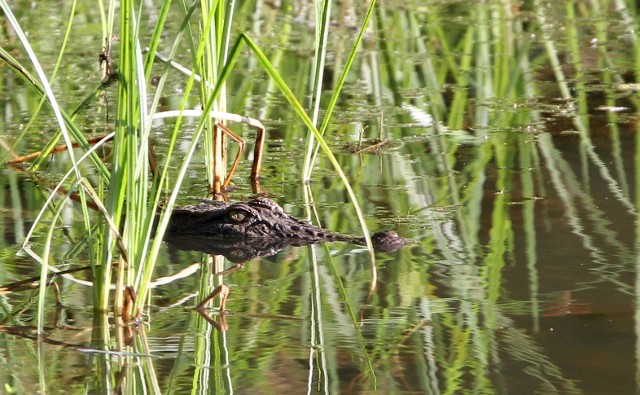
Mugger Crocodile (Crocodylus palustris) seen in Udawalawa.
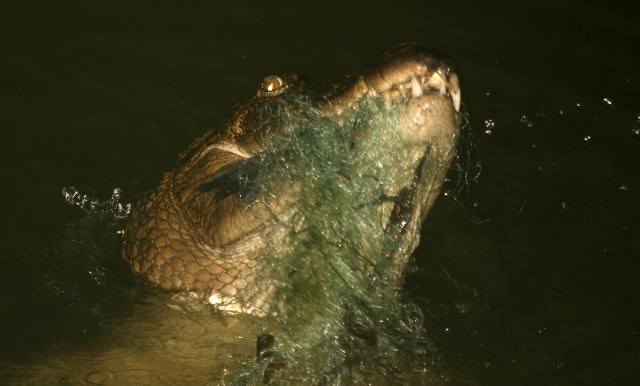
Mugger Crocodile (Crocodylus palustris) Sirigiya.
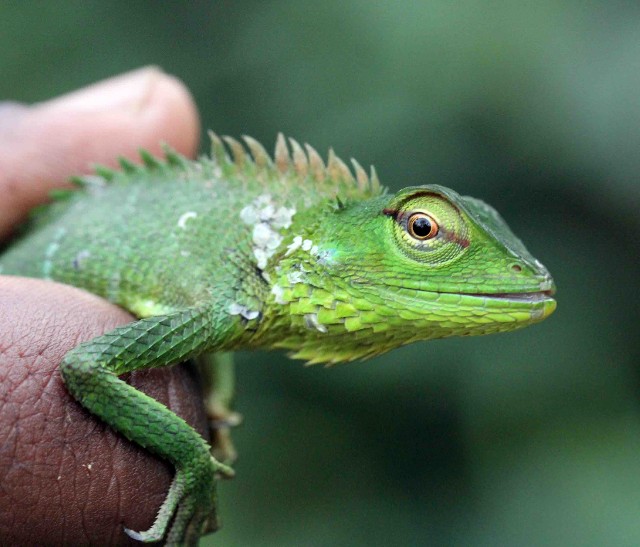
Female Green Forest Lizard (Calotes calotes) in Kitulgala.

Turtle species found in Sirigiya.
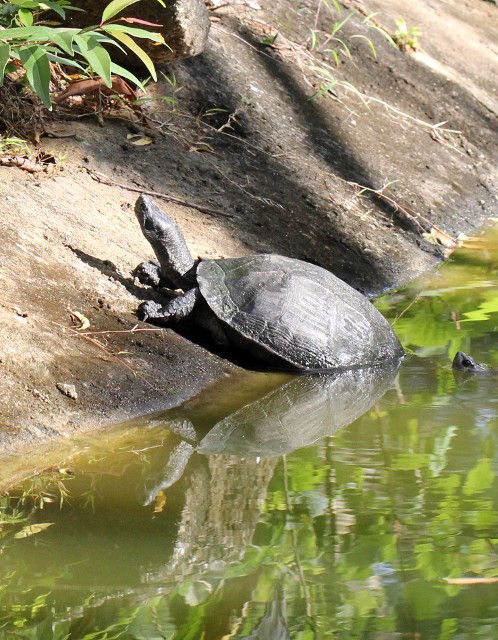
Turtle enjoying a warm morning in Sirigiya.
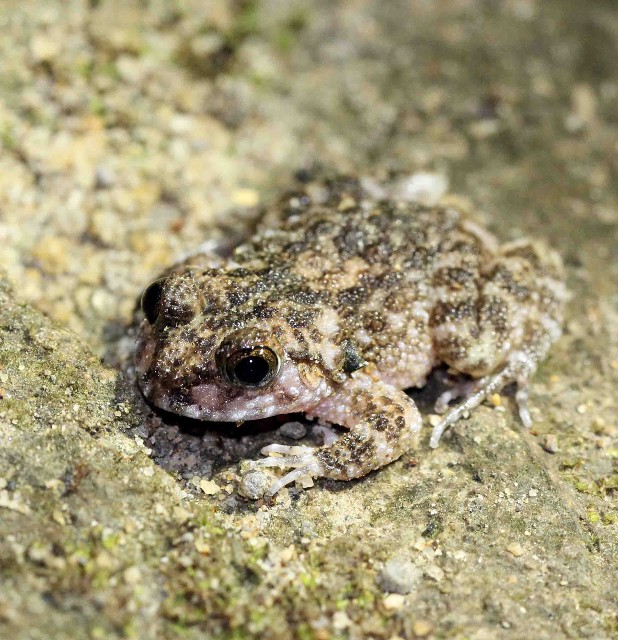
Sri Lankan Rock Frog (Nannophrys ceylonensis) in Kitulgala
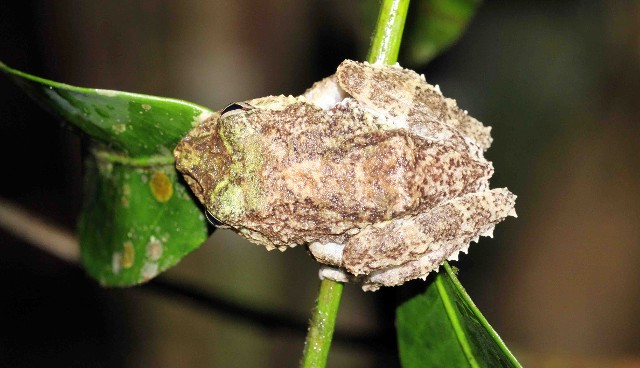
Tuburcle Tree Frog (Pseudophilautus cavirostris) in Kitulgala

Tuburcle Tree Frog (Pseudophilautus cavirostris) in Kitulgala

Kelaart's Dwarf Toad (Adenomus kelaartii) in Kitulgala

Common House Toad (Dittaphrynus melanosticitus) in Kitulgala.
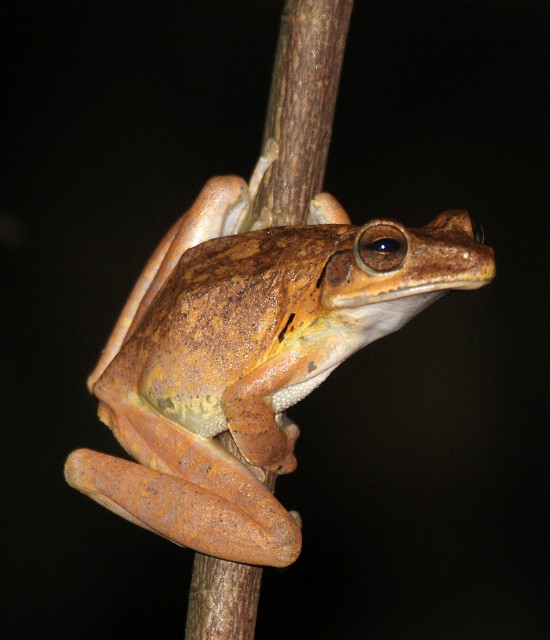
Common Hour Glass Tree Frog (Polypedutes crucuger) in Sirigiya.
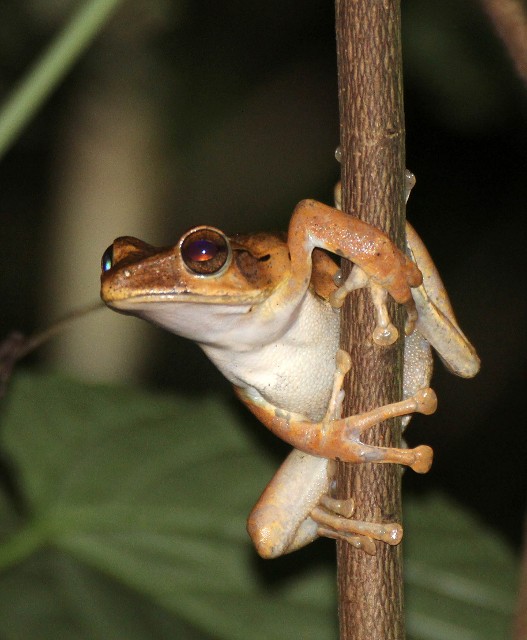
Common Hour Glass Tree Frog (Polypedutes crucuger) in Sirigiya.

Kotogama's Dwarf Toad (Bufo kotagamai) in Kitulgala.

Yellow-striped Caecilian (Ichthyophis bannanicus) in mountains south of Udawalawa.
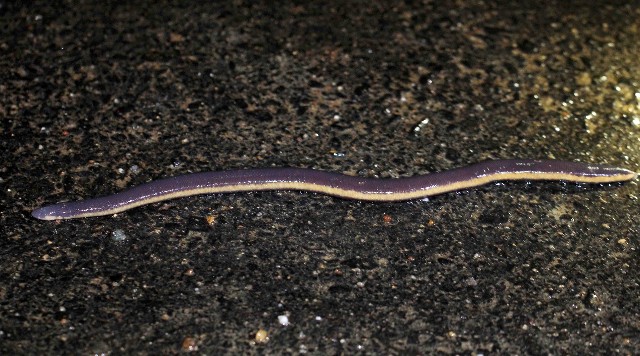
Yellow-striped Caecilian (Ichthyophis bannanicus) in mountains south of Udawalawa.

Kangaroo Lizard (Otocryptis woegmanni) in Nigambu.
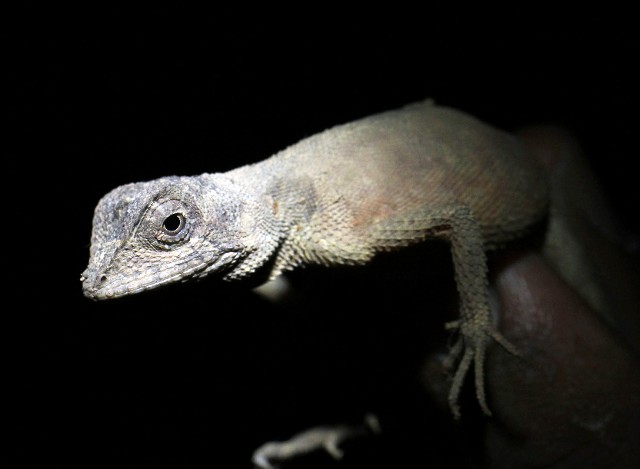
Kangaroo Lizard (Otocryptis woegmanni) in Nigambu.

Millard's Hump-nosed Vipier (Hypnate nepa) in Sirigiya
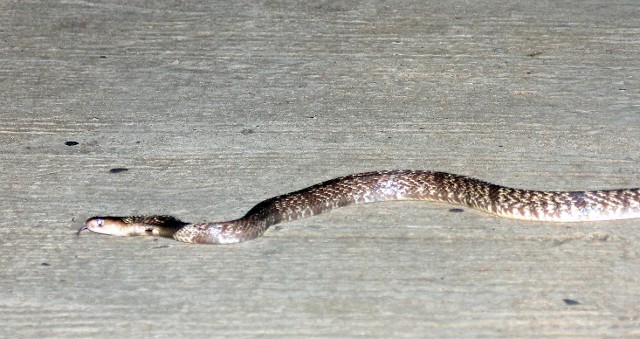
Indian Cobra (Naja naja) Sirigiya
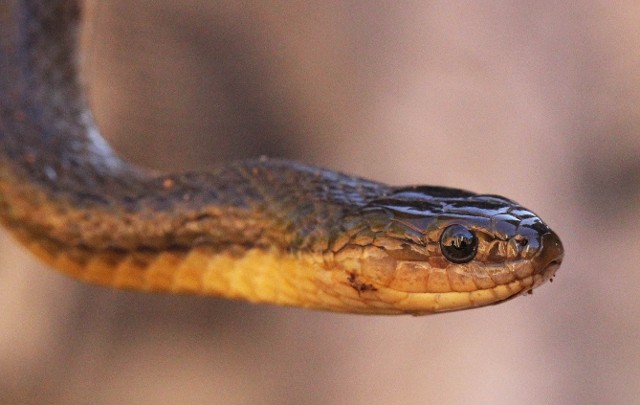
Olive Keelback (Atretrium schistosum) Singharaja
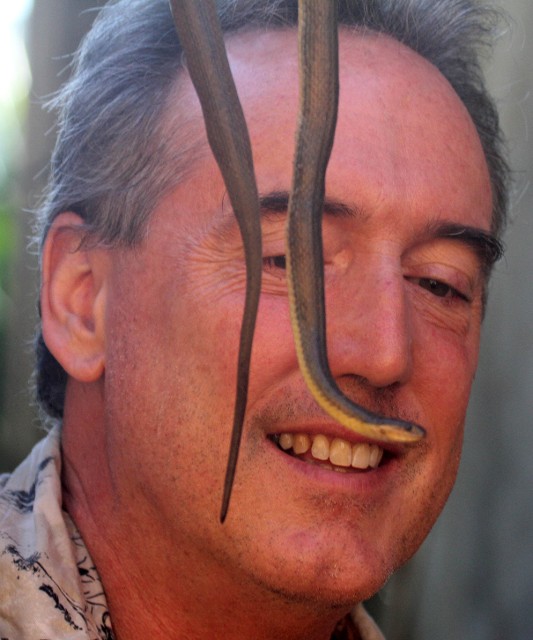
Olive Keelback (Atretrium schistosum) Singharaja
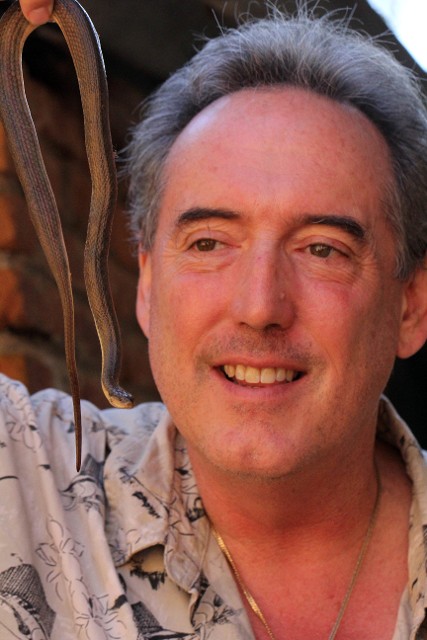
Olive Keelback (Atretrium schistosum) Singharaja
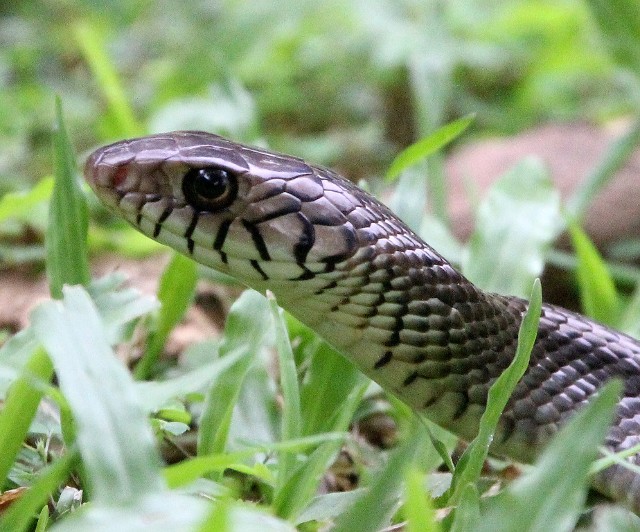
Snake species from Sirigiya.

Singharaja was filled with amazing moths. Here is a spectacular Saturniid.
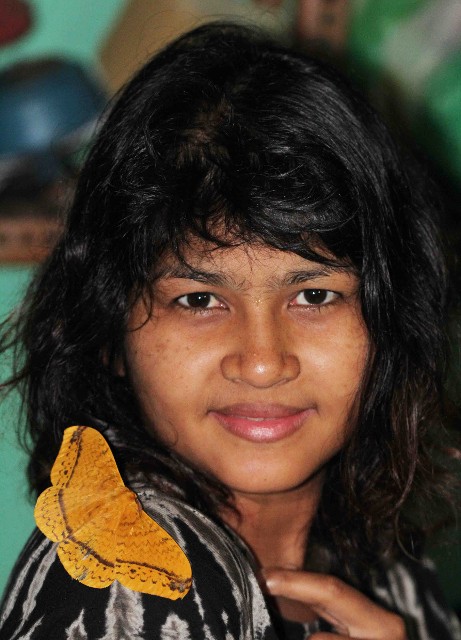
Two beautiful butterflies.
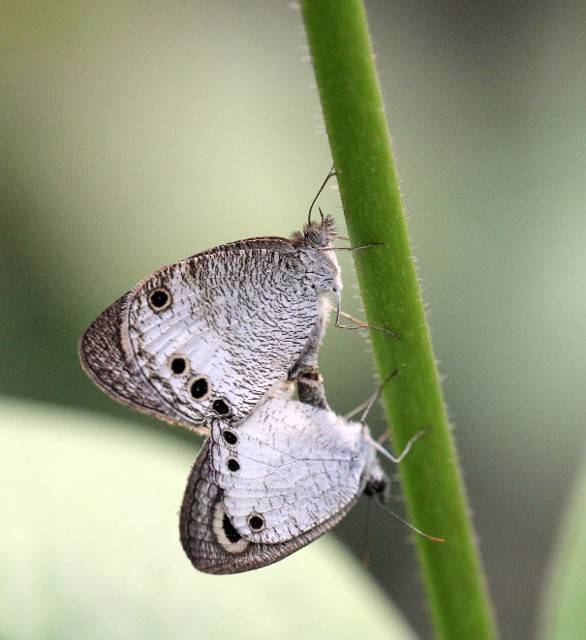
Oops!
Other Stuff

Our final meal in Sri Lanka. We wanted some seafood and went to one of the trendy tourist spots in Colombo...

Happy 2014!!!!
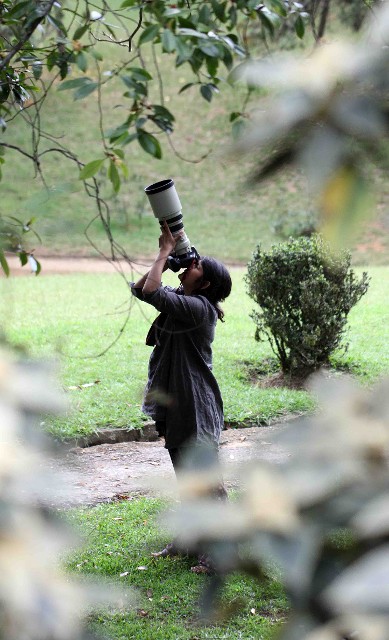
Som getting something on film at Nuwara Eliya Arboretum.

Nuwara Eliya sunset...
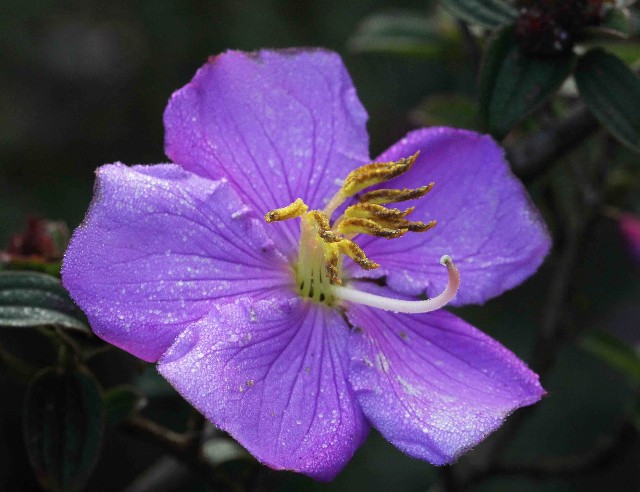
Nuwara Eliya Botanical Gardens
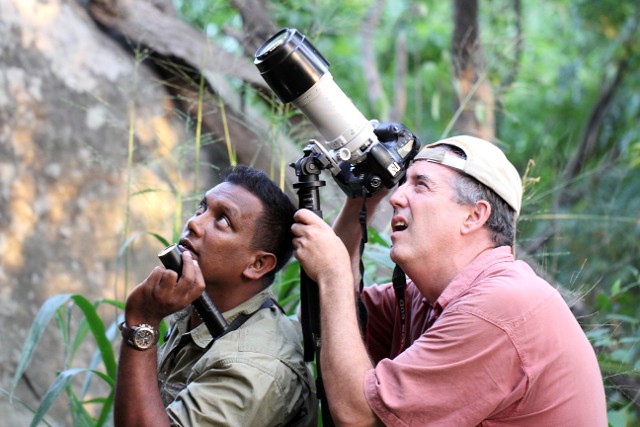
Photographing bats in Sirigiya.

Small child in Sirigiya
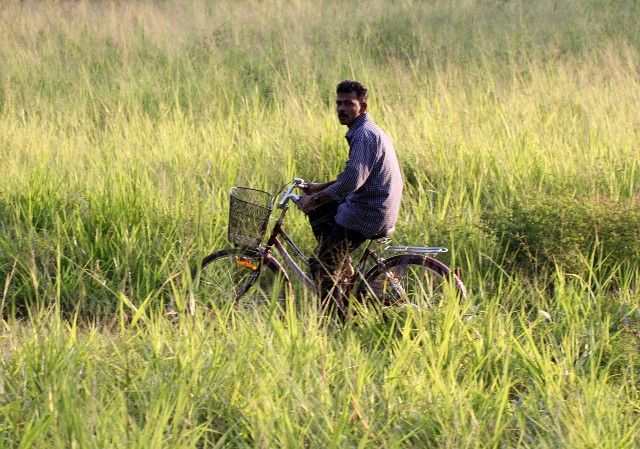
Villager in Sirigiya
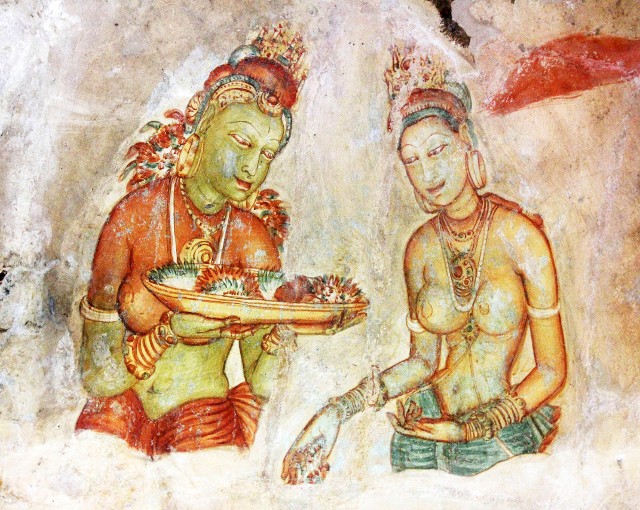
The spectacular murals at the Sirigiya Rock Fortress.
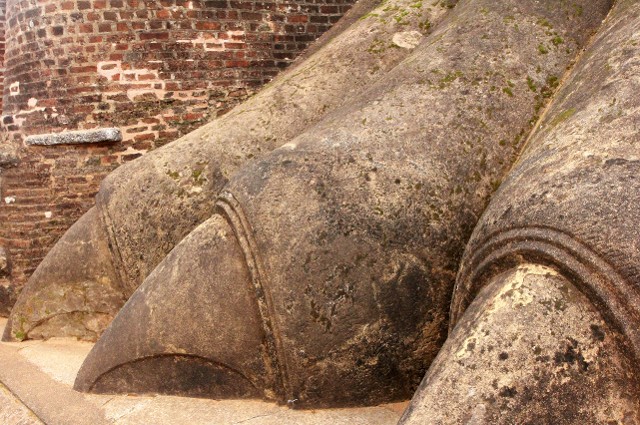
Evidently the front gate to the Sirigiya Rock Fortress was one of the world's great wonders with a massive lion (once thought to have inhabited Sri Lanka) guarding it.
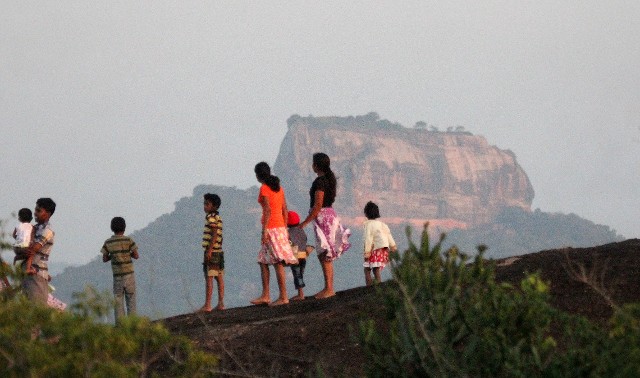
Locals enjoy the view of the Sirigiya Rock Fortress from a distant batholith.
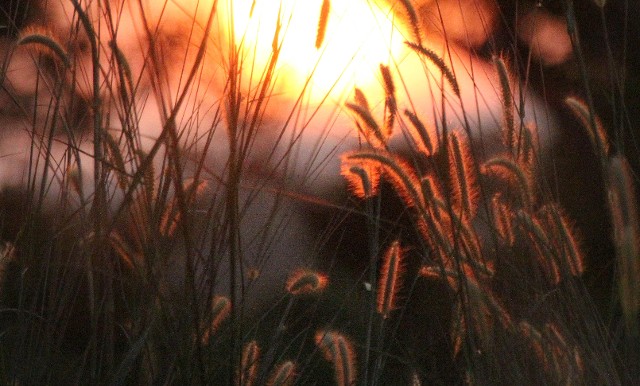
Another spectacular Sirigiya sunset!

My favorite wildlife photographer!

Uditha got good use out of the 600! He is working on a challenging book project - a pictorial guide of ALL of the birds of Sri Lanka. He definitely got a few images for the book on this trip.
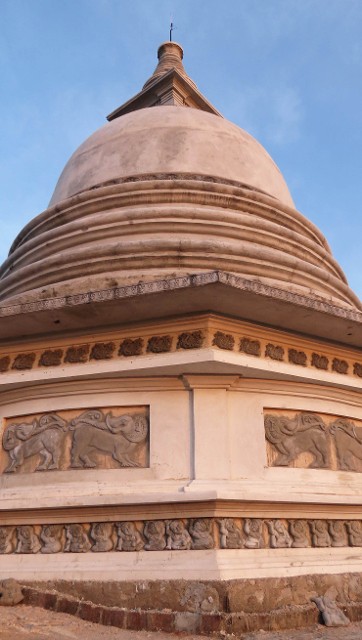
One of the millions of stupas everywhere in Sirigiya!

The place is somehow more spectacular with Som in the scene!

The view of the fortress grounds from the rock.

Kirinda's rural countryside, just outside Yala National Park. Great birding spot!

Enjoying a great lunch at Udawalawa NP.

One of the many giant Ficus trees in Udawalawa.
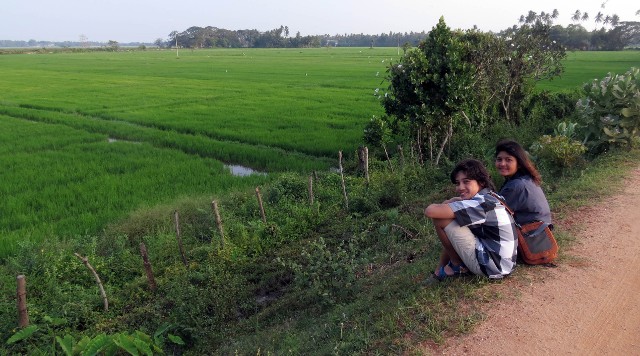
Kickin' back just outside Yala. What a spectacular stroll this was through the rice fields and wetlands of Yala.

Cokie helping Uditha lug the big one!
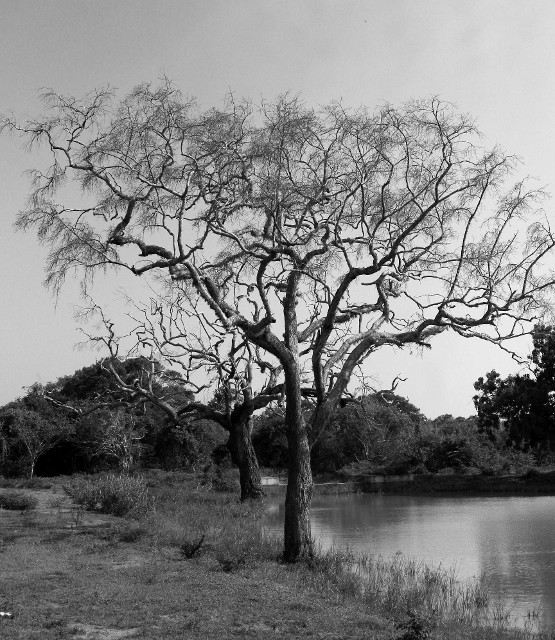
Yala
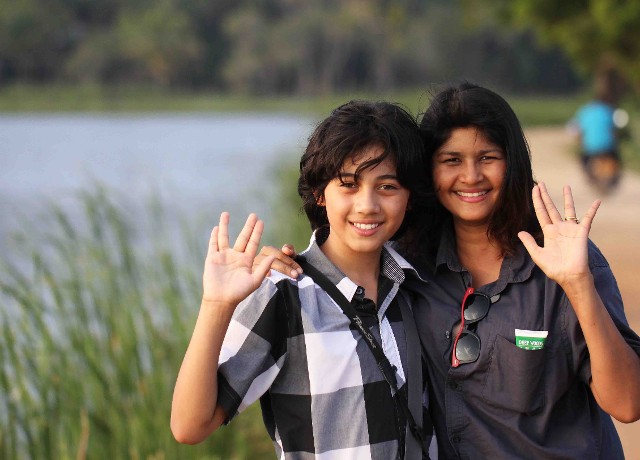
Hoping to have many, many more adventures like this one, of course we hope to "Live Long and Prosper!"

Spectacular Udawalawa Sunrise
Take a look at our Pbase Galleries for more images of Sri Lanka!
Wildlife Expedition to Sri Lanka
